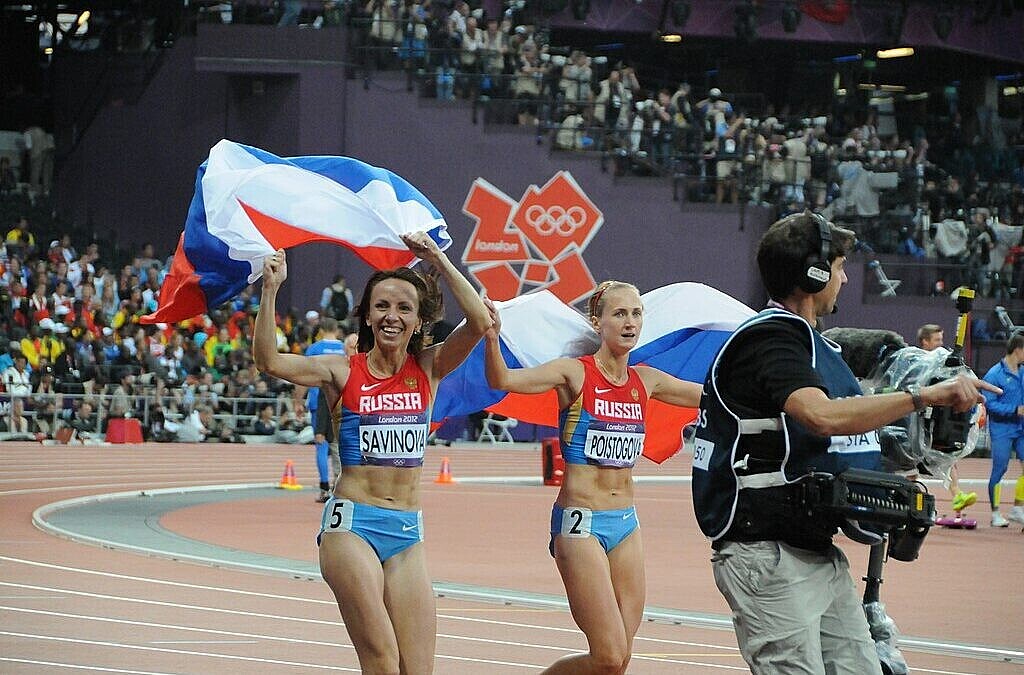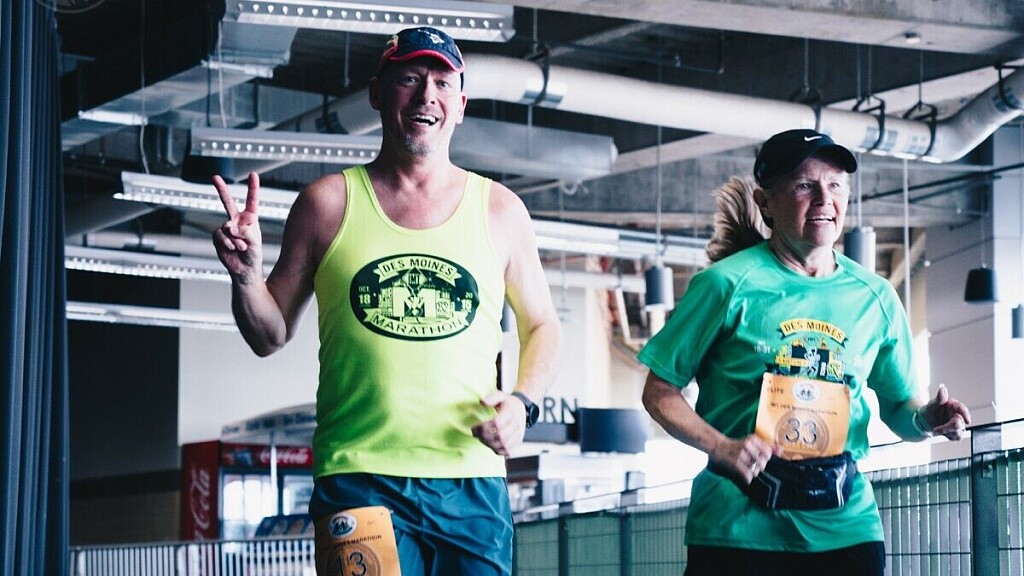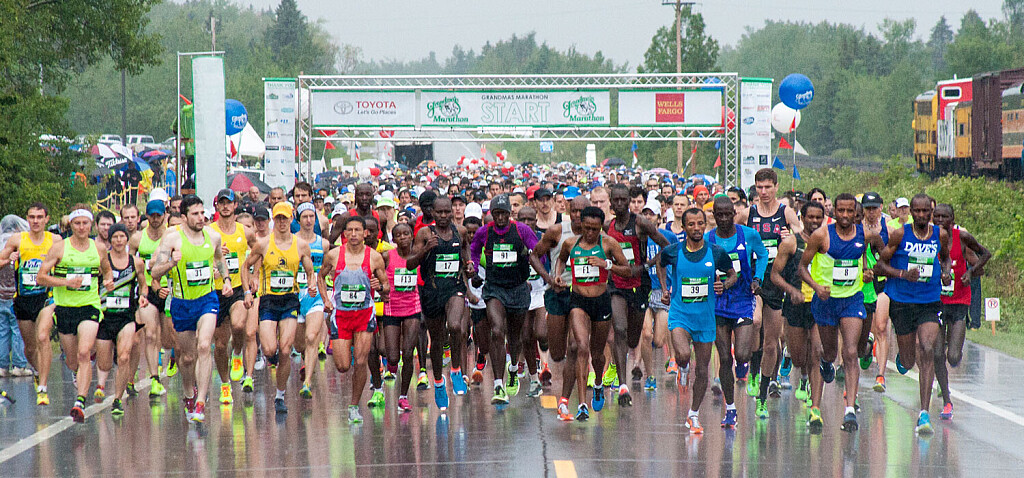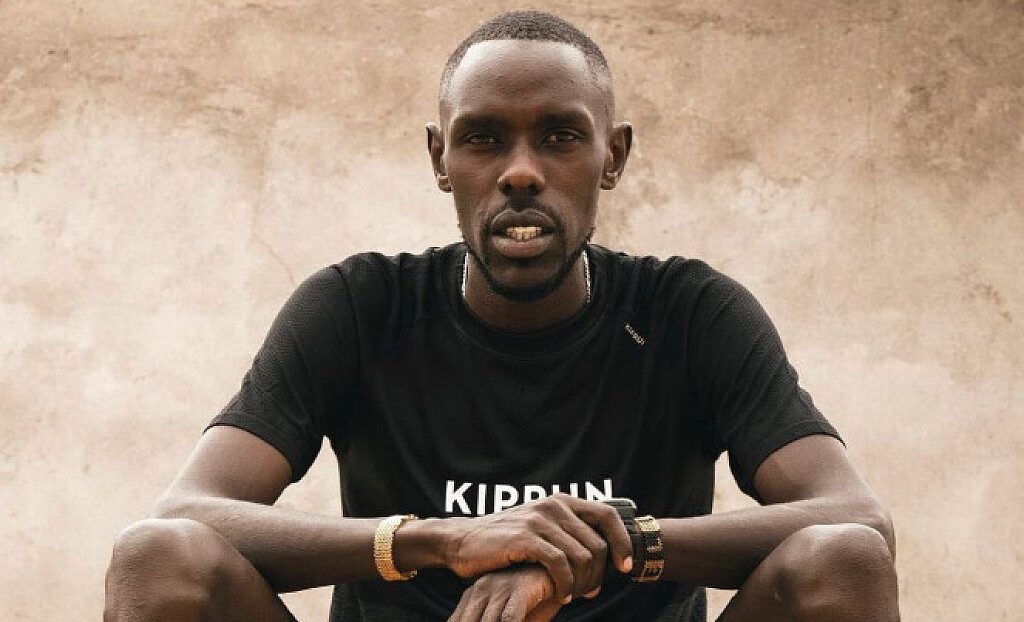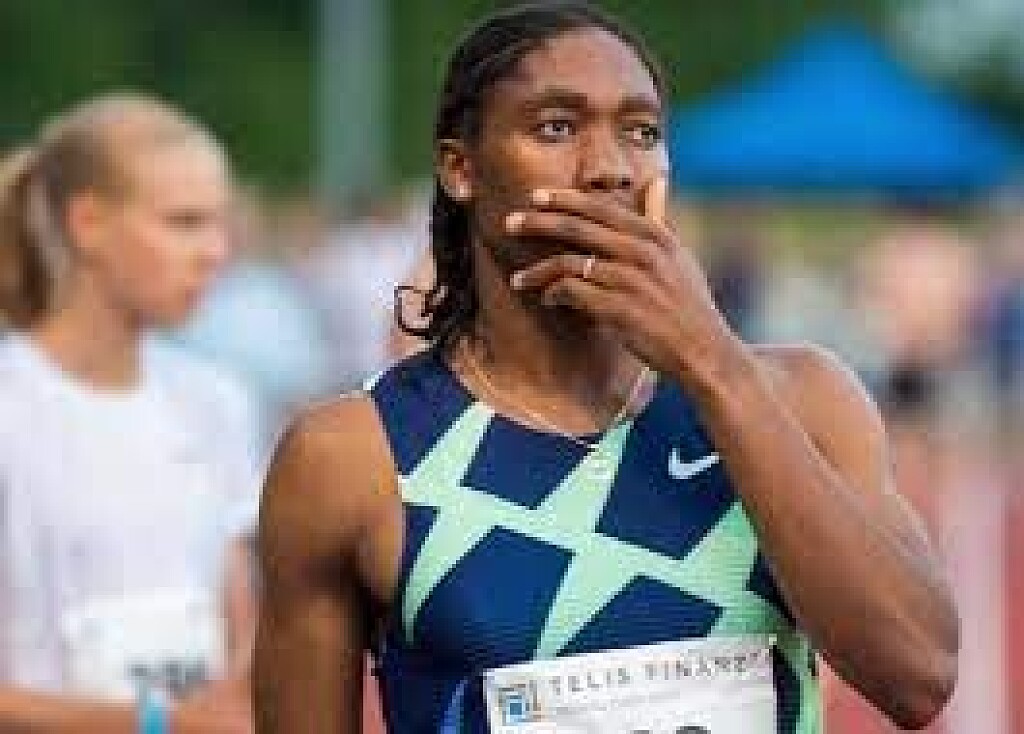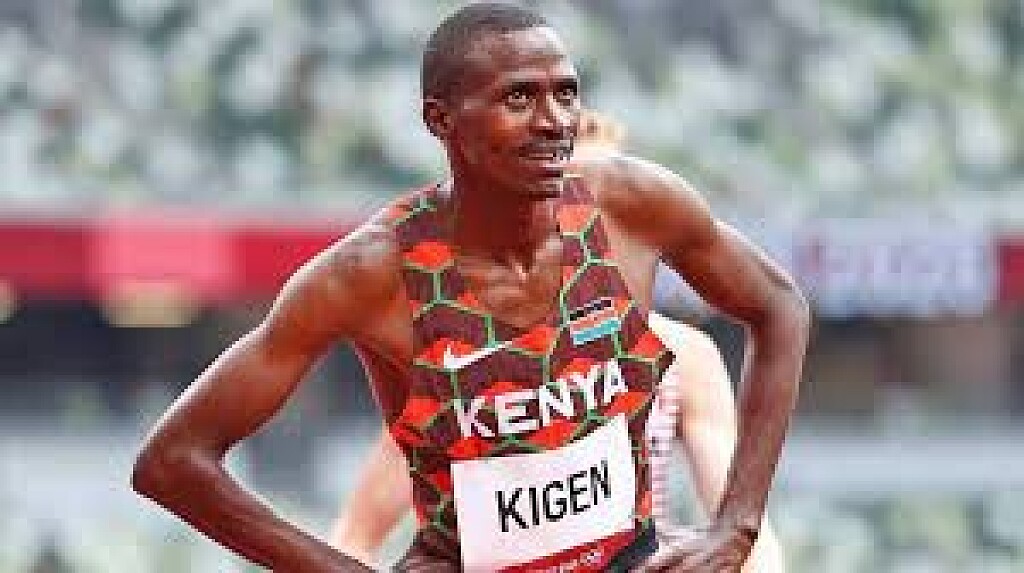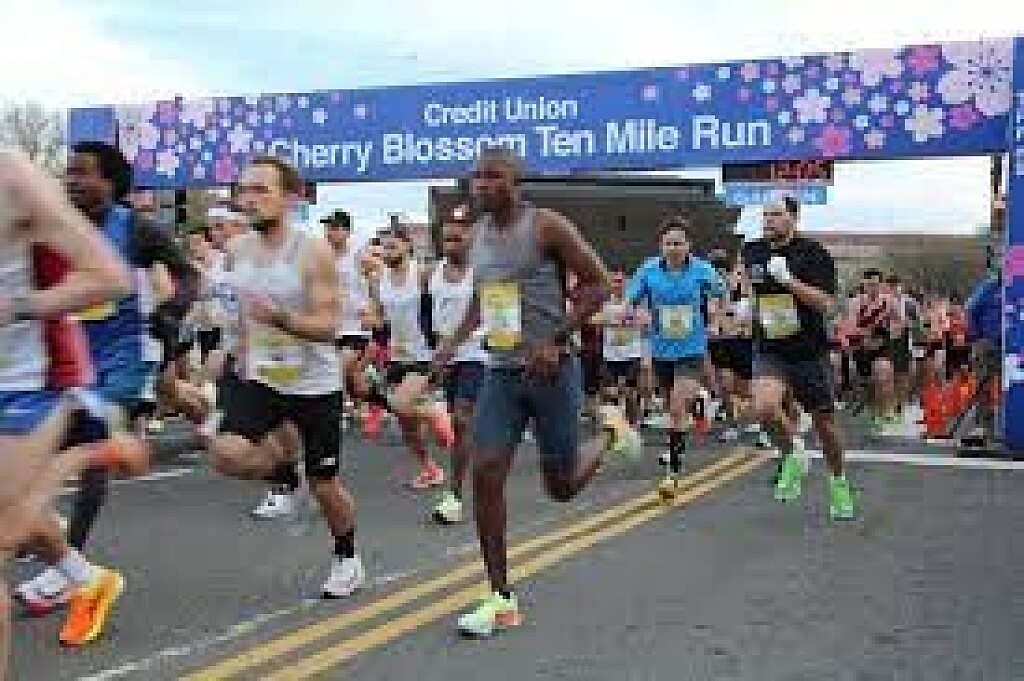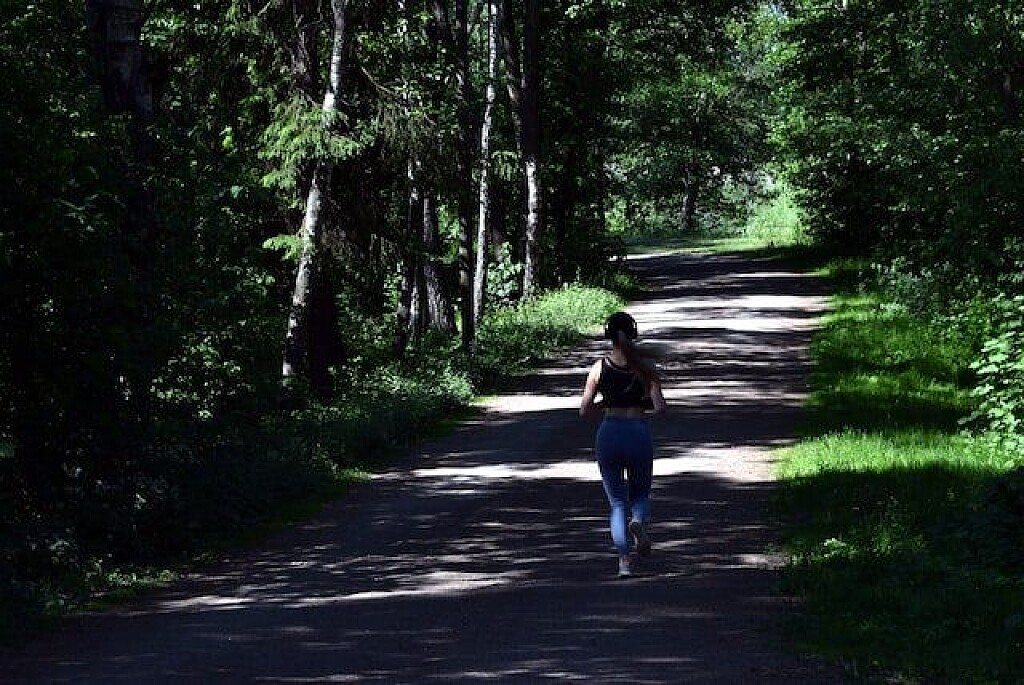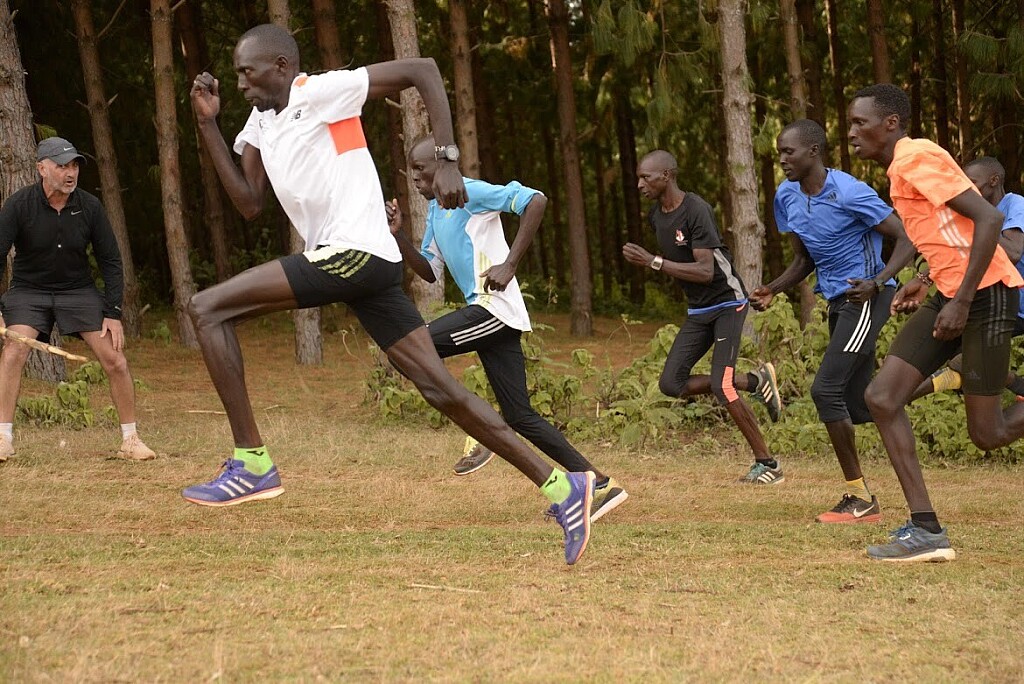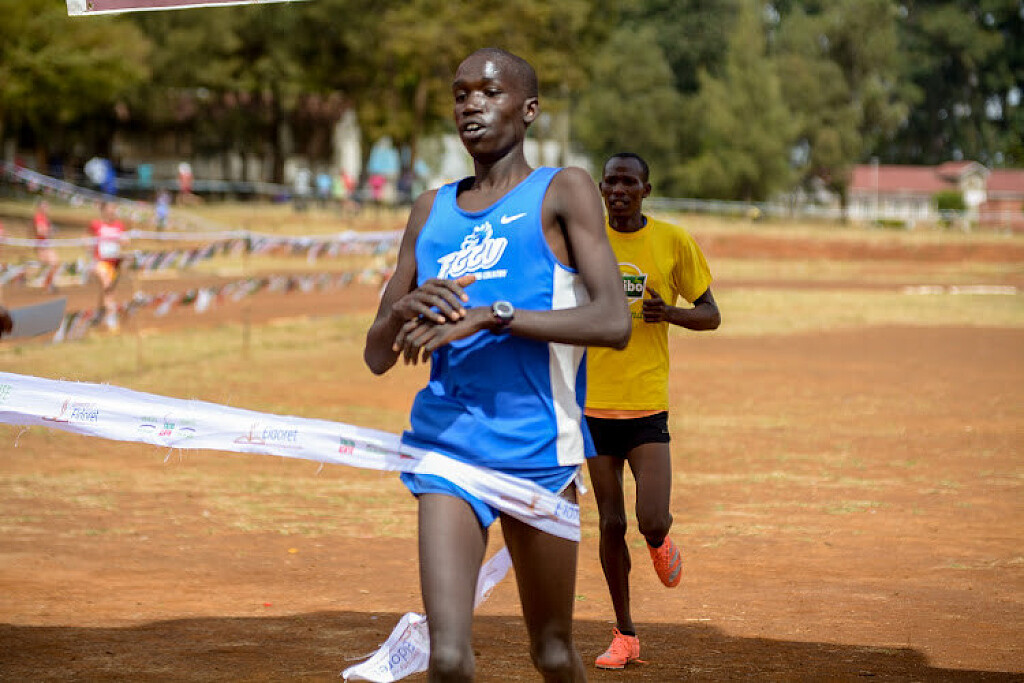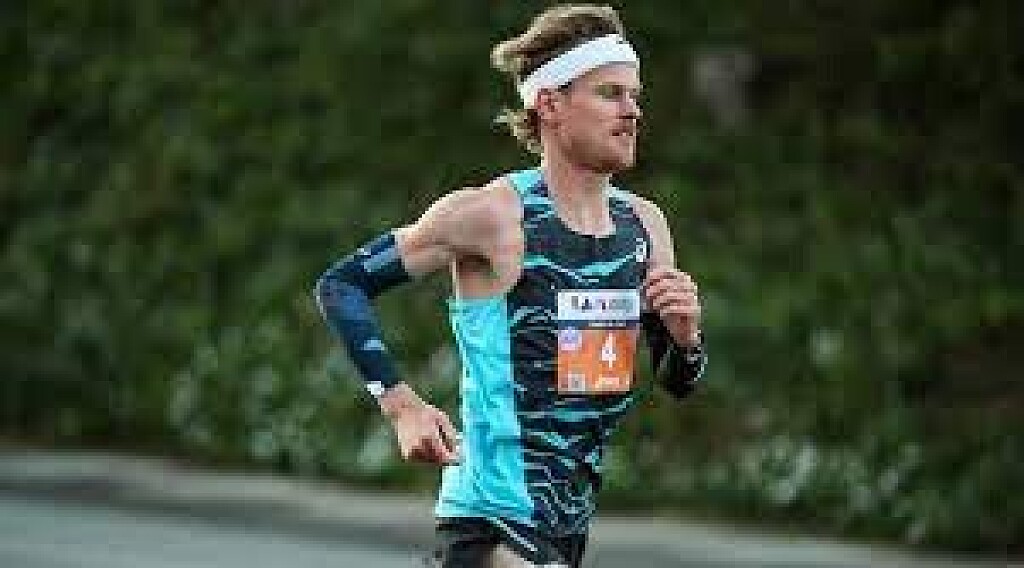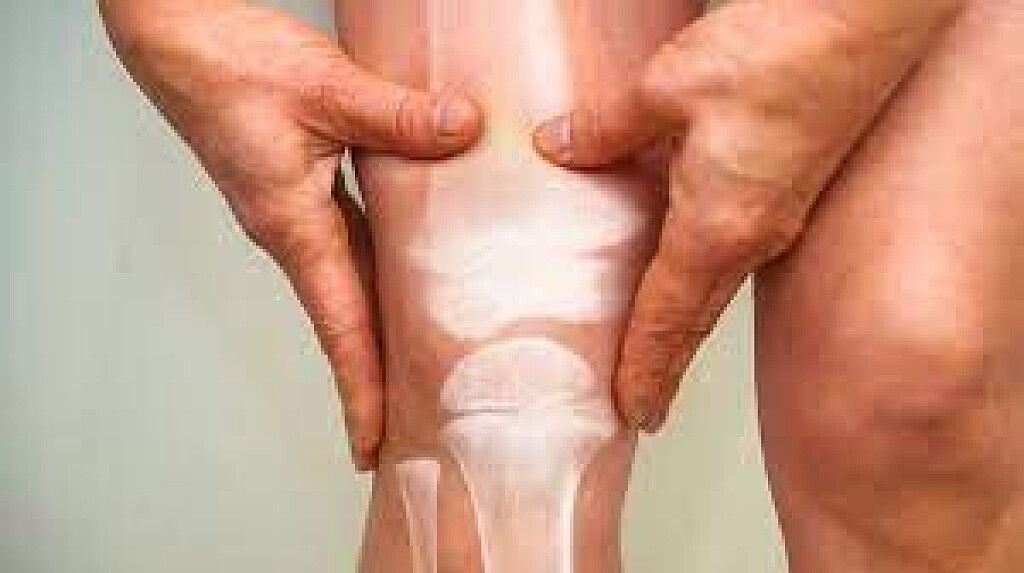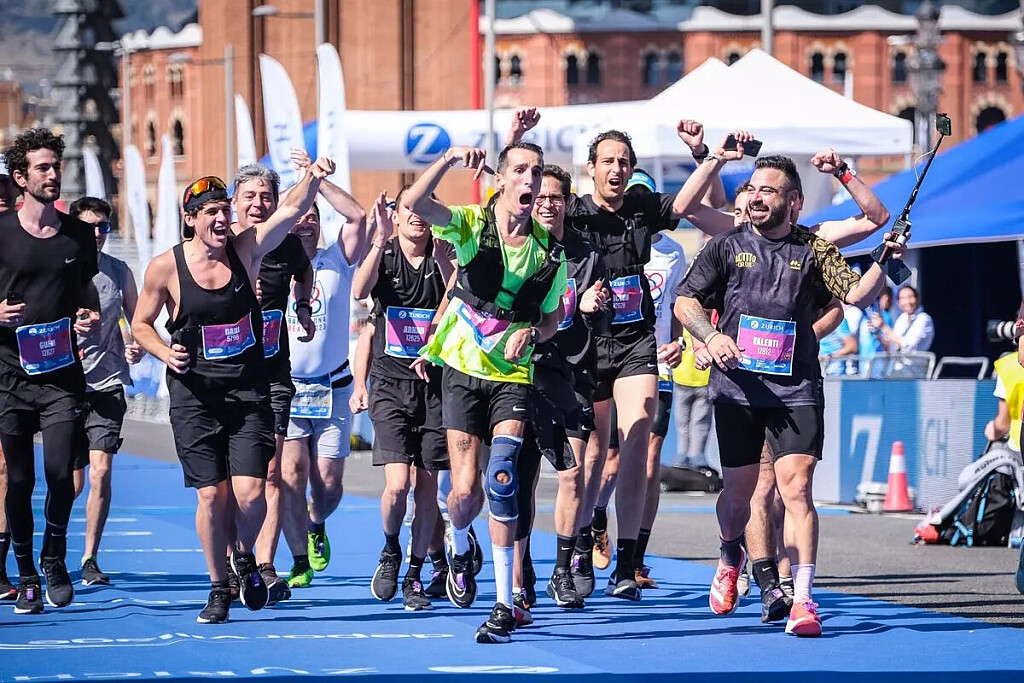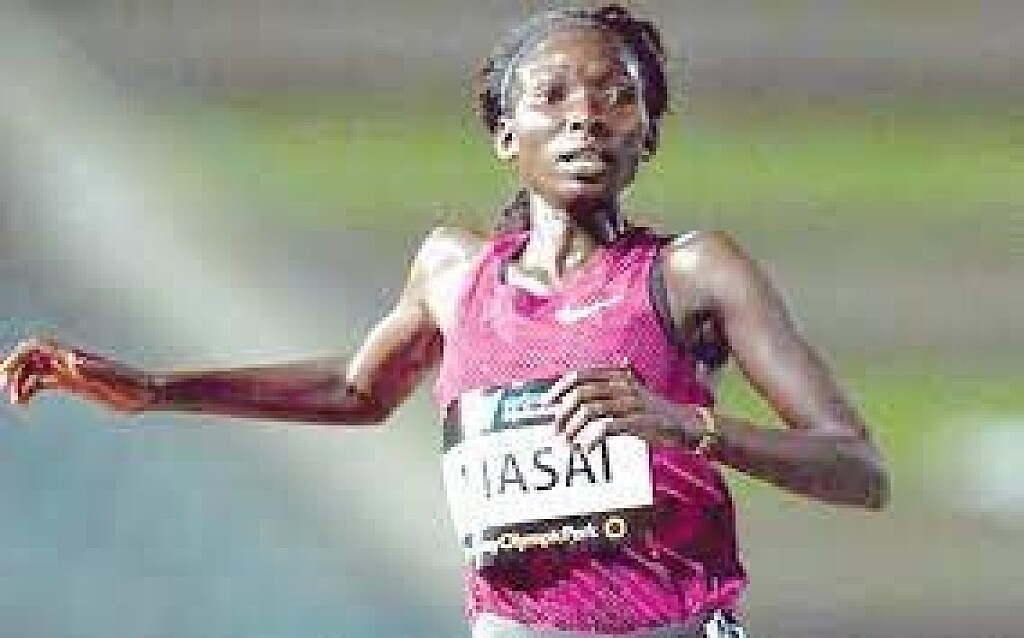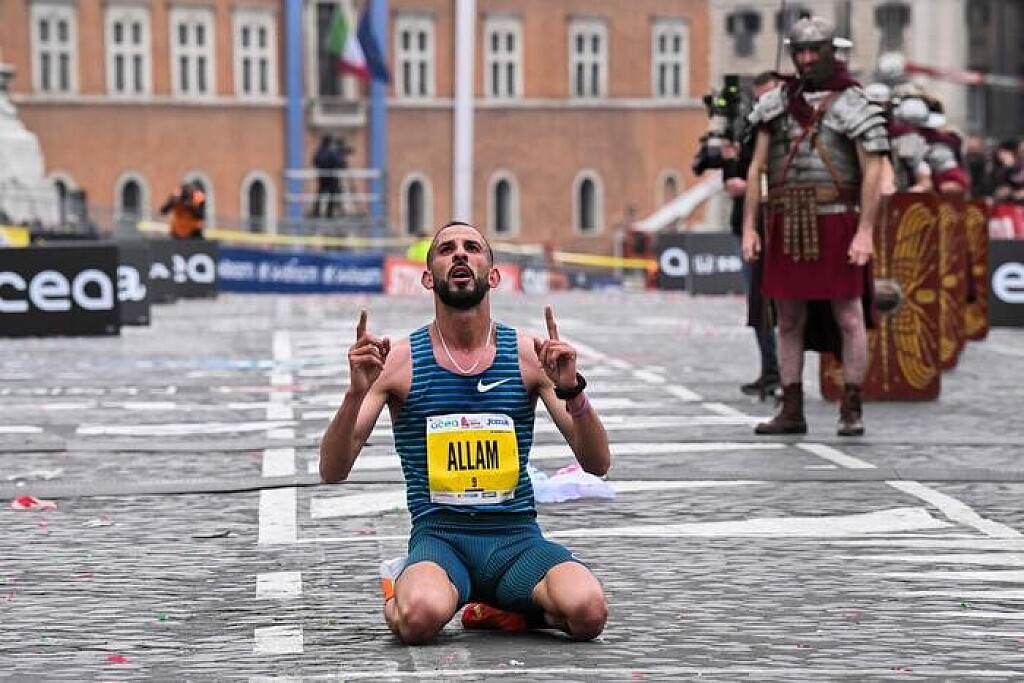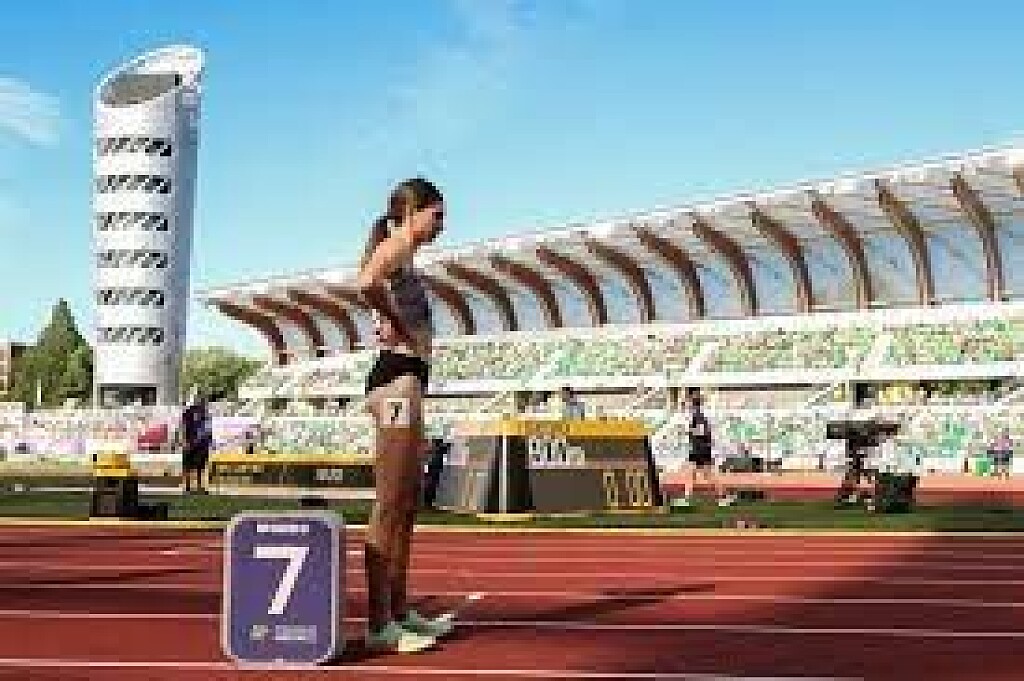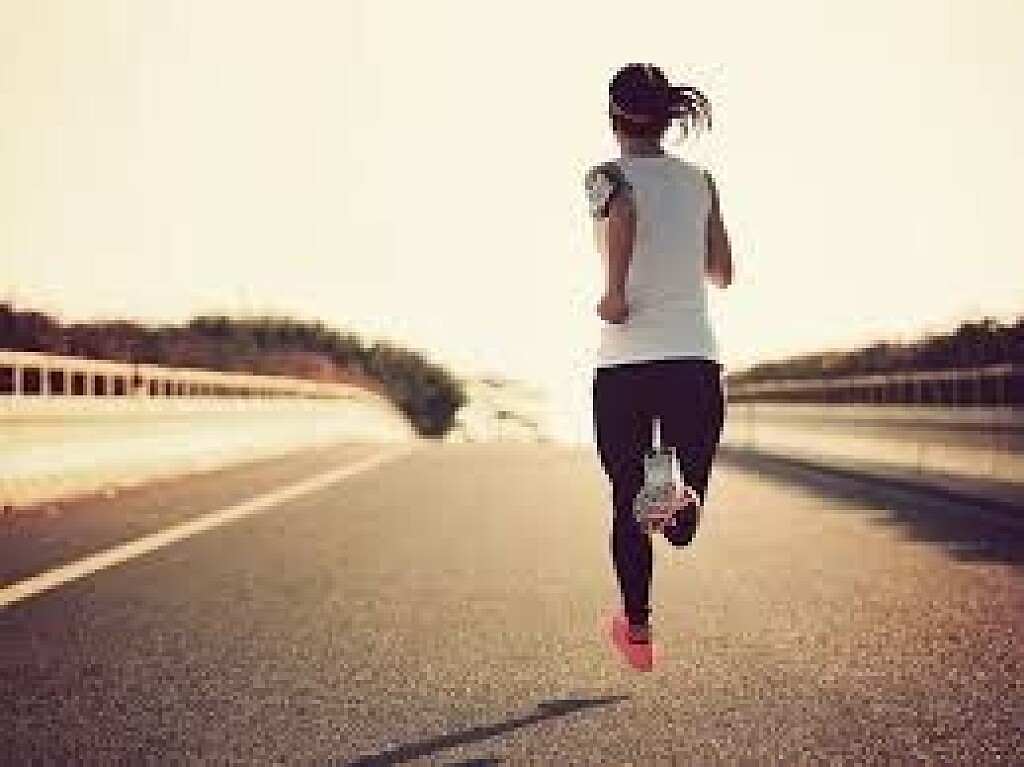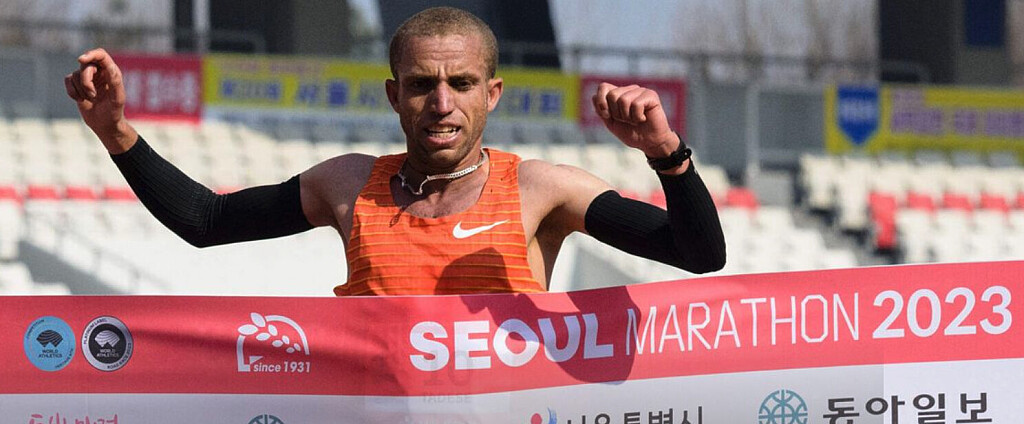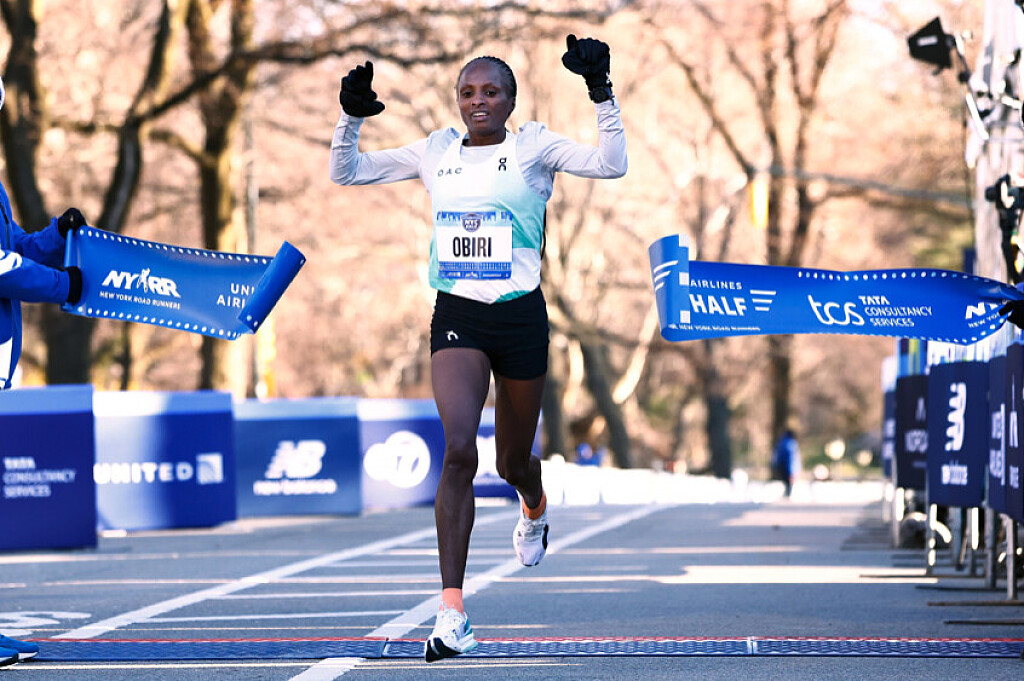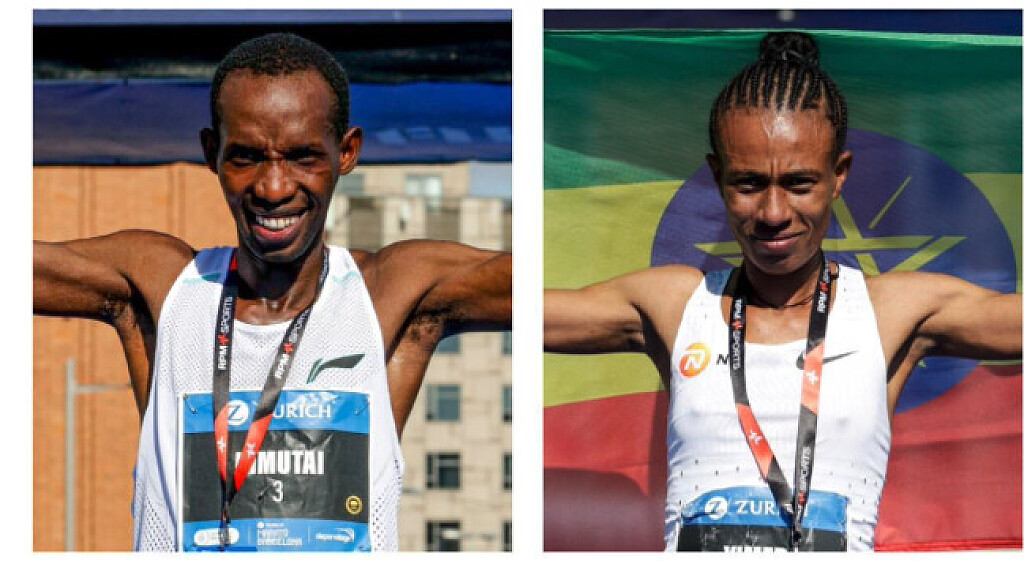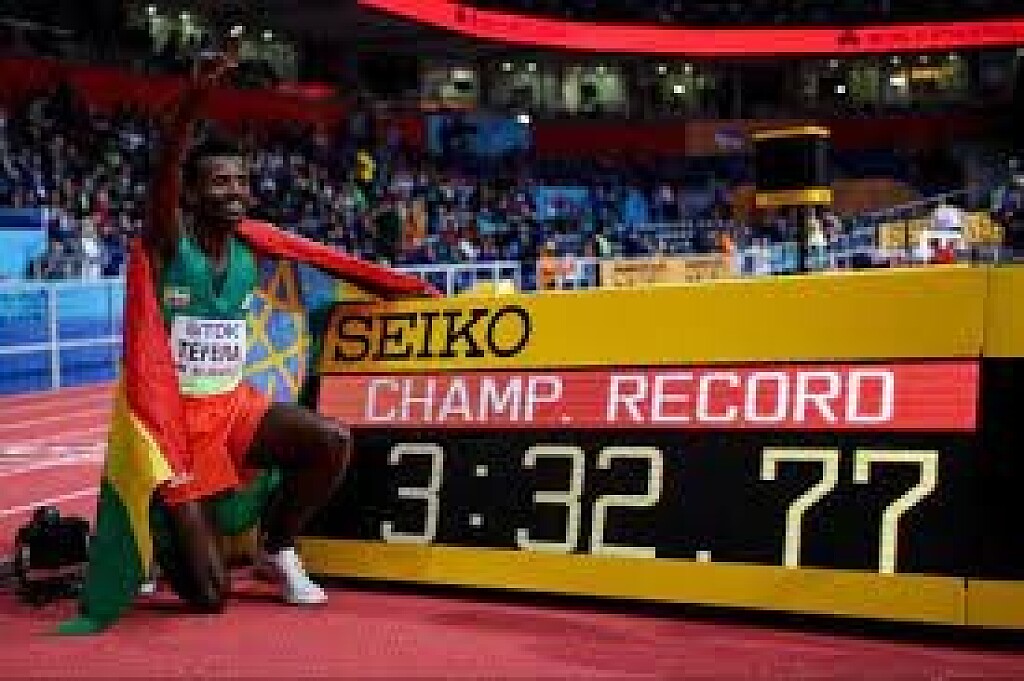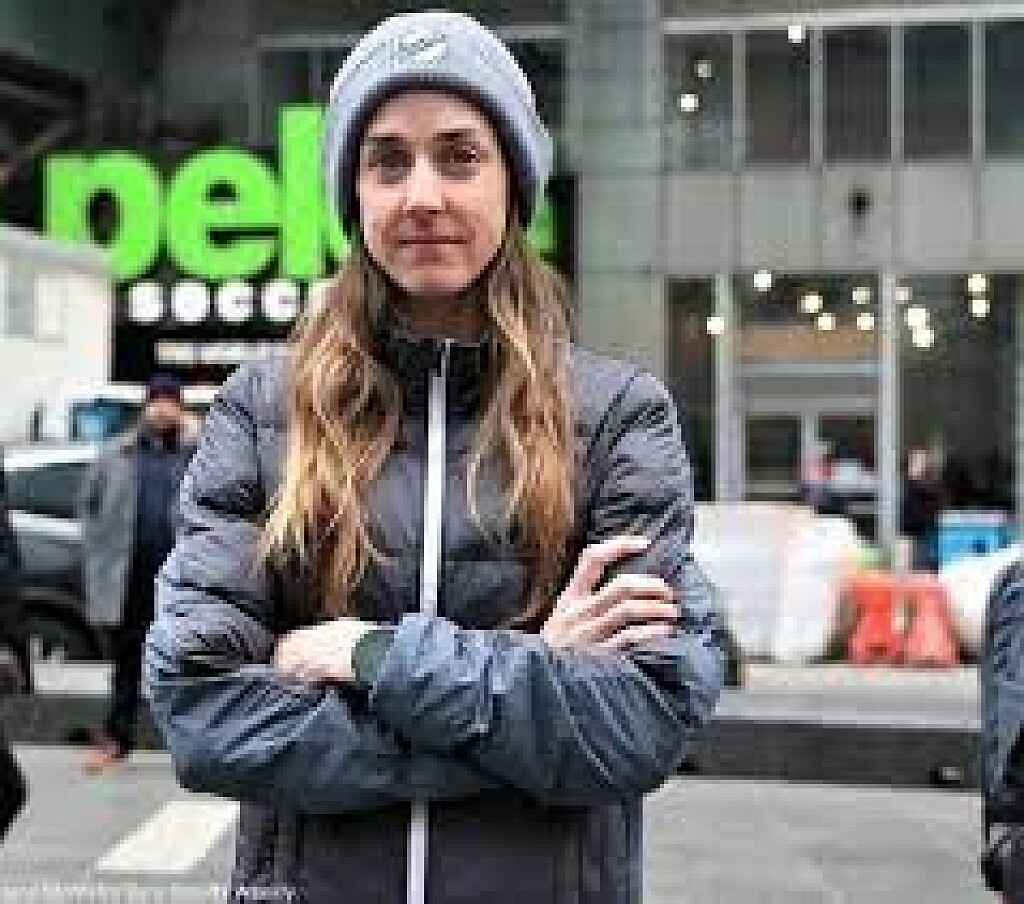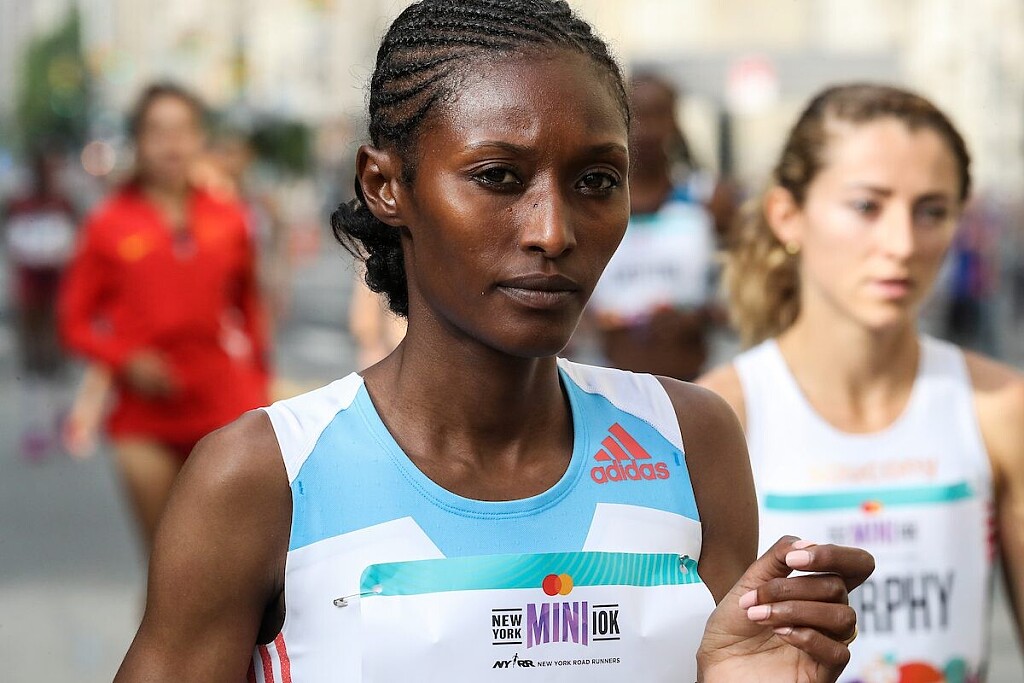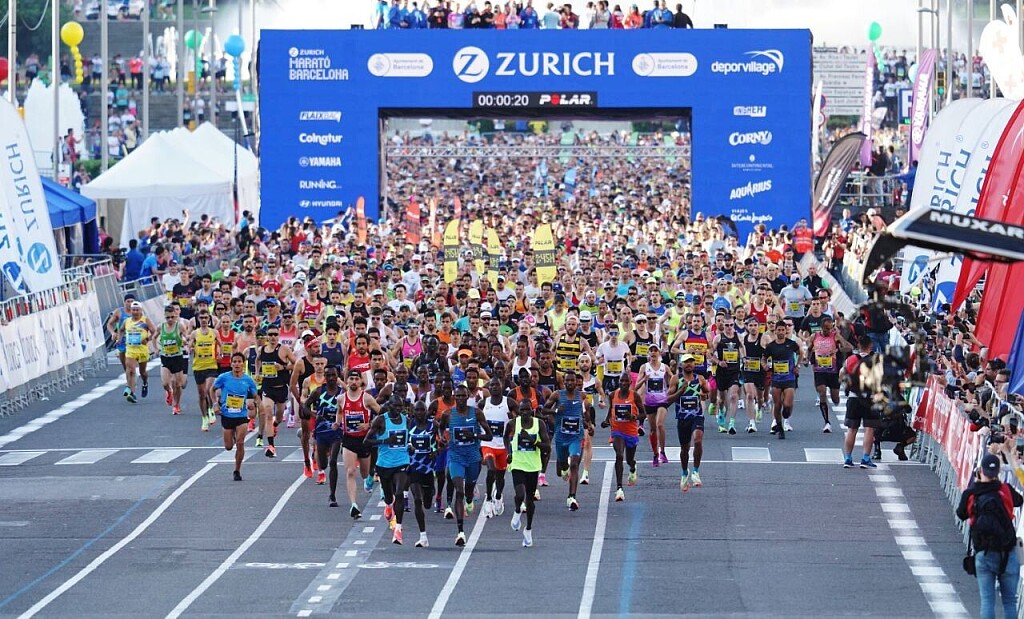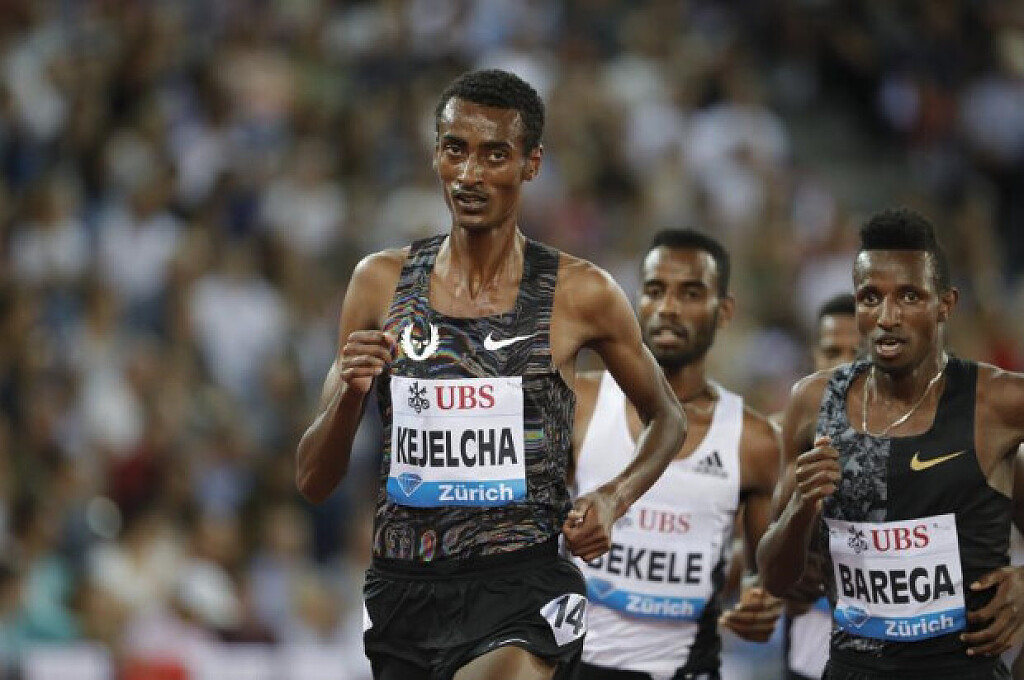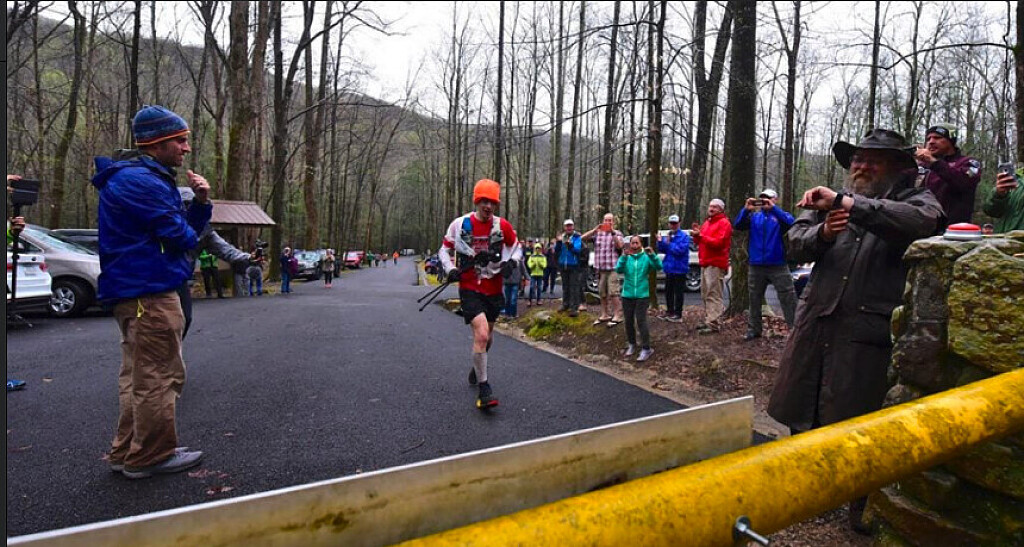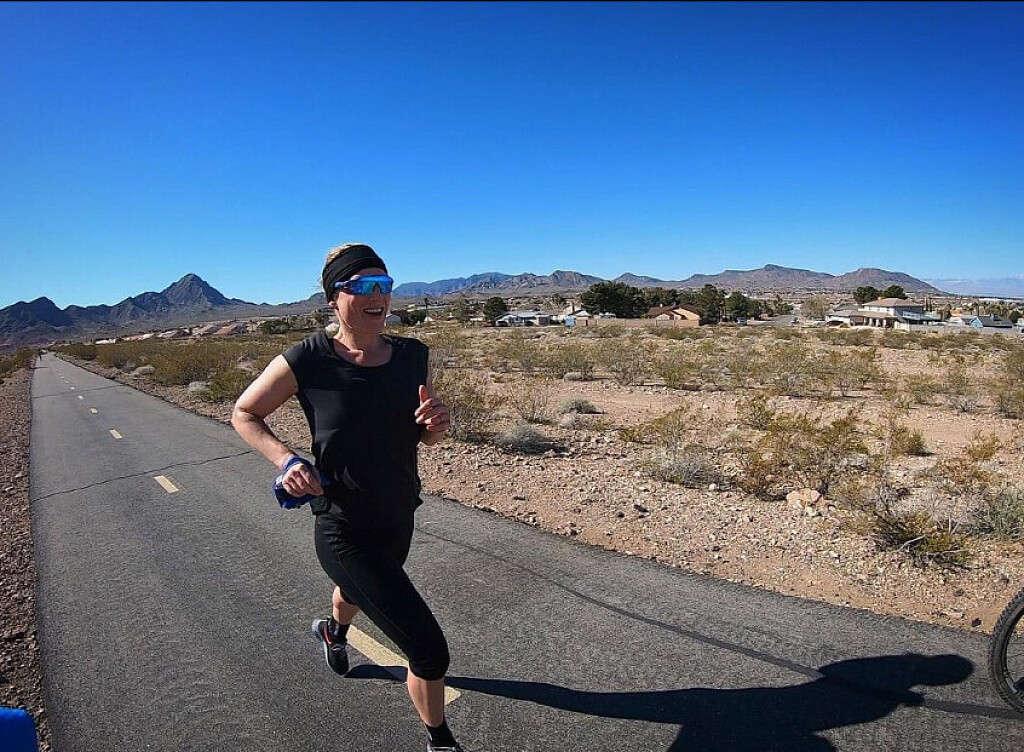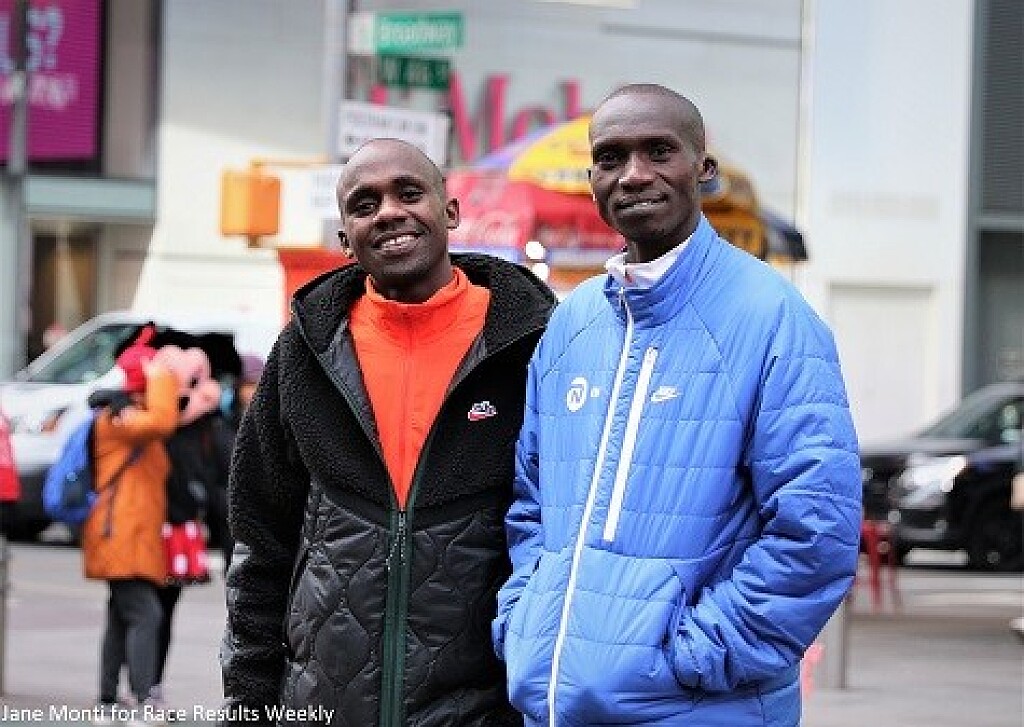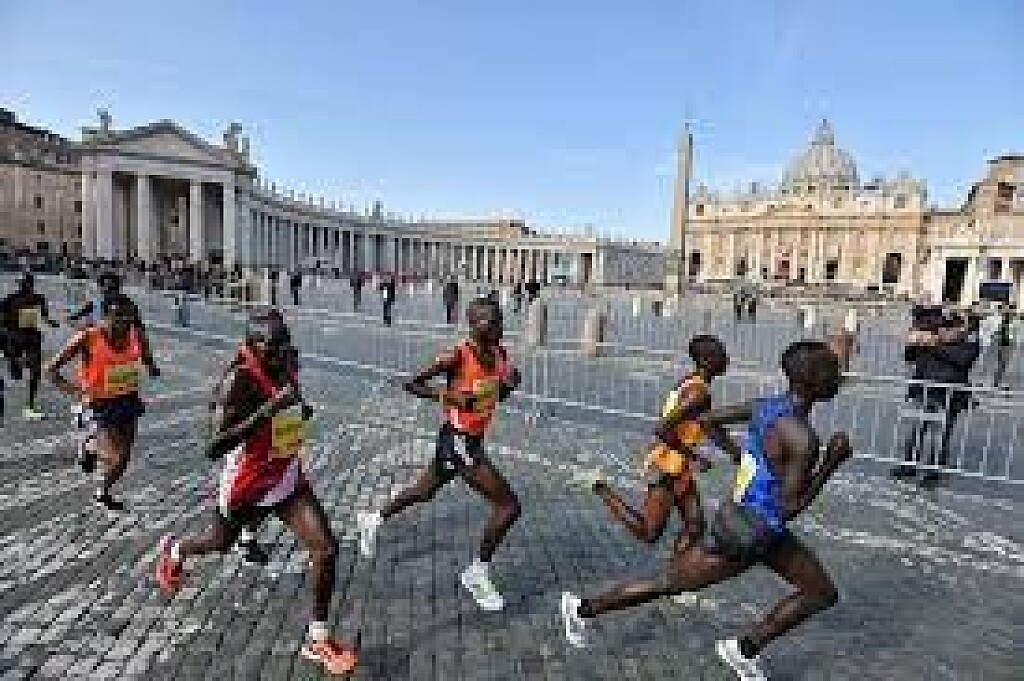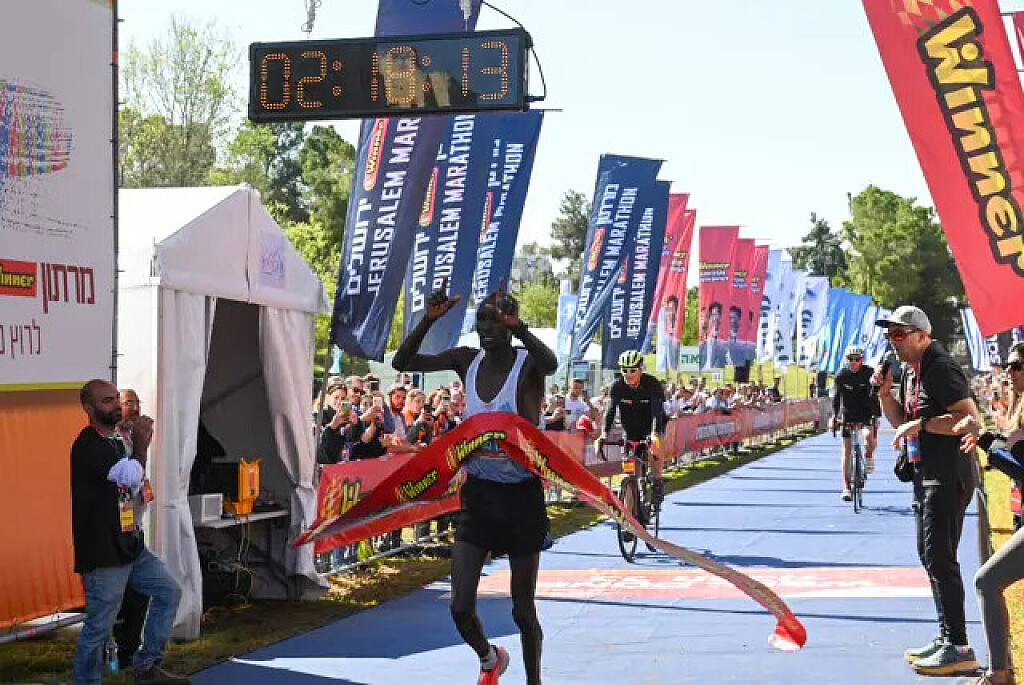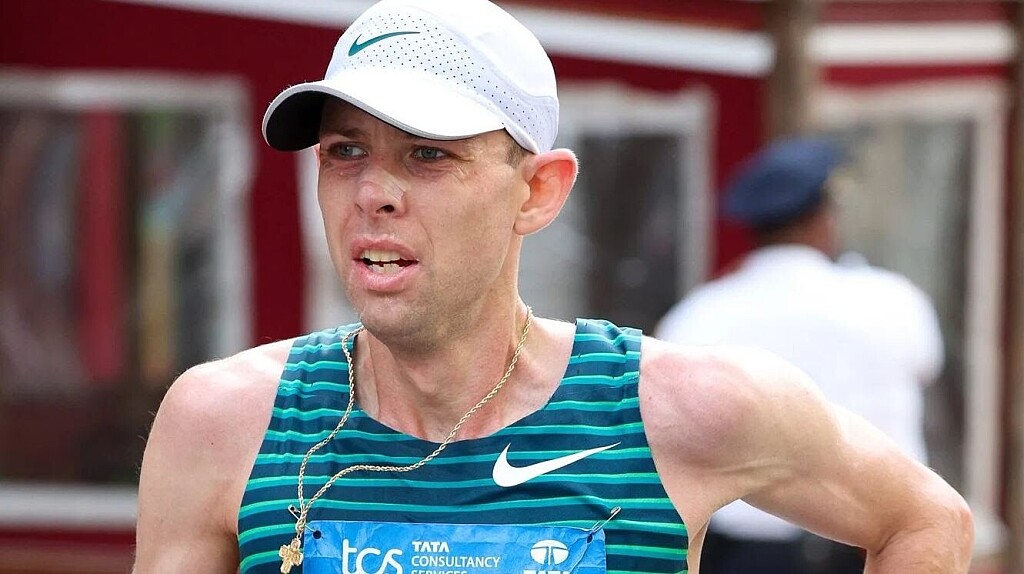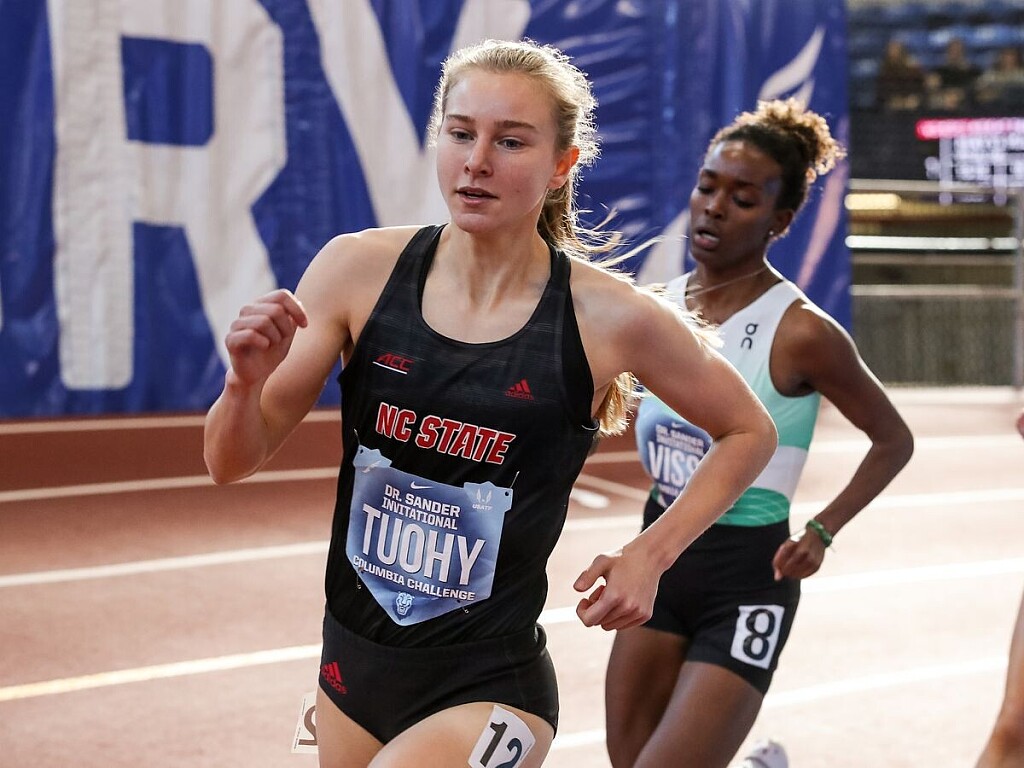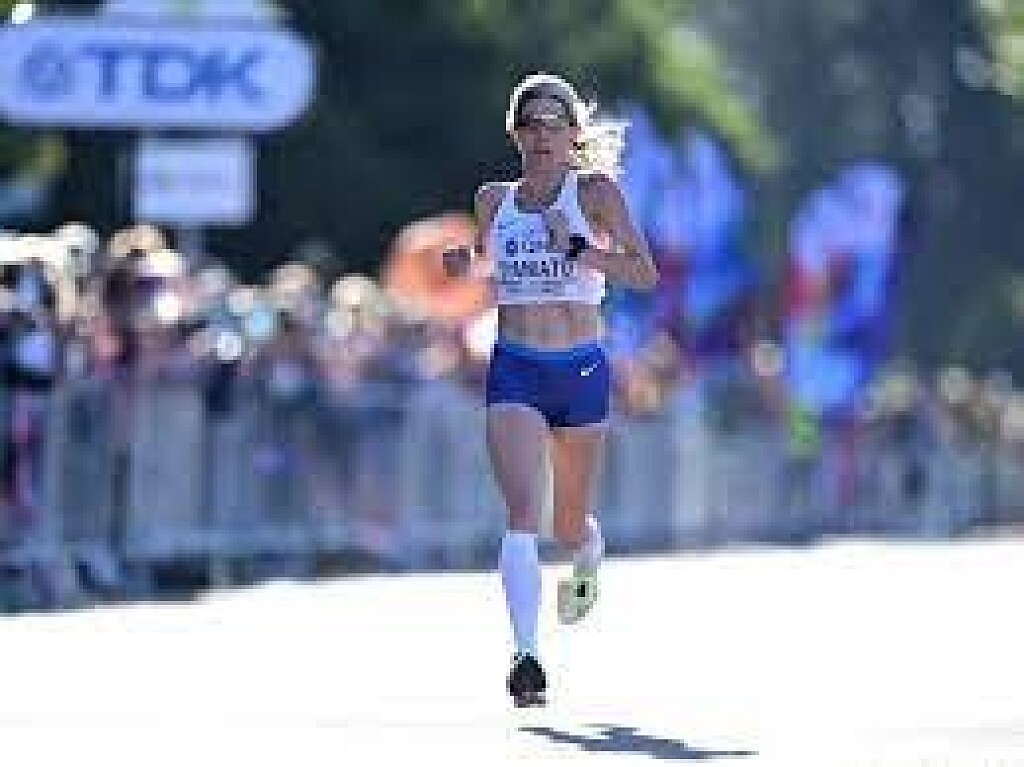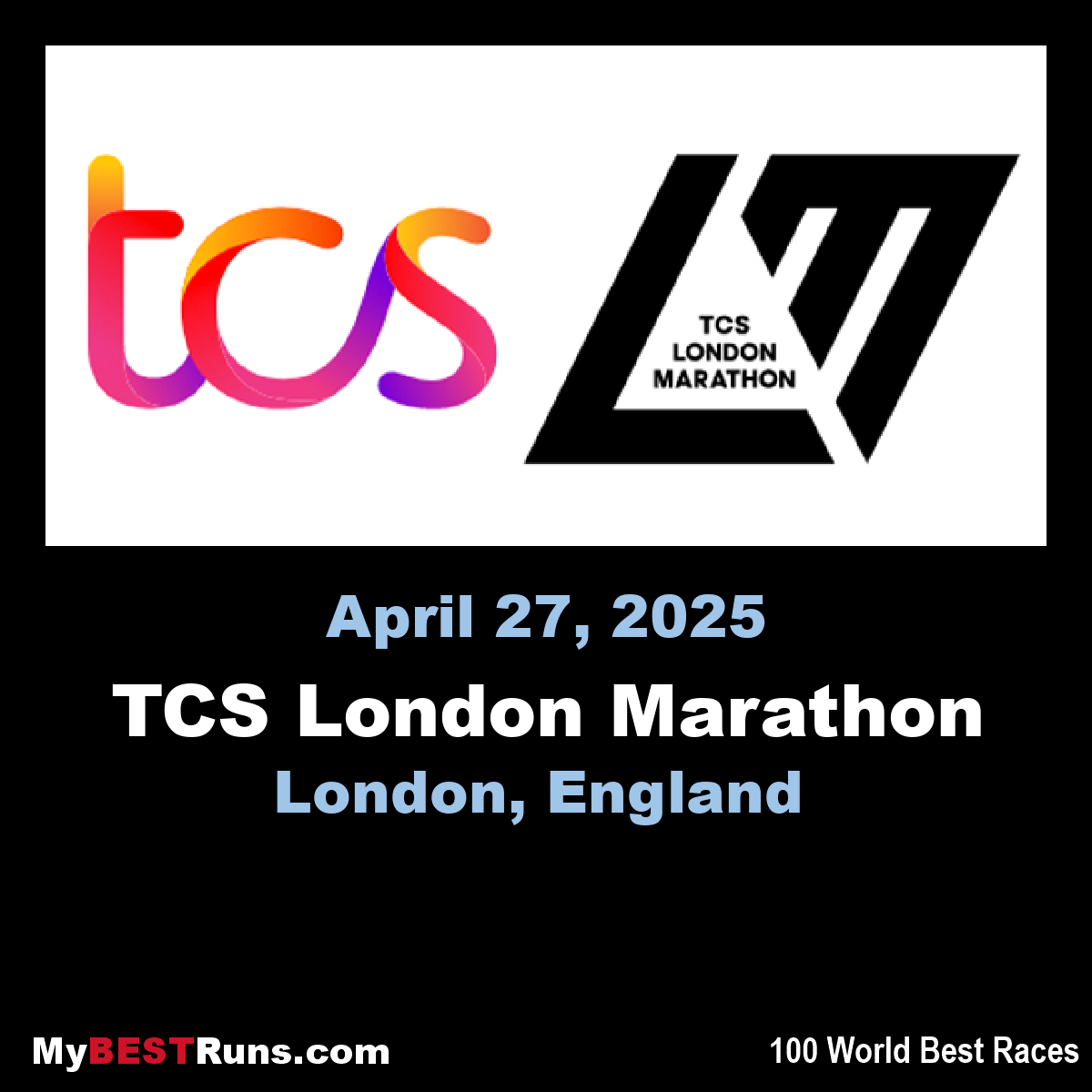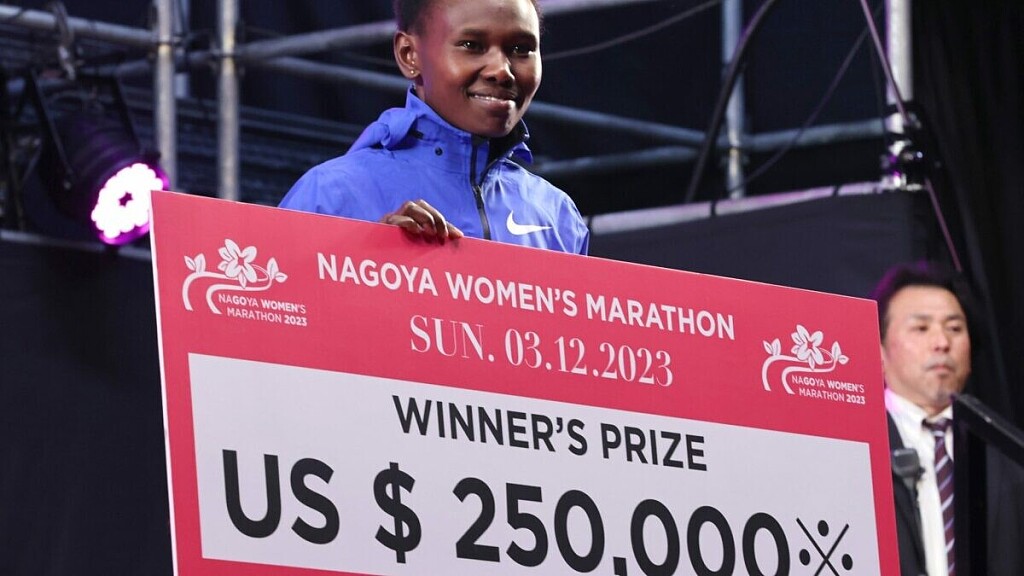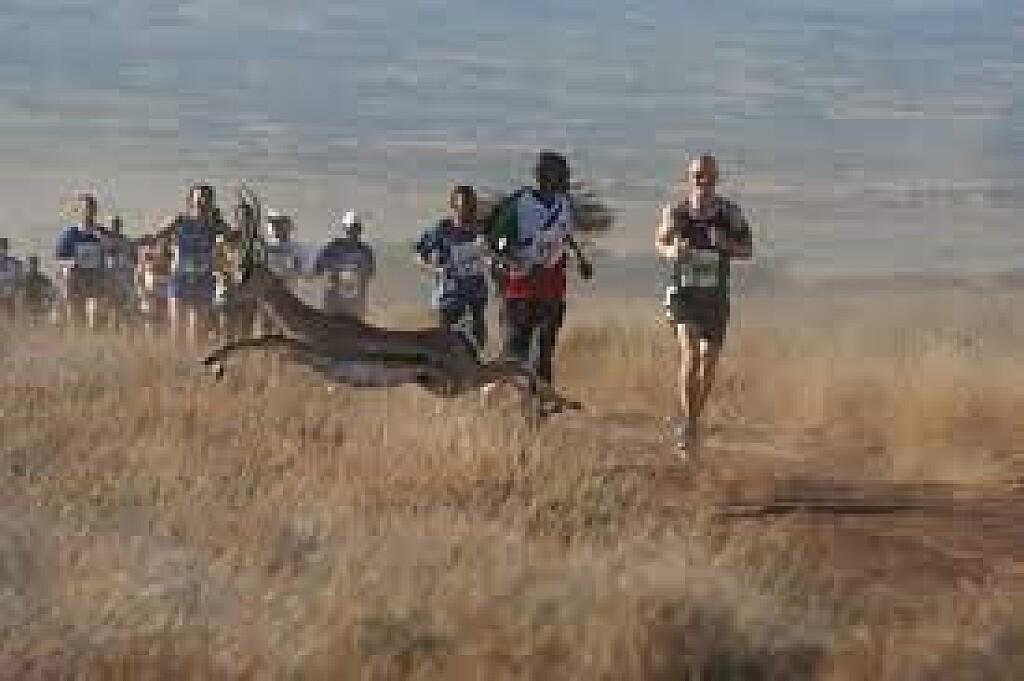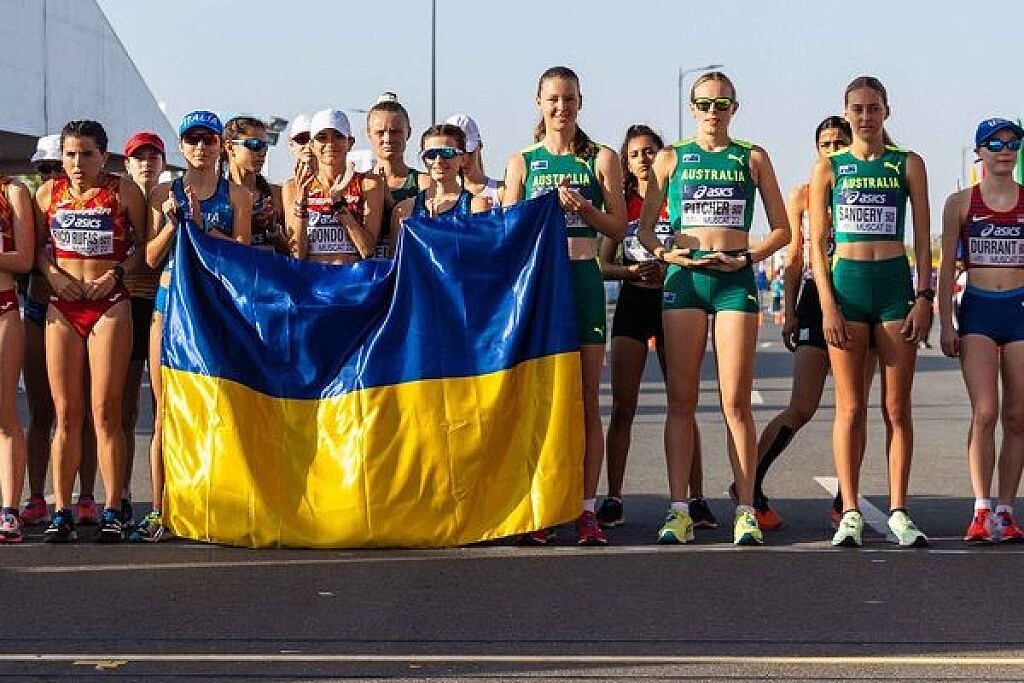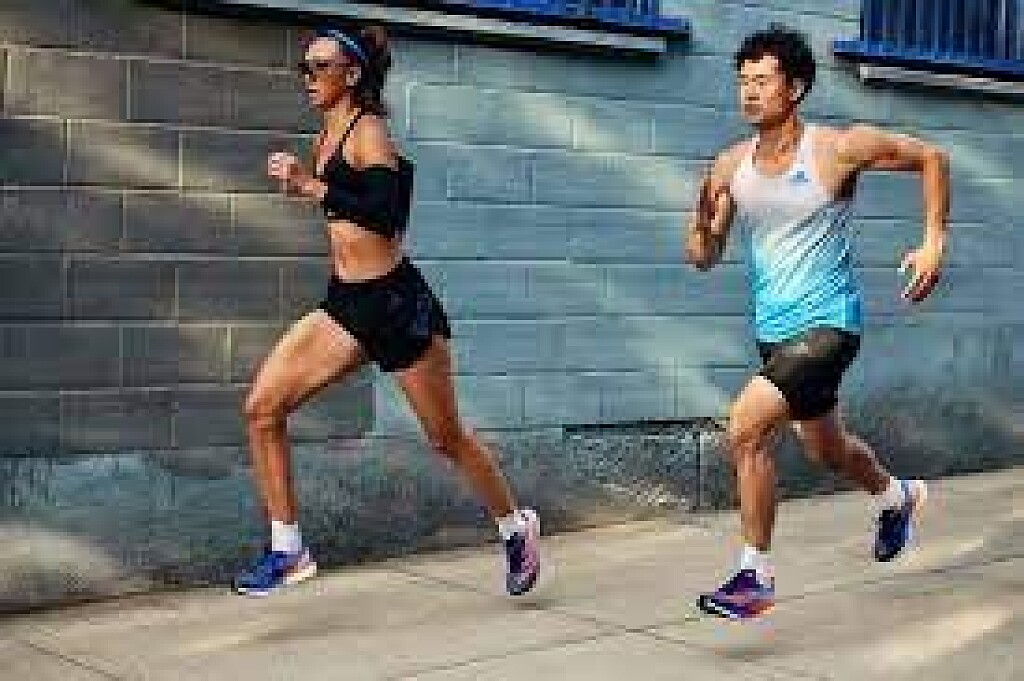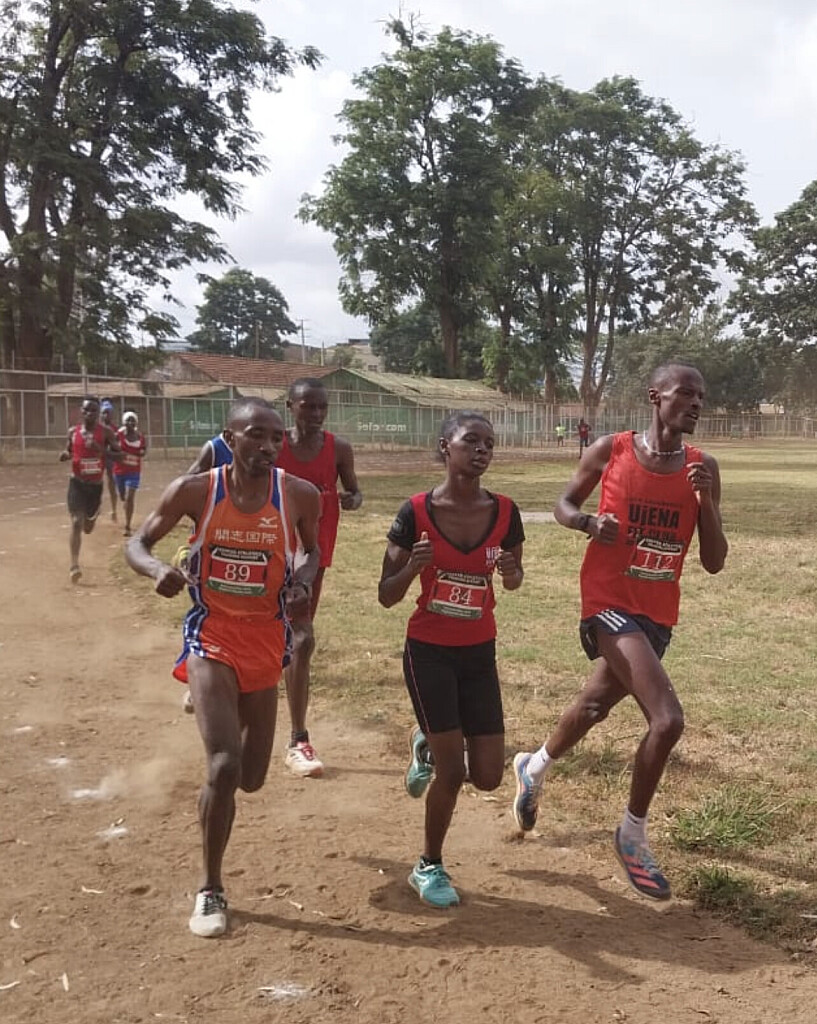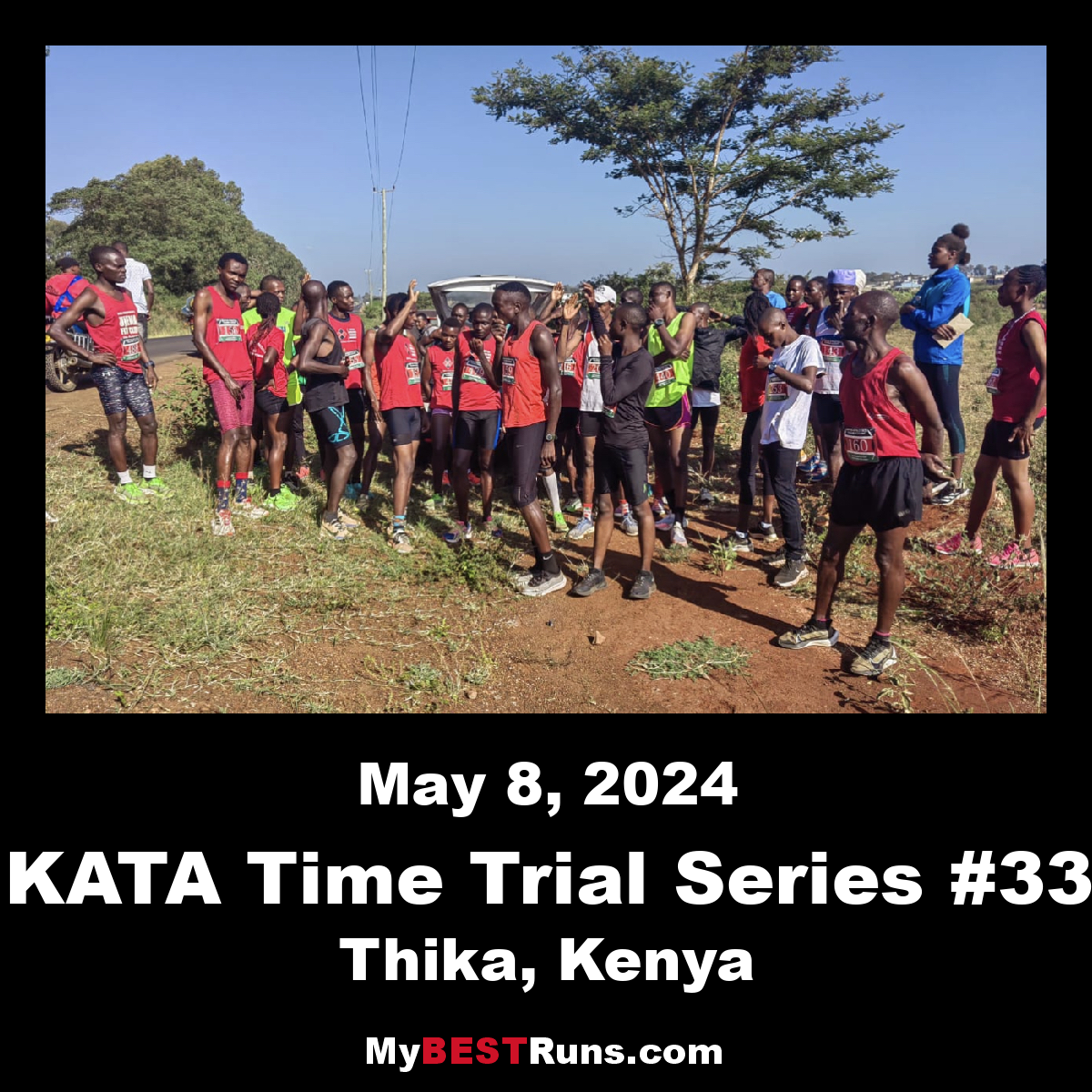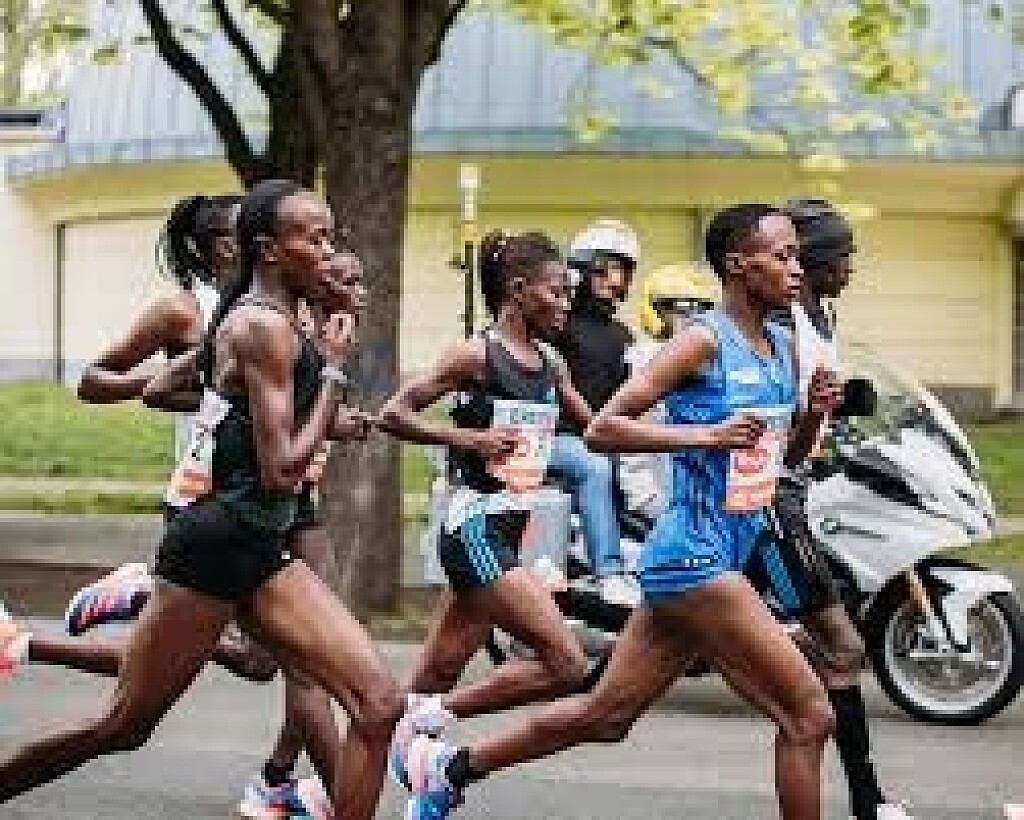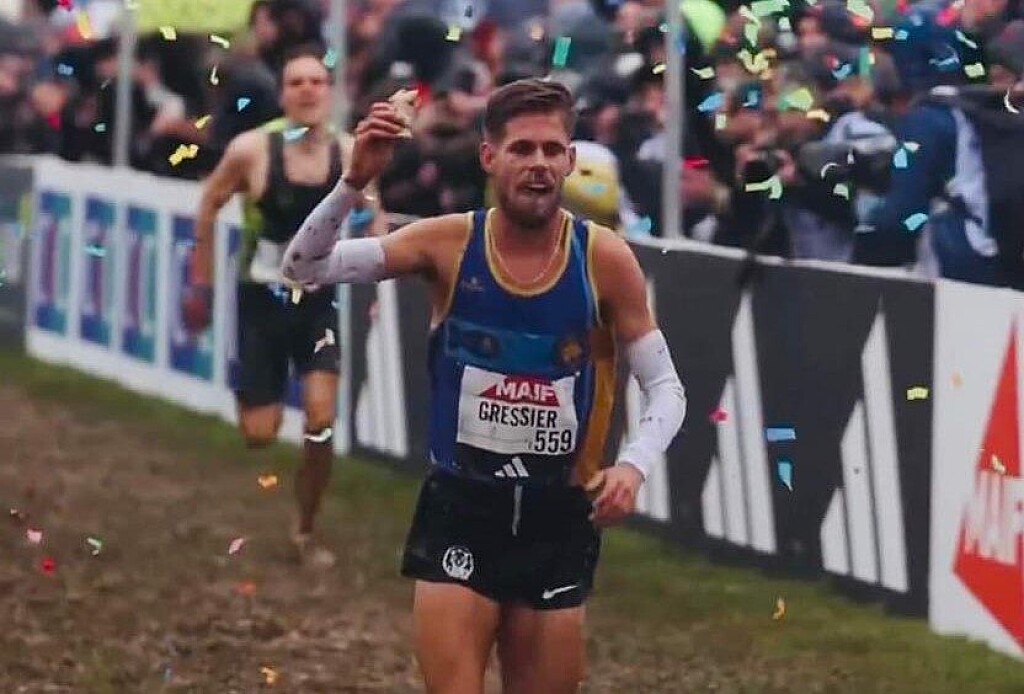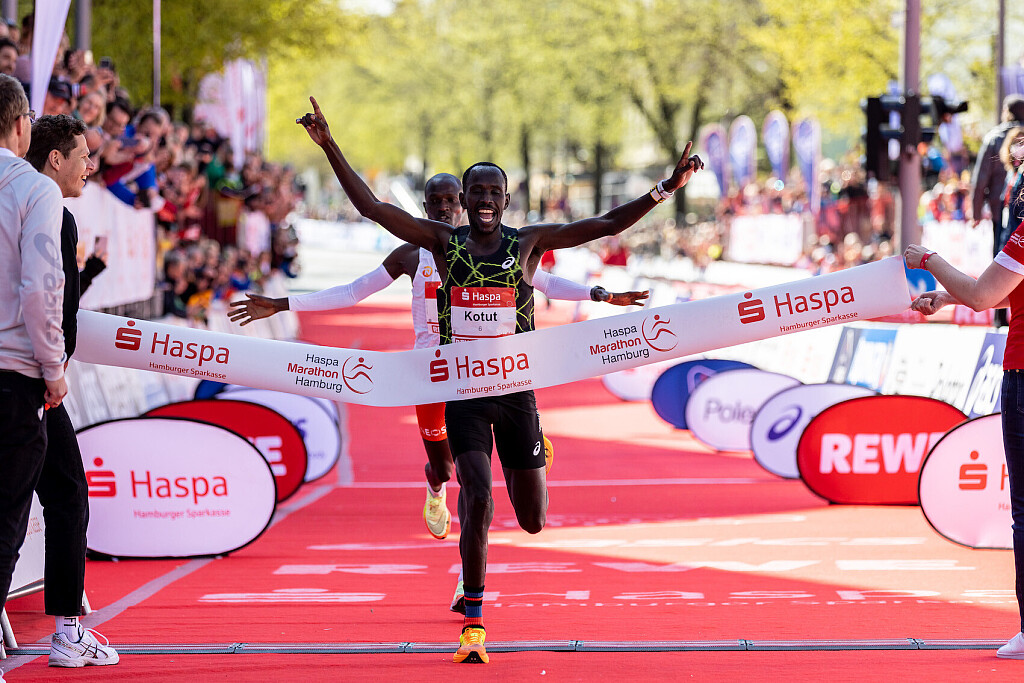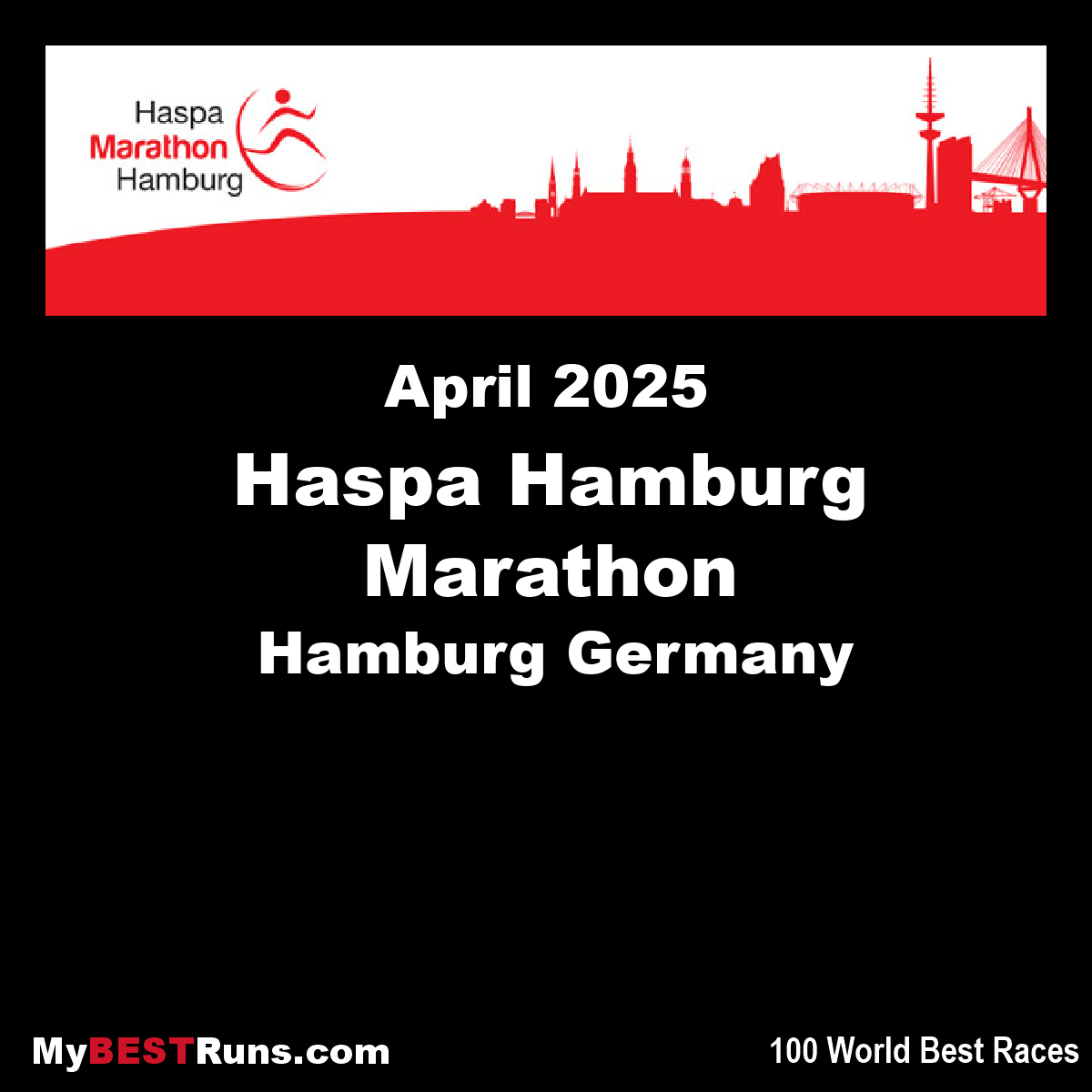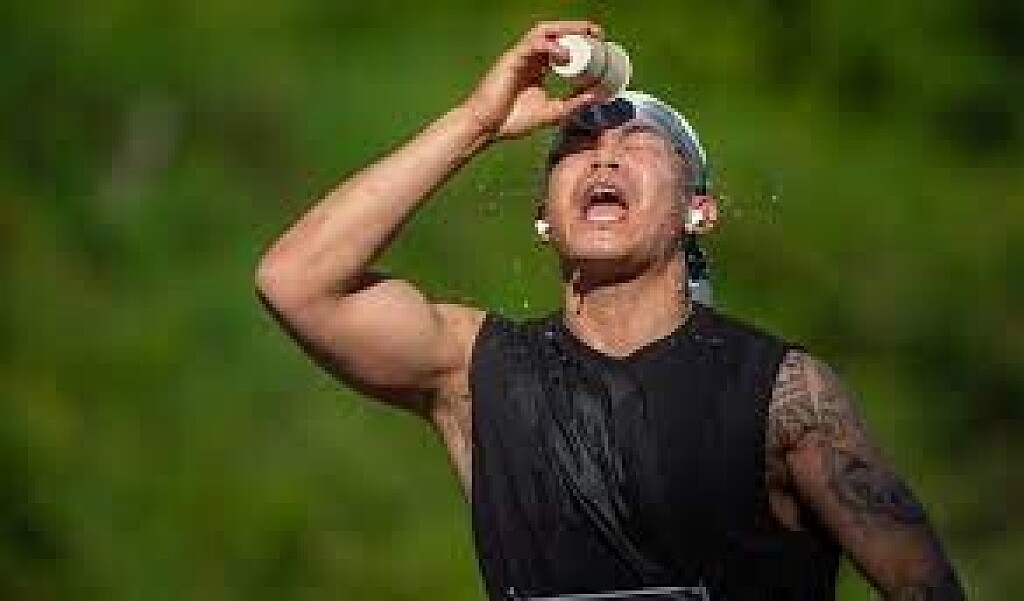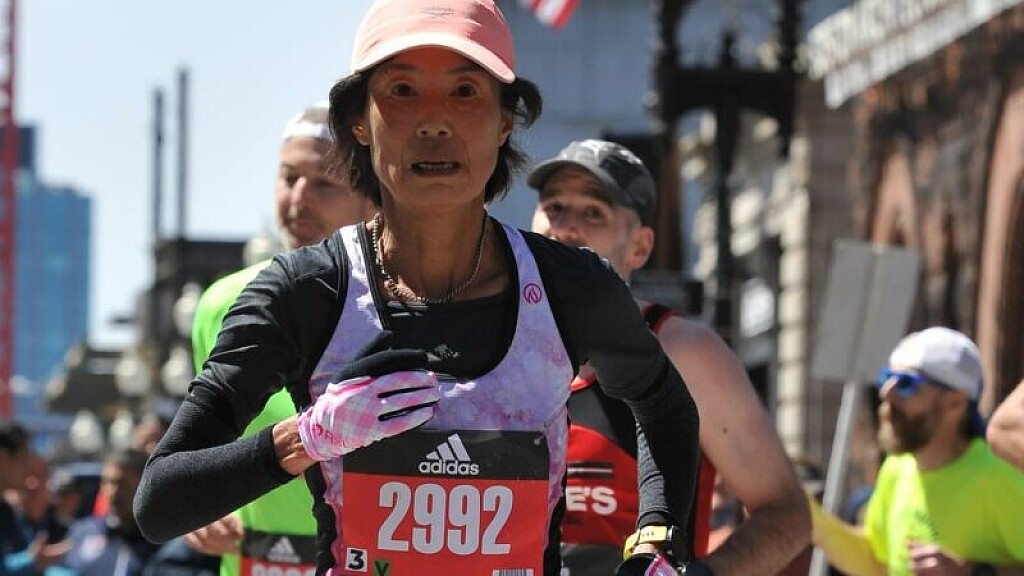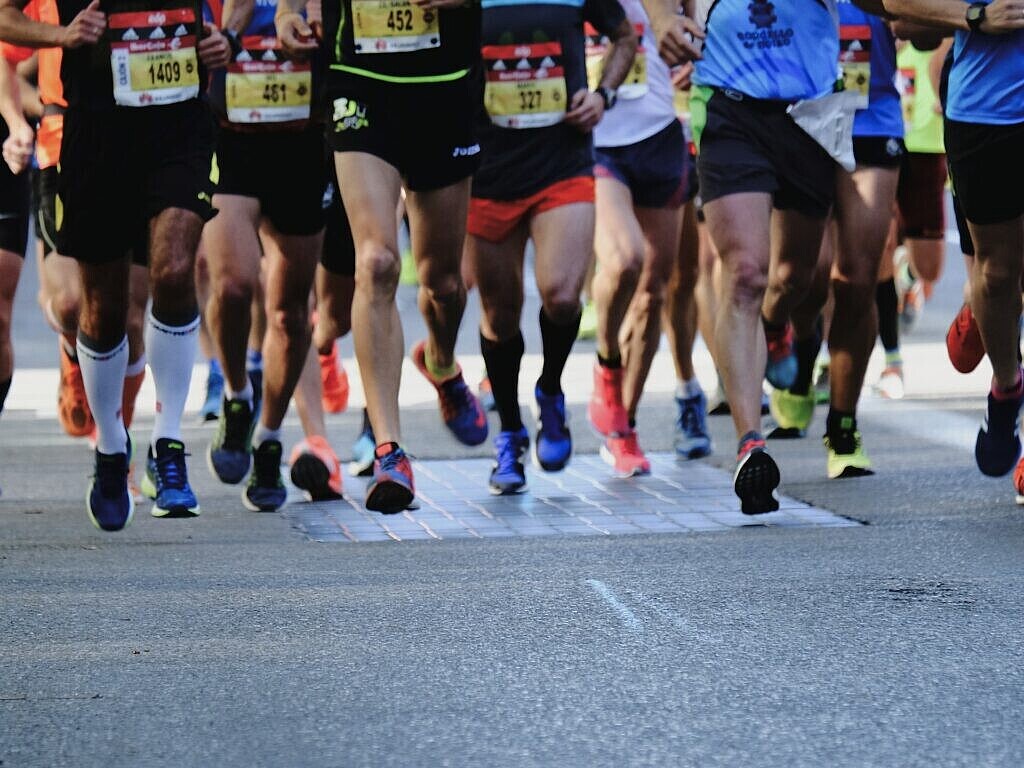Running News Daily
Running News Daily is edited by Bob Anderson in Mountain View, California USA and team in Thika Kenya, La Piedad Mexico, Bend Oregon, Chandler Arizona and Monforte da Beira Portugal. Send your news items to bob@mybestruns.com Advertising opportunities available. Over one million readers and growing. Train the Kenyan Way at KATA Running Retreat Kenya. (Kenyan Athletics Training Academy) in Thika Kenya. Opening in june 2024 KATA Running retreat Portugal. Learn more about Bob Anderson, MBR publisher and KATA director/owner, take a look at A Long Run the movie covering Bob's 50 race challenge.
Index to Daily Posts · Sign Up For Updates · Run The World Feed
Russian doping ban lifted, but Ukraine war keeps athletes out
Russia and its athletes will remain banned from competition due to the ongoing invasion of Ukraine.
On Thursday afternoon, the World Athletics Council announced the reinstatement of the Russian Athletics Federation (RusAF) following a seven-year doping suspension. Despite their reinstatement into the sport, however, Russia will remain banned from competition due to its ongoing invasion of Ukraine.
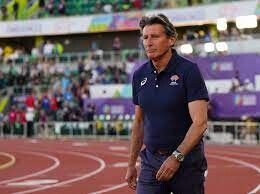
“Athletes and officials for Russia and Belarus are still excluded for the foreseeable future due to the invasion of Ukraine,” said World Athletics president Seb Coe.
In the case that Russia decides to leave Ukraine, Coe says his instinct is that the ban would be reversed, allowing Russian and Belarusian athletes to participate in all World Athletics events.
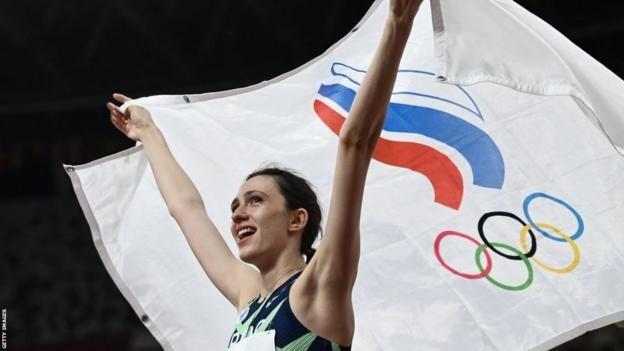
According to Rune Andersen, who served as the head of the World Athletics Task Force around reinstating the RusAF, told the WA Council that all required conditions have ultimately been met. RusAF has also accepted the ruling stating that there must be no backsliding from the new position.
“I believe RusAF still has a lot of progress to be made,” said Coe. RusAF has to follow 35 “special conditions” intended to ensure that anti-doping reforms remain in place, and continue to operate effectively. These special conditions will continue to be reviewed over the next three years.
The RusAF has been suspended from competing in World Athletics events since 2015 due to multiple doping violations. They are currently not eligible to host World Athletics events or send teams to international championships due to the World Athletics sanctions for the invasion of Ukraine.
“The integrity of our major international competitions has already been substantially damaged by the actions of the Russian and Belarusian governments through the hardship inflicted on Ukrainian athletes and the destruction of Ukraine’s sports systems,” said Coe in a press release. “Russian and Belarusian athletes, many of whom have military affiliations, should not be beneficiaries of these actions.”
The World Athletics stance on Russia continues to contrast with that of the International Olympic Committee (IOC), which is working to allow Russian and Belarusian competitors to participate in international competition and the Paris 2024 Games, as neutral athletes.
The reinstatement of RusAF was one of four noteworthy announcements to come from the 2023 World Athletics Council meetings.
(03/24/2023) ⚡AMP
by Running Magazine
Four runners complete indoor marathon during pro basketball game
An unusual race took place in an NBA G League basketball game on Wednesday evening in Des Moines, Iowa. The Iowa Wolves hosted a mid-game marathon inside Wells Fargo Arena, which involved fans running 111 laps around the 380-meter concourse.
The event was hosted by the IMT Des Moines Marathon and the Iowa Wolves, a farm team for the NBA’s Minnesota Timberwolves. The runners began the marathon at 5 p.m., two and a half hours before tip-off, and were given a five-hour window to complete the race (by the time the game ended, around 9:30-10 p.m.). Four runners finished the full 42.195 kilometers.

“Running a marathon in the evening and on a flat course is very non-traditional,” said race participant Dennis Haney. “Most marathons start in the morning. And one that is the same temperature the entire time is very unusual.”
Fans watched and cheered on the marathoners before and during the game. The runners were featured on the arena’s jumbotron during most stoppages in play.
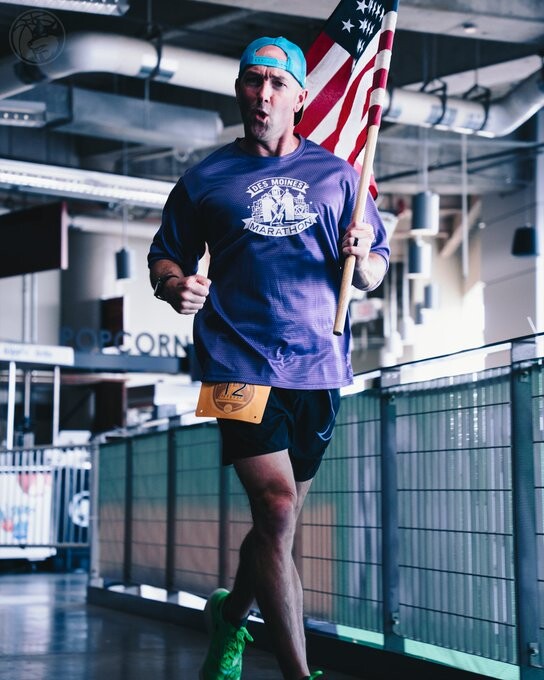
One participant told local news the race was an interesting experience. “The majority of the crowd was for the basketball game,” said the marathoner. “But it was fun to be heckled for 111 laps of the arena.”
According to the Des Moines Register, this was the first marathon held during a professional basketball game.
The Iowa Wolves went on to win 139-131 over the Birmingham Squadron.
(03/24/2023) ⚡AMPby Marley Dickinson
Grandma’s Marathon Field Full, Marking One of Quickest Sellouts on Record
The 2023 Grandma’s Marathon field has reached its capacity, making this one of the fastest sellouts on record for the 26.2-mile race.
More than 9,000 participants are signed up for both Grandma’s Marathon and the Garry Bjorklund Half Marathon, keeping this year’s event on pace to be one of (if not) the largest race weekends in history.
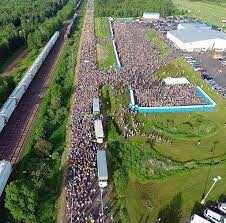
“It’s phenomenal to be talking about this in mid-March,” Marketing & Public Relations Director Zach Schneider said. “It’s reason for celebration, for sure, but the real work still lies ahead in making sure all these participants, as well as their families and friends, have a true Grandma’s Marathon experience when they come here in June.”
Limited entries do still remain in both the William A. Irvin 5K and Great Grandma’s Challenge, which enters participants in both the 5K on Friday night and full marathon on Saturday morning. With an entry fee price increase coming April 1, organizers expect those races to also be sold out within weeks.
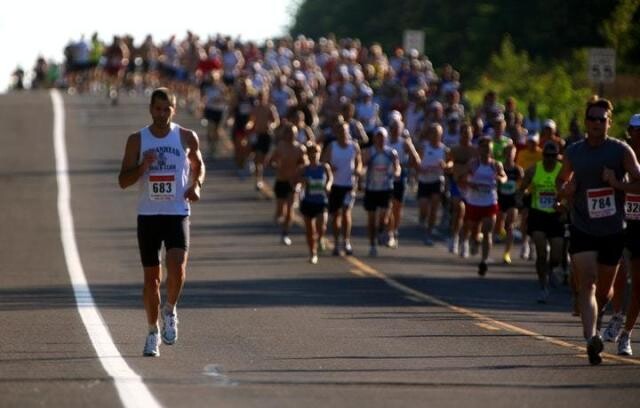
William A. Irvin 5K (40 spots remaining)
$50 – January 1-June 1
Full Great Grandma’s Challenge (150 spots remaining)
$215 – January 1-March 31
$225 – April 1-June 1
To register or to find more information, please visit grandmasmarathon.com. The 2023 Grandma’s Marathon weekend will be held June 15-17 and is presented by Toyota, Members Cooperative Credit Union, and ASICS.
VOLUNTEER SIGNUP UNDERWAY
With perhaps a record number of participants set to descend on Duluth in June, the hunt is on for the thousands of volunteers who will help make the 2023 Grandma’s Marathon weekend a success.
To help encourage community members to volunteer their time, Grandma’s Marathon is offering the following incentive programs, both new in 2023:
· Any individual signed up to volunteer prior to April 1 will be entered to win a $100 gift card to Duluth Pack.
· Groups with 15 or more volunteers will be entered for a chance to win one of three $1,000 “Golden Tickets” for a donation to a non-profit organization of the group’s choosing.
NOTE: Volunteers should indicate they are a part of the group during the sign up process. If you would like to participate but your group is not listed online, please send an email to alivia@grandmasmarathon.com to be added to the program.
There are a variety of volunteer positions and shifts available throughout race weekend. For more information or to sign up as a 2023 Grandma’s Marathon volunteer, please click HERE.
For any questions or interview requests, please contact Marketing & Public Relations Director Zach Schneider via phone at (218) 343-9874 or via email at zach@grandmasmarathon.com.
ABOUT GRANDMA’S MARATHON
Grandma’s Marathon began in 1977 when a group of local runners planned a scenic road race from Two Harbors to Duluth, Minnesota. After seeing just 150 participants that year, the race weekend has now grown into one of the largest in the United States and welcomes more than 20,000 participants for its three-race event each June.
The race got its name from the Duluth-based group of famous Grandma’s Restaurants, the first major sponsor of the marathon. In addition to the 26.2-mile race, the organization has now added the Garry Bjorklund Half Marathon and William A. Irvin 5K to its weekend offerings.
As the popularity of Grandma’s Marathon has grown, our mission has stayed the same – to organize, promote, and deliver annual events and programs that cultivate running, educational, social, and charitable opportunities to our communities.
Grandma’s Marathon-Duluth, Inc. is a 501(c)(3) tax-exempt nonprofit organization with a nine-person, full-time staff and a 17-member Board of Directors.
(03/24/2023) ⚡AMPby Running USA
Grandmas Marathon
Grandma's Marathon began in 1977 when a group of local runners planned a scenic road race from Two Harbors to Duluth, Minnesota. There were just 150 participants that year, but organizers knew they had discovered something special. The marathon received its name from the Duluth-based group of famous Grandma's restaurants, its first major sponsor. The level of sponsorship with the...
more...Paul Chelimo leaves Nike, signs with Decathlon-owned brand Kiprun
American Olympic medallist Paul Chelimo announced on Thursday that he has signed with Kiprun, a French brand owned by the sports retailer Decathlon. He was previously sponsored by Nike, a relationship that dated back to 2018, but he will be sporting a new look as he moves forward with the rest of his season.
Kiprun is not a big name in the North American running scene, likely due to the fact that Decathlon only has 15 stores across Canada (according to the retailer’s website) and none in the U.S. However, simply because it’s not a household name in Canada and the U.S. doesn’t mean it isn’t a good brand, and Chelimo clearly saw something in the company that he liked.
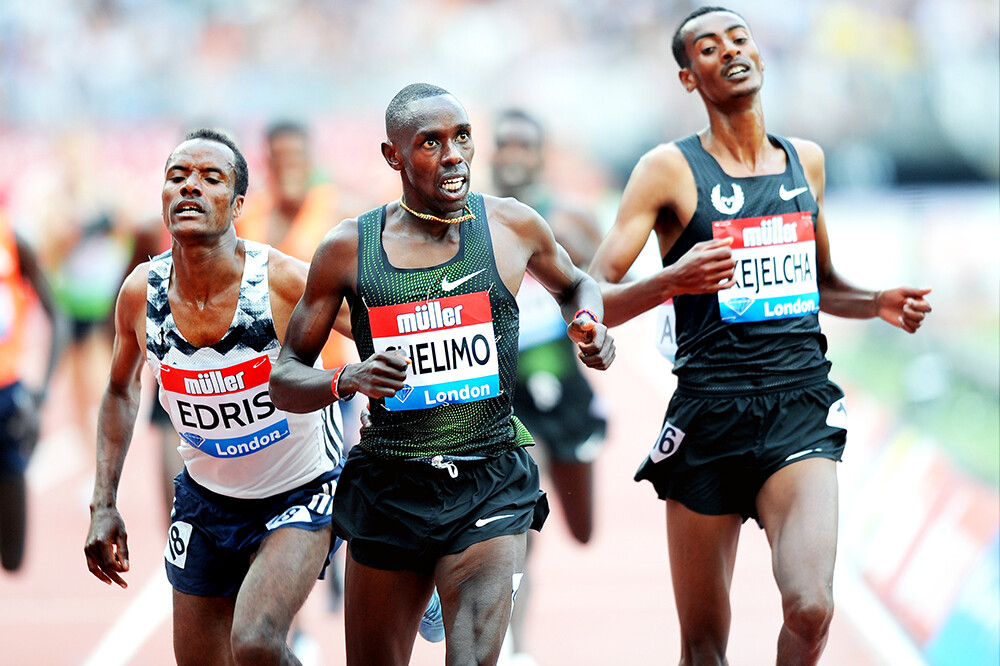
As his agent, Riad Ouled, told LetsRun, a lot of different brands were after a partnership with Chelimo. “He had offers from Asics, from On, and Nike wanted to renew him. But the project from Kiprun touched something in him.” Ouled added that a big draw for Chelimo was Kiprun’s willingness to let him have a say in the development of future shoes.
“He was very interested by … giving feedback,” Ouled said. “All of the brands offered him a lot of money, but Kiprun gave him consideration and said OK, we want to do shoes as you expect as a good runner.” Chelimo’s partnership with Kiprun is currently set to last until at least the 2028 Olympics.
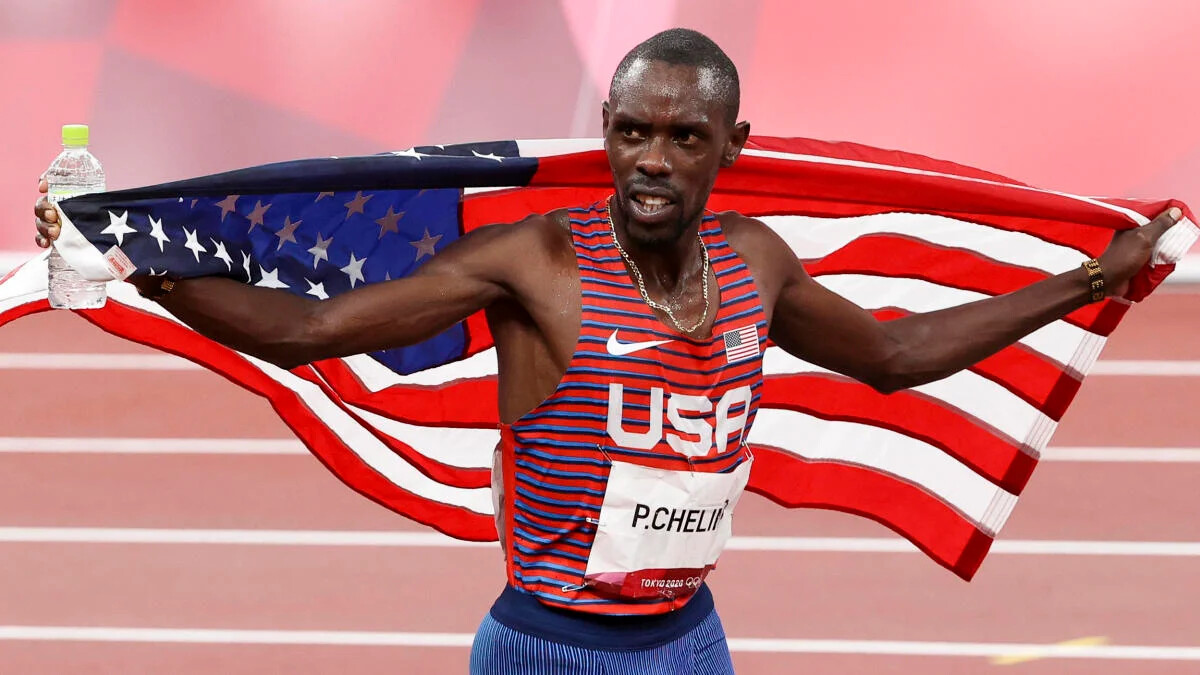
The two-time Olympic 5,000m medallist is Kiprun’s biggest athlete signing to date, as the brand has yet to attract many big names in running. The brand could be in for some big growth in the coming years, however, as there are plans to launch the Kiprun 42 House, which will be a training group for promising Kenyan athletes.
Chelimo will make his debut as a Kiprun athlete at the Berlin Half Marathon on April 2. He has run one half-marathon in his career and owns a PB of 62:19.
(03/24/2023) ⚡AMPby Ben Snider-McGrath
World Athletics bans transgender athletes from female category
On March 23, World Athletics announced a complete ban on transgender athletes competing in the female category. No athletes who have been through male puberty will be allowed to participate in women’s events from March 31st onward.
“Transgender athletes should not be competing in the female category,” said World Athletics president Seb Coe. “Science may be insufficient, but the council agrees it must be guided by our overarching principle to protect all biological females in our sport.”
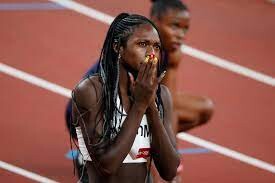
“This has not been an easy decision,” said Coe. “We entered a consultation months ago, we wanted to hear from all stakeholders, and the judgment we took was in the best interest of our sport.”
World Athletics will soon establish a transgender working group to bring data and science to the council meetings. The working group will give the World Athletics Council a better understanding of transgender athletes in our sport. Coe said he intended to appoint a trans female athlete as chair of this group.
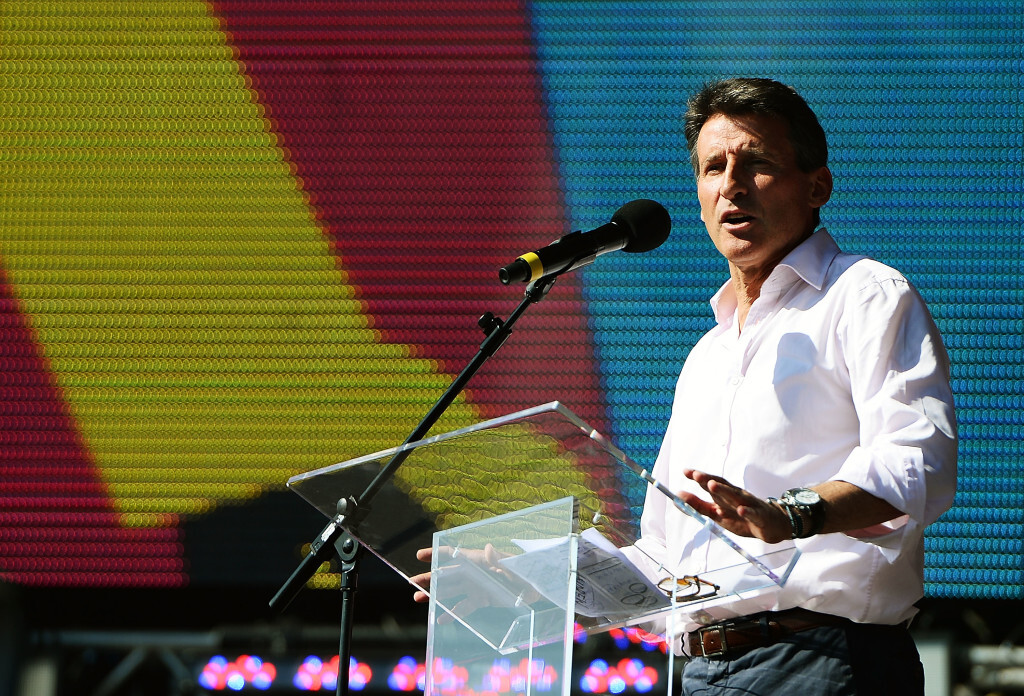
The previous World Athletics transgender policy stated to be eligible for female competition, athletes had to keep their testosterone levels below 5 nmol/L for a 12-month period. The new ruling will bar all transgender athletes from the female category.
“It was impossible to maintain the transgender regulations for what they were,” said Coe. “A full ban on transgender athletes in the women’s category is the right approach.”
The press conference also dealt with athletes in the DSD category. More information to come.
(03/23/2023) ⚡AMPby Marley Dickinson
Olympic Steeple Bronze Medalist Benjamin Kigen And World XC Champ Beatrice Chebet Lead Fields For BAA 5k
Patriots’ Day Weekend will kickoff with exciting competition, as international and U.S. stars take to the roads for the 2023 B.A.A. 5K presented by Point32Health, and the 2023 B.A.A. Invitational Mile on Saturday, April 15.
Among the professional athletes entered in the B.A.A. 5K are reigning champions Charles Philibert-Thiboutot (Canada), Marcel Hug (Switzerland), and Jenna Fesemyer (USA), while recently crowned world cross country champion Beatrice Chebet of Kenya will make her Boston road racing debut. Local Bay State stars Johnny Gregorek and Ellie Shea will compete in the B.A.A. Invitational Mile, a three-lap race starting and finishing on Boylston Street.
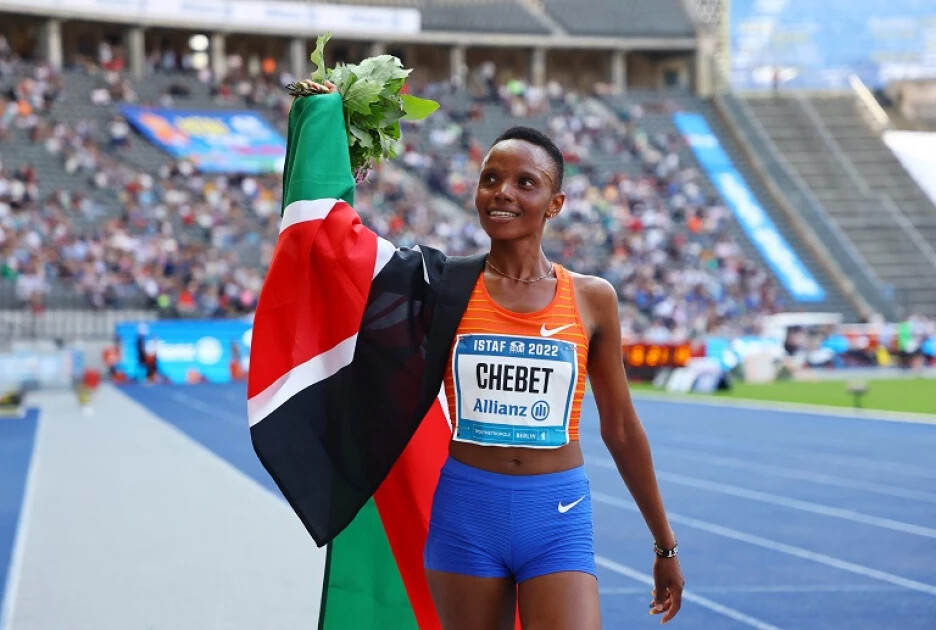
“This year’s professional fields blend together experience with up-and-coming stars for the B.A.A. 5K and B.A.A. Invitational Mile,” said Mary Kate Shea, B.A.A. Director of Professional Athletes. “Participants, spectators, and running enthusiasts will get to witness world class competition at shorter distances two days before the 127th Boston Marathon."
International standouts will be at the front of the B.A.A. 5K, led by Kenya’s Benjamin Kigen – an Olympic bronze medalist in the 3000m steeplechase from 2021—and Philibert-Thiboutot, who set a Canadian national record at the 2022 B.A.A. 5K en route to winning in 13:35. Philibert-Thiboutot’s countryman Ben Flanagan, a three-time Falmouth Road Race winner, as well as reigning B.A.A. Half Marathon champion Geoffrey Koech of Kenya, are also entered. Leading the American contingent is Olympian Mason Ferlic, two-time World Cross Country participant Emmanuel Bor, U.S. Road Mile champion Eric Avila, and NCAA All-American Morgan Beadlescomb.
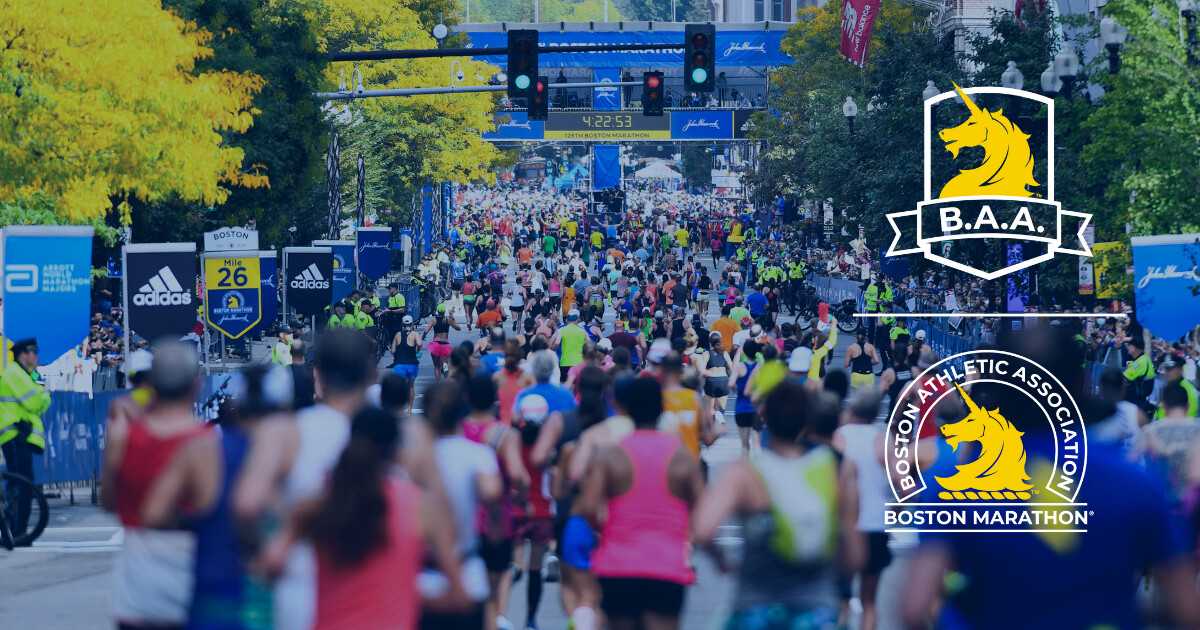
On the women’s side, 2023 World Cross Country champion Beatrice Chebet and bronze medalist Agnes Ngetich (Kenya) will take on World Athletics Championships 3000m steeplechase bronze medalist Mekides Abebe (Ethiopia), all racing the B.A.A. 5K for the first time. The United States will be well represented in the women’s professional ranks, with reigning USA 5K national champion Weini Kelati, defending B.A.A. Invitational Mile winner Annie Rodenfels, 2022 USA Club Cross Country champion Bethany Hasz, Olympian Marielle Hall, and 2022 USATF 10,000m bronze medalist Natosha Rogers all racing. Rodenfels and Hasz are members of the B.A.A. High Performance Team, training in Boston under coach Mark Carroll.
International standouts will be at the front of the B.A.A. 5K, led by Kenya’s Benjamin Kigen – an Olympic bronze medalist in the 3000m steeplechase from 2021—and Philibert-Thiboutot, who set a Canadian national record at the 2022 B.A.A. 5K en route to winning in 13:35. Philibert-Thiboutot’s countryman Ben Flanagan, a three-time Falmouth Road Race winner, as well as reigning B.A.A. Half Marathon champion Geoffrey Koech of Kenya, are also entered. Leading the American contingent is Olympian Mason Ferlic, two-time World Cross Country participant Emmanuel Bor, U.S. Road Mile champion Eric Avila, and NCAA All-American Morgan Beadlescomb.
On the women’s side, 2023 World Cross Country champion Beatrice Chebet and bronze medalist Agnes Ngetich (Kenya) will take on World Athletics Championships 3000m steeplechase bronze medalist Mekides Abebe (Ethiopia), all racing the B.A.A. 5K for the first time. The United States will be well represented in the women’s professional ranks, with reigning USA 5K national champion Weini Kelati, defending B.A.A. Invitational Mile winner Annie Rodenfels, 2022 USA Club Cross Country champion Bethany Hasz, Olympian Marielle Hall, and 2022 USATF 10,000m bronze medalist Natosha Rogers all racing. Rodenfels and Hasz are members of the B.A.A. High Performance Team, training in Boston under coach Mark Carroll.
(03/23/2023) ⚡AMPB.A.A. 5K
The B.A.A. 5K began in 2009, and became an instant hit among runners from far and wide. Viewed by many as the “calm before the storm,” the Sunday of Marathon weekend traditionally was for shopping, loading up on carbohydrates at the pasta dinner, and most importantly- resting. But now, runners of shorter distances, and even a few marathoners looking for...
more...Defending Champions Return to Run 50th Anniversary Credit Union Cherry Blossom 10 Mile
Organizers of the 50th annual Credit Union Cherry Blossom 10 Mile (CUCB) announced today the first of two rounds of news about this year’s invited field; look for the second announcement to come out on Wednesday, March 29. Today’s announcement features past champions and top-5 finishers expected to toe the respective men’s and women’s starting lines on Sunday, April 2. (The elite women will start first, at 7:18 a.m., followed by the men and the masses at 7:30 a.m.)
Three past champions are part of the women’s elite field: Susanna Sullivan, last year’s women’s champion from Reston, VA; 2021 champion Nell Rojas from Boulder, CO; and 2013 champion Caroline Rotich, a Kenyan who lives in Colorado Springs, CO. As part of the 50th celebration two additional former champions are entered: Colleen De Reuck from Boulder, CO, who won the race in 1998 and still holds the women’s course record of 51:16; and 1973 winner Kathrine Switzer.
Other top women finishers from past 10 Miles include: Carrie Verdon from Boulder, CO, who placed second last year; Paige (Stoner) Wood, last year’s third place finisher from Flagstaff, AZ; Sara Hall, also from Flagstaff, who placed fourth in 2014; and Flagstaff’s Diane Nukuri, who was fifth in 2018.
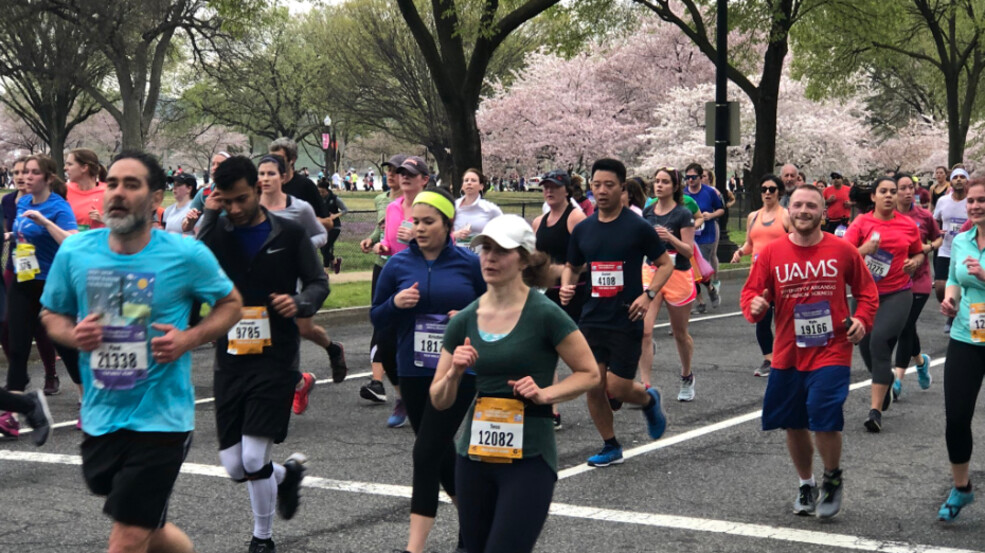
In the men’s race, the top-three finishers from 2022 return. All hailing from Kenya, they include champion Nicholas Kosimbei, second-place runner Wilfred Kimitei, and third-place finisher Shadrack Kimining. They’ll be joined on the starting line by second-place finisher in 2021 Abbabiya Simbassa from Flagstaff, AZ. Returning for the 50th running and starting a little bit farther back in the pack will be Bill Rodgers, from Boxborough, MA, who won the race four consecutive times between 1978 and 1981; placed second in 1982 and third in 1983; and has run CUCB a total of 22 times. Greg Meyer, whose American record of 46:13 still stands 40 years later, will be present for the 50th celebration, and will be holding the tape for the first American male finisher, who will be in hot pursuit of Greg’s mark — there’s a $50,000 shared bonus on the line for any American Records or World Bests set at the event.*
“It’s always a vote of confidence in the reputation of the event to see a large number of top finishers from previous years coming back. I am excited about this year’s set of repeaters, both past and present. This is another factor that will make our 50th anniversary special,” said Event Director Phil Stewart.
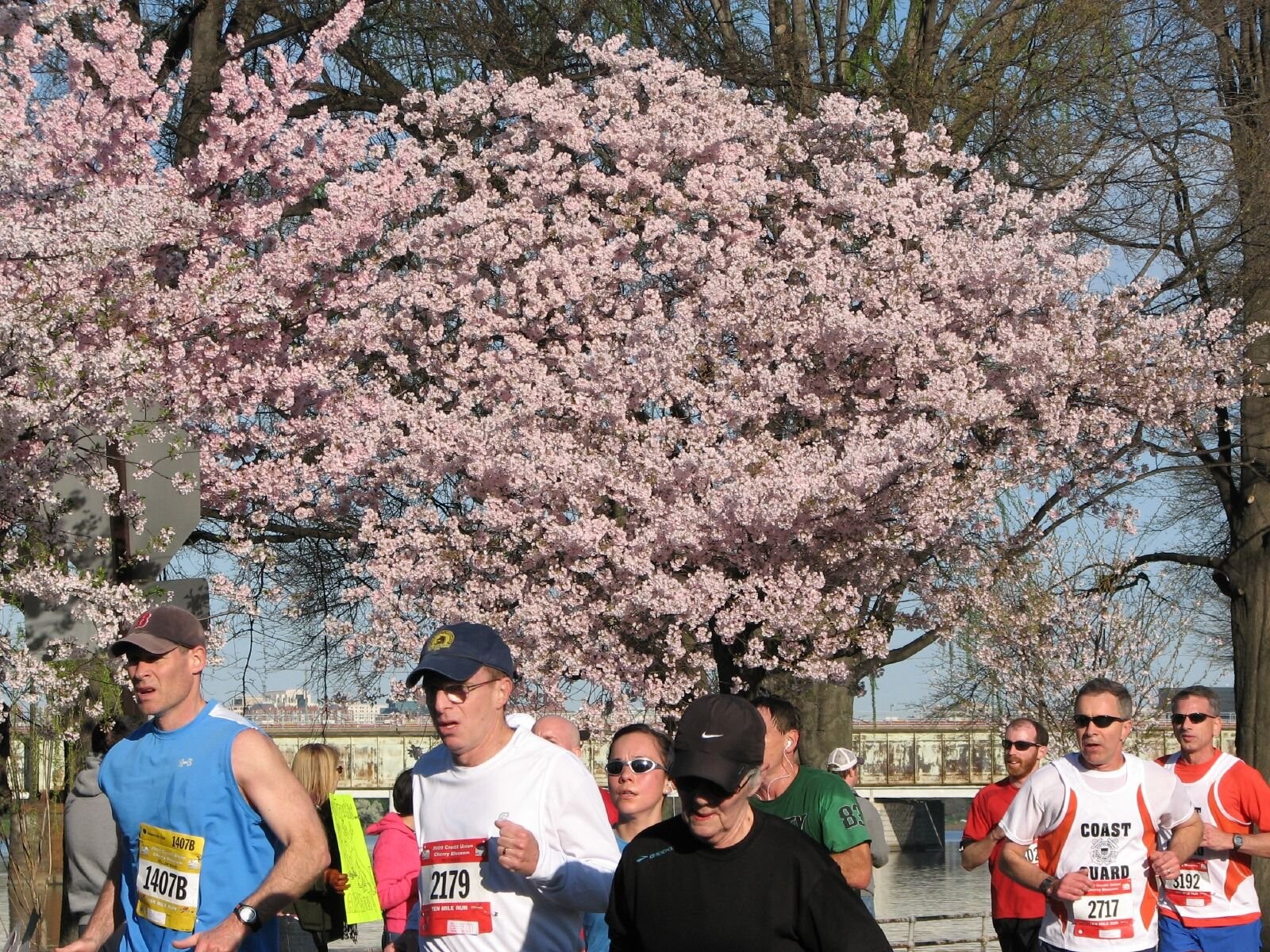
This year, international elite runners will be competing for $40,000 in prize money. The prize purse for Americans totals $25,000, and American runners placing in the top-10 overall are eligible to receive both open and American-only prize money. There is an additional $6,000 in RRCA RunPro Alumni Development Awards — runners eligible for the RRCA awards can also collect top-10 open and/or top-10 American payouts.
There is also a time-based set of bonus payments on offer for fast times:
• $50,000 to be shared by any runners setting a World Best or American Record*• Time incentives of $1,000 for the 1st male to run sub-46 minutes and 1st female to run sub-52 minutes, with an additional $750 on offer should a second male and/or female achieve those same sub-46 and sub-52 minute milestones.
The 10 Mile will serve as the USATF 10 Mile Championships, the RRCA National 10 Mile Championships, and the 2022-2023 Professional Road Racing Organization (PRRO) Circuit Championship.
Winners of the individual 2022-2023 PRRO Circuit events will be eligible for the $10,000 PRRO Super Bonus by winning the PRRO Championship (the bonus is split if an eligible male and female win the Championship). Susanna Sullivan and Nicholas Kosimbei are eligible for the PRRO Super Bonus. Any non-eligible winner of the PRRO Championship Super Bonus will earn $2500.
* If World Best times and American Records for men and women are set by the winners at the event (e.g. four records set), the $50,000 record bonus would be split into four $12,500 shares. If only one World or American record is set for either men or women, the athlete setting the record would get the full $50,000. If an American sets an American record and no other World or American records are set, he or she would receive the entire $50,000 as well. Currently, the times to beat are as follows:• Haile Gebreselassie’s (ETH) World Athletics Best of 44:24, run at the Tilburg 10 Mile in Tilburg, Netherlands, September 4, 2005;• Keira D’Amato’s World Athletics Best in a women’s only race of 51:23, run at the UpDawg 10 Mile in Washington, DC, November 24, 2020;• Greg Meyer’s American Record of 46:13, run at the Cherry Blossom 10 Mile in Washington, DC, March 27, 1983; and• Keira D’Amato’s previously mentioned World Best 51:23, which is also the American Record for a women’s only race.
For reference, the fastest CUCB time among the men’s field announced today is Kosimbei’s 45:15, which tied the event record set by Kenya’s Allan Kiprono in 2012. Among the elite women, Nell Rojas’s 52:13 from 2021 is the best CUCB finish time among this year’s elite entrants. Abbabiya Simbassa’s 46:18 from 2021 is the best CUCB mark among the American men, while Nell’s 52:13 is, of course, the leading mark among the American women.
The inaugural Cherry Blossom Ten Mile in 1973 was won by Sam Bair, in a time of 51:22; the women’s winner was Kathrine Switzer, in a time of 1:11:19; 127 men and 12 women ran that first race. Bill Rodgers holds the honor of most victories, with four consecutive wins between 1978 and 1981. Three women have each won the race three times: Julie Shea (1975-77), Lisa Weidenbach (1985, '89 and '90) and Lineth Chepkurui (2008-10). Ben Beach leads all Cherry Blossom finishers with an active streak of 49 years. A comprehensive media guide detailing a wide variety of statistics from the first 49 CUCB races is available here.
Thanks to Credit Union Miracle Day’s title sponsorship since 2002, the Credit Union Cherry Blossom Run has raised over $10.2 million for the Children’s Miracle Network Hospitals, including $323,000 in 2022.
About the Credit Union Cherry Blossom 10 Mile:
The Credit Union Cherry Blossom races, organized by Cherry Blossom, Inc., a 501c(3) chapter of the Road Runners Club of America, are known as “The Runner’s Rite of Spring®” in the Nation’s Capital. The staging area for Sunday’s 10 Mile is on the Washington Monument Grounds, and the course passes in sight of all of the major Washington, DC Memorials. In 2023, the reimagined Saturday 5K will stage on Freedom Plaza and traverse the route of Presidential Inaugurations down Pennsylvania Avenue before crossing the National Mall in the shadow of the Capitol Building and returning by the same route. The Kids Run is staged on the grounds of the National Building Museum. All events serve as a fundraiser for the Children’s Miracle Network Hospitals, a consortium of 170 premier children’s hospitals across North America. About one-third of the funds raised support Washington, DC’s own Children’s National (“Children’s Hospital”). The event also funds the Road Runners Club of America’s “Roads Scholar” program designed to support up-and-coming U.S. distance running talent.
Credit Union Miracle Day, Inc., a consortium of credit unions and credit union suppliers, is the title sponsor of the Credit Union Cherry Blossom 10 Mile, 5K, Kids Run and Virtual Run. Current presenting sponsors include ASICS, REI Co-op and Wegmans; supporting sponsors include CACI, Co-op Solutions, CUNA Mutual Group, FinisherPix, Gatorade Endurance, Guayaki, MedStar Health, PSCU, Potomac River Running, Suburban Solutions, The MO Apartments and UPS.
The 10 Mile is a proud member of the PRRO Circuit (PRRO.org), a series of this country’s classic non- marathon prize money road races with circuit stops in Washington, DC; Spokane, WA; and Utica, NY. The 2023 10 Mile will serve as the 2022-2023 PRRO Championship.
In addition to being sanctioned by USA Track & Field and the Road Runners Club of America, the Credit Union Cherry Blossom races have earned Gold Level Inspire Certification from the Council for Responsible Sport in recognition of its legacy of commitment to sustainability and thoughtful resource management.
To learn more, visit CherryBlossom.org and follow the event on social media @CUCB and #CUCB2023.
(03/23/2023) ⚡AMPby David Monti
Cherry Blossom Ten Mile Run
The Credit Union Cherry Blossom is known as "The Runner's Rite of Spring" in the Nation's Capital. The staging area for the event is on the Washington Monument Grounds, and the course passes in sight of all of the major Washington, DC Memorials. The event serves as a fundraiser for the Children's Miracle Network Hospitals, a consortium of 170 premier...
more...Five reasons new runners should try all types of running
If you’re new to running, you may think you have to choose what type of runner you want to be. You feel the need to classify yourself as a road, track or trail runner, but that’s not the case. You can and should at least test the waters of many types of running. Here are five reasons why you shouldn’t box yourself in as soon as you get started in the sport.
1.- More variety
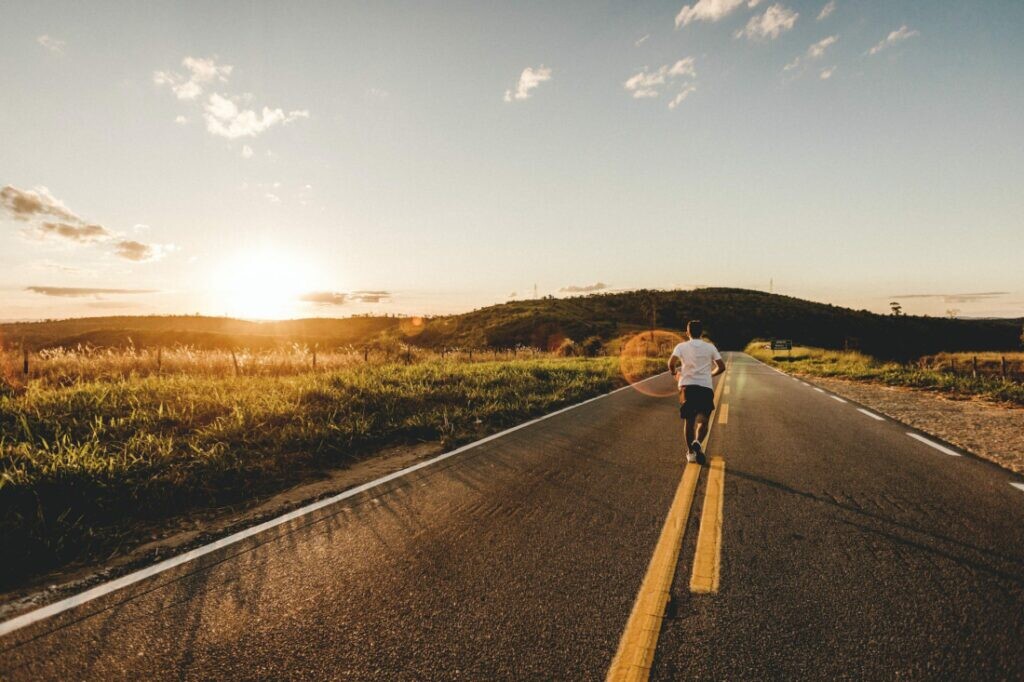
If you only stick to one type of running, you may set yourself up to fall into a training rut, simply because you’ll get tired of the same old routes day after day. Being open to training on the track, road and trails will give your training schedule some much-needed variety, and by dividing your training in three ways, you’ll be less likely to get bored with your workouts.
2.- Meet more people
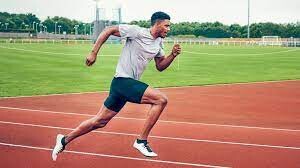
The running community is an amazing group, and you’ll meet wonderful people wherever you look in the sport. By expanding your training and hitting the track, road and trails, you’ll open yourself up to the opportunity to meet more people in each of these sub-groups. Meeting more people means more potential training buddies.
3.- Find what you like
If you just assume that road running is the way to go and don’t try the other options, you’ll never know if the track or trails were a better fit for you. By testing each type as soon as you get into the sport, you’ll find your niche sooner, which will only help you thrive as a runner.
4.- No rules of racing
Lots of people identify with the races they run, but that doesn’t mean you have to pick one type of event for the rest of your running career. In fact, entering races on all three surfaces is a good idea for all runners. If you’re a road runner, entering a track race will help you with your speed, and hitting up a trail race will give you the chance to race by feel. Try multiple types of races. You won’t regret it.
5.- You can stop anytime
Just as there is no rule saying you can’t be a track, trail and road runner all at the same time, there’s nothing that says you can’t leave any one of those types of running behind if you don’t like it. Give each type of running a chance, just to see if you like them, but if you realize that you don’t enjoy one, then drop it. Running’s about having fun, so there’s no point in forcing yourself to do something you hate.
(03/23/2023) ⚡AMPby Ben Snider-McGrath
The Science of Speed Training
When it comes to training in general and for speed, we must look broadly at three energy systems.
They are:
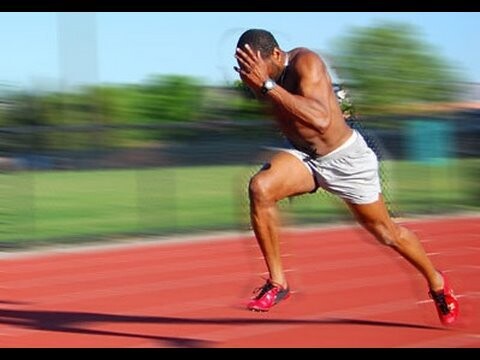
1. ATP – CP System2. Anaerobic Glycolytic System3. Aerobic System
From the standpoint of pure speed development, we must train within the first energy system, the ATP-CP system.
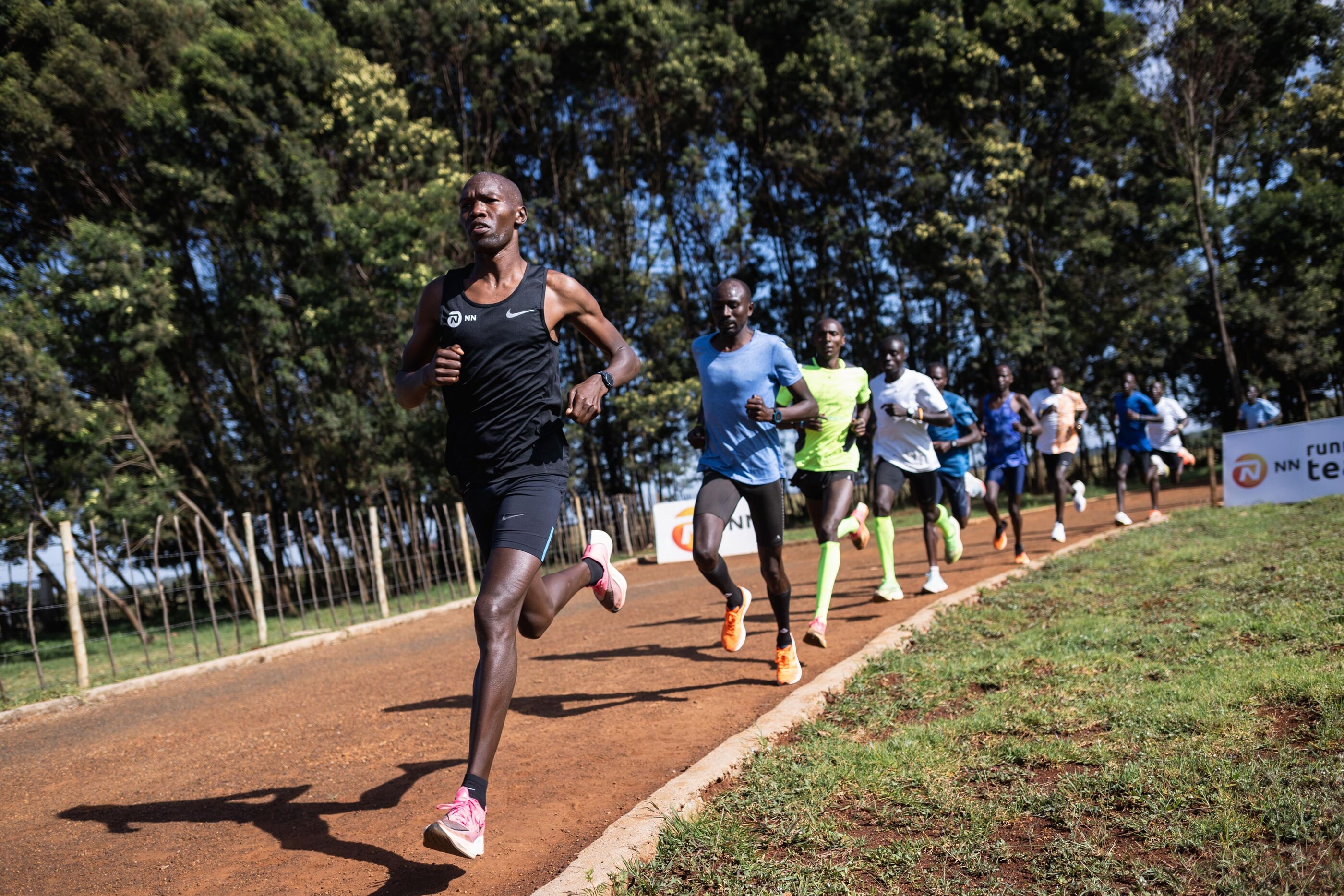
Here is an article that we posted a while back that covers the important physiology behind developing this system.
There seems to be a bit of confusion concerning the difference between aerobic and anaerobic training. Simply put, aerobic means 'with oxygen' and anaerobic means 'without oxygen'. So, running a 40 at full speed would be an example of an anaerobic activity. Going out for a 3 mile run would be an aerobic activity. In order to understand which energy systems should be emphasized for specific sports and activities, let'stake a look at the energy source our muscles use and the energy systems that support it. This article will focus on ATP and the first of the three energy systems, the ATP-CP Energy System.ATP – The source of muscular energy
Adenosine Triphosphate, or ATP, is the immediate usable form of chemical energy for muscular activity. Any forms of chemical energy that the body gets from food must be converted into ATP before being used by muscle cells. ATP stores in muscle is limited and will deplete in 1 to 2 seconds unless restored. Resynthesis of ATP must occur immediately for muscular activity to continue. There are three systems available within the body to replace concentrations of ATP.
Anaerobic Phosphagen (ATP – CP) Energy System
Creatine Phosphate (CP) is an energy rich compound found in muscle cells. After high intensity exercise, creatine phosphate immediately restores ATP in the muscle without forming waste products (lactic acid). The amount of ATP that can be resynthesized from CP canlast for 4 to 5 seconds. So, add that to the 1 to 2 seconds of original ATP stores within the muscle and you have about 5 to 7 seconds of ATP production from the ATP-CP Energy System.
According to the USA Track and Field Level II Sport Science manual, to really challenge this system, you need workouts of 7 to 10 seconds of high intensity (sprint) work. This means running at full speed or near full speed, but with no fatigue present.
Therefore, any sport that involves running at full speed (track, football, soccer, field hockey, baseball, basketball, lacrosse, etc) needs to place regular emphasis on working and challenging this system.
Why? The best way to improve top speed is to run at top speed. High intensity sprint work (moving the limbs at near peak velocity) involves recruiting specific groups of muscle fibers and improving the efficiency and firing patterns of those muscle fiber groups. This type of motor learning must be done at high speeds to properly develop the complex recruitment of muscle fiber needed to fire in a synchronized pattern. This process is also referred to as neuromuscular conditioning.
The need for such conditioning helps explain why coordination and agility work is essential to developing speed. If you are highly coordinated, your brain does not have to spend as much time 'thinking' about where your limbs are in relation to the objects in your immediate environment. Instead, muscle fibers will be able to fire in a coordinated pattern, resulting in higher top speed and quicker reaction times. This is essential when considering the amount of fine motor skill and coordination required in the routine movements of sports like soccer, field hockey and basketball.
Let's look at some examples of how and when to train this system in a way that will maximize our results.
As was mentioned before, the speed component should be trained with no fatigue present. Most athletes require between 36-48 hours of rest with low intensity (<75% intensity, Heart rate 120-140) training before doing speed work again. So if you're doing speed work on Monday, wait until Wednesday before you do it again. When looking at rest within a single workout, you have to understand the amount of time necessary for proper ATP and CP resynthesis.
The following time examples explain how much time is required for the given percentage of ATP restoration, as stated by the USATF Level II manual:
30 seconds – 50% (in 30 seconds, 50% of ATP stores are recovered)
1 minute – 75%90 seconds – 80%3 minutes – 98%
From these examples, it is clear that 2 to 3 minutes is the minimum time required between reps for the ATP-CP system to sufficiently recover.
Speed training- Guidelines for high school athletes:
Intensity – 95-100%Distance of run – 20-60 metersNumber of reps/set – 2-4Number of sets – 2-4
Total distance in set – 80-160 metersTotal distance in session – 300 – 500 meters
In general, we follow the rule of one minute of rest per 10 meters run. For example, a set of 4 x 40m would consist of 4 minutes rest between each 40 meter sprint.
Now let's look at a couple sample workout sessions to get an idea of how these workouts could be structured. Rest between sets is slightly longer than rest between reps in order to allow full recovery.Workout #1
4 x 40m – 4 min rest6 minutes rest between sets3 x 50m – 5 min rest
TOTAL: 310 metersWorkout #2
4 x 30m – 3 min rest4 minutes rest between sets4 x 40m – 4 min rest5 minutes rest between sets4 x 50m – 5 min rest
TOTAL: 480 metersStructuring your workouts in a similar manner will maximize all the qualities desired from working the ATP-CP energy system. Remember, working hard with minimal rest will not make you faster. Either will running slow. Energy stores must be replenished to gain the benefits of speed work. Without true speed development, you are simply falling behind your competitors.
(03/22/2023) ⚡AMPby Athletes Acceleration
Tallest player to ever play in the NHL is running the 2023 Boston Marathon
The former Boston Bruins defenceman and captain, Zdeno Chara, who stands at six feet and nine inches, will run his first marathon in Boston.
After 26 years in the NHL, the 6’9″ defenceman, Zdeno Chara, is ready for his next challenge—the 2023 Boston Marathon. On Sunday, the tallest player in NHL history said on his Instagram that he plans to run his first marathon on April 17, in support of two Boston-based charities, the Thomas E. Smith Foundation and The Hoyt Foundation.
Chara holds the all-time NHL record for most games played by a defenseman, with 1,680. Chara played for four teams over his 20+ year career, starting with the New York Islanders, Ottawa Senators, Boston Bruins and Washington Capitals.

“I’m so happy to announce that I am running my first marathon,” Chara wrote on his Instagram. “There’s no better first marathon than the Boston Marathon on April 17th!
“The Hoyt Foundation has made an incredible impact on millions of people worldwide and personally helped to motivate (the Bruins) to our 2011 Stanley Cup win,” He said in the post. “The Hoyt Foundation has an amazing legacy with the iconic marathon.”

Dick and Rick Hoyt became a well-known Boston Marathon pair, Dick pushing his son in a wheelchair along the 26.2-mile course dozens of times. Dick Hoyt died in September 2021 at the age of 80.
The Thomas E. Smith Foundation’s mission is to better the lives of those affected by and living with paralysis through financial and emotional aid while supporting preventive innovations that decrease the risk of spinal cord injuries.
You do not often see athletes of Chara’s stature take on the marathon, especially on a course as difficult as Boston. We think he’ll certainly be easy to spot in his corral.
(03/22/2023) ⚡AMP
by Running Magazine
Boston Marathon
Among the nation’s oldest athletic clubs, the B.A.A. was established in 1887, and, in 1896, more than half of the U.S. Olympic Team at the first modern games was composed of B.A.A. club members. The Olympic Games provided the inspiration for the first Boston Marathon, which culminated the B.A.A. Games on April 19, 1897. John J. McDermott emerged from a...
more...Kenyan Bravin Kiprop shifts focus to Berlin Half Marathon
Following a successful outing at the University of Eldoret cross country, Bravin Kiprop's focus has shifted to next month's Berlin Half Marathon.
Kiprop, who won the 7.4km senior men’s title, said he was using the race, part of UoE's 100th anniversary, as part of his preparations for the German race on April 2.
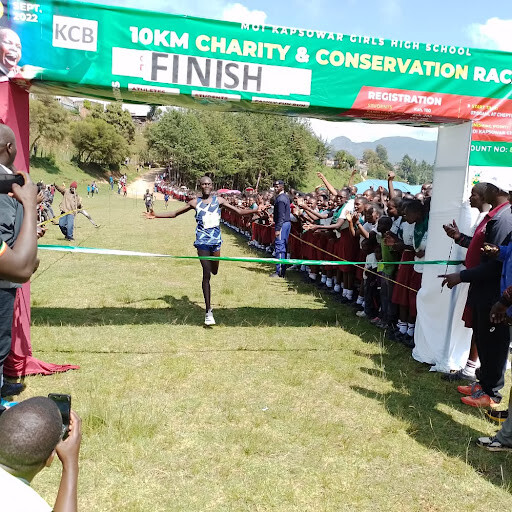
“I came here with the sole purpose of preparing for the Berlin Half Marathon and this victory has added positives to my preparations,” said Kiprop.
Kiprop, who trains in Keiyo South added that running in local races forms the best preparations for any athlete since, due to the competitiveness, they help runners gauge their fitness and endurance ahead of races abroad.
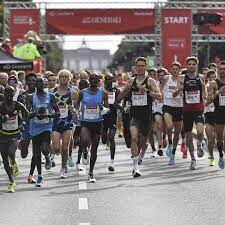
“Competing in these local races gives an individual a good start. I have two weeks to prepare and this race has offered me a good training ground,” said Kiprop, from Elgeyo Marakwet county.
He won the senior men’s race in 16:40.3, beating Ayub Kiptum to second in 16:54.2 while Titus Kiprotich took third place in 16:59.4.
In January, Kiprop finished second at the Discovery Kenya Cross country championships behind Weldon Langat.
Immaculate Anyango was victorious in the senior women's race, ahead of upstart Stella Jepkosgei and Dorothy Kimutai.
Anyango, who won Discovery cross country in January won the title in 25:09.7 while Jepkosgei and Kimutai clocked 25:26.6 and 25:30.5 respectively.
Mathew Kipkosgei and Janet Jepkosgei were the respective winners of the junior men's 5.55km and junior women's 3.7km races.
Kipkosgei led St Francis Kimuron to a clean sweep of the junior men's podium in 16:40.1, followed by Linus Kipkemoi (16:54.2) and Titus Kiprotich in 16:59.0.
Jepkosgei won the junior women's title in 12:38.01 ahead of Maurine Jepkoech and Martha Jelimo, who timed 12:41.0 and 12:45.2 respectively.
(03/22/2023) ⚡AMPby Emmanuel Sabuni
Berlin Half Marathon
The story of the Berlin Half Marathon reflects a major part of the history of the German capital. It all began during cold war times and continued during reunification. The events leading up to today's event could really only have happened in this city. Its predecessors came from East- and West Berlin. On 29th November 1981 the Lichtenberg Marathon was...
more...Zane Robertson Popped for EPO
Zane Robertson, the New Zealand record holder in the half marathon (59:47) and marathon (2:08:19) and former record holder in the 10,000 (27:33.67), has been suspended by The Sport Tribunal of New Zealand from competition for 8 years after testing positive for Erythropoietin (EPO) and “providing false documentation in his defence.”
Robertson, who along with his twin brother Jake famously moved to Kenya in 2007 at the age of 17 to try to become one of the world’s best distance runners, had retired in February at the age of 33 but didn’t mention anything about a pending drug bust. Zane tested positive at the UK’s Great Manchester Run in May 2022.
Join the LetsRun.com Supporters Club today to support independent journalism.
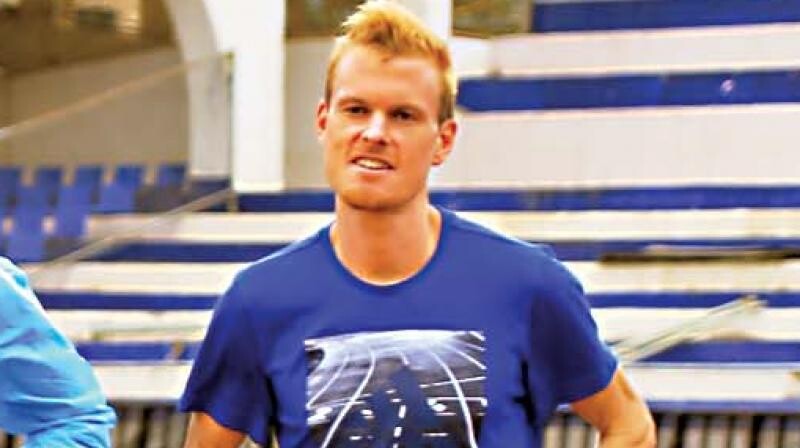
Supporters club members get all the LetsRun content, savings on running shoes, and their support ensures LetsRun.com has on-site coverage from the biggest Athletics events in the world. Use code CLUB25 to save 25%. And follow us on social media:
After his B sample came back positive, Zane Robertson didn’t try to argue that EPO wasn’t in his system. Instead, he said he went to a Kenyan medical facility to get a COVID vaccination but instead was given EPO, and he provided documentation to back up his point, but investigators determined the documentation provided was false.
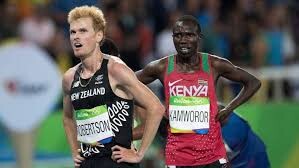
In addition to it making no sense medically why someone would be given EPO when they came in for a vaccine, a Vice President of the “medical facility Mr Robertson claimed to have attended” provided a statement saying “Mr Robertson was not administered EPO at the facility, that he had not attended the facility on the alleged date, that of the two doctors he claimed had treated him, one was a laboratory technician and the other was not employed at the facility, that the medical notes were not generated at the facility and the patient number on the notes was not Mr Robertson’s.”
The Sports Tribunal of New Zealand’s full decision can be read here (also embedded at the bottom of this document).
Additionally, Drug Free Sport New Zealand (DFSNZ) issued its own press release that can be read here (also embedded at the bottom of this document), but in reading it, appears that Robertson may have been targeted for testing.
“This case benefitted hugely from the sharing of key information and the invaluable support of the Athletics Integrity Unit and Anti-Doping Agency of Kenya. Our global partnerships allow us to collaborate across the anti-doping landscape to detect and deter doping and hold dopers to account, wherever they may be,” said Drug Free Sport New Zealand Chief Executive Nick Paterson.
The press release was unusual in that it contained a lengthy statement from Athletics NZ Chief Pete Pfitzinger, the two-time US Olympic marathoner (and Cornell grad), about how the organization was trying to make sure that Robertson’s mental health was being taken care of.
“As an organisation we take athlete welfare very seriously, so we understand the anxiety and stress that Zane will be experiencing. As soon as he received notification of the positive test for EPO last year, we offered and have provided extensive wellbeing support alongside High Performance Sport New Zealand and we will continue to provide support during this challenging time. We appreciate DFSNZ’s consideration of the athlete’s wellbeing throughout this process,” said Pfitzinger.
It’s worth noting that prior to the 2016 Olympics where Zane Robertson was 12th in the 10,000, Zane, who had relocated to Ethiopia, expressed his frustration as to the amount of doping in the sport and specifically the situation that was going on in Kenya.
“It’s disturbing that I can see these things unfolding before my eyes yet those athletes continue to race on,” said Zane to stuff.co.nz. Robertson also competed in the 2020 Olympics in the marathon where he was 36th.
(03/22/2023) ⚡AMP
by Robert Johnson
Groundbreaking artificial knee cartilage could help runners
Over-the-counter pain relievers, physical therapy, steroid injections — some people have tried it all and are still dealing with knee pain.
Often knee pain comes from the progressive wear and tear of cartilage known as osteoarthritis, which affects nearly one in six adults — 867 million people — worldwide. For those who want to avoid replacing the entire knee joint, there may soon be another option that could help patients get back on their feet fast, pain-free, and stay that way.
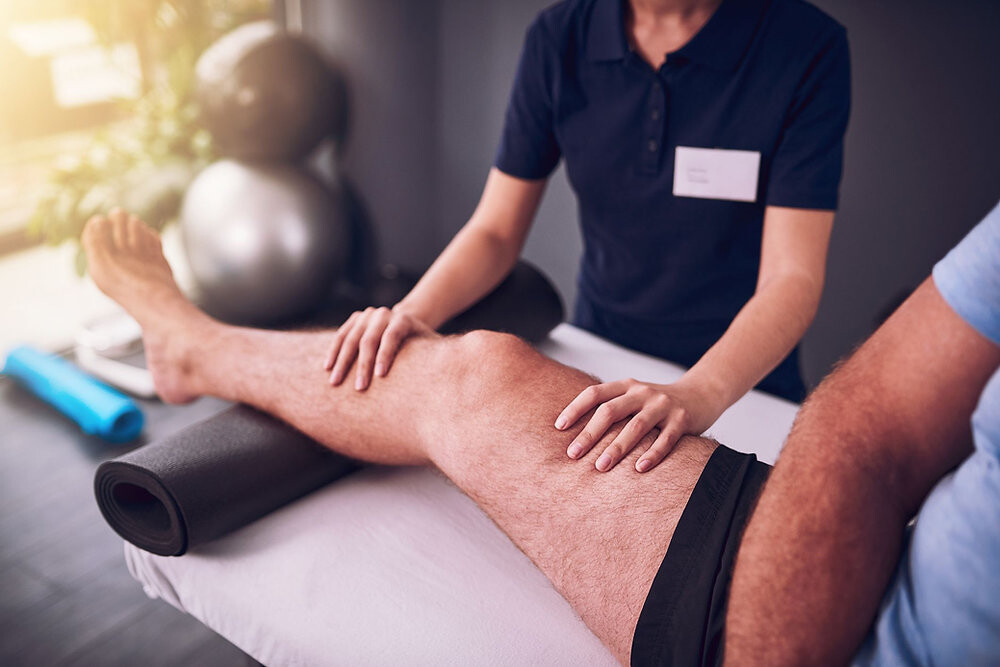
Writing in the journal Advanced Functional Materials, a Duke University-led team says they have created the first gel-based cartilage substitute that is even stronger and more durable than the real thing.
Mechanical testing reveals that the Duke team’s hydrogel — a material made of water-absorbing polymers — can be pressed and pulled with more force than natural cartilage, and is three times more resistant to wear and tear.

Implants made of the material are currently being developed by Sparta Biomedical and tested in sheep. Researchers are gearing up to begin clinical trials in humans next year.
“If everything goes according to plan, the clinical trial should start as soon as April 2023,” said Duke chemistry professor Benjamin Wiley, who led the research along with Duke mechanical engineering and materials science professor Ken Gall.
To make this material, the Duke team took thin sheets of cellulose fibers and infused them with a polymer called polyvinyl alcohol — a viscous goo consisting of stringy chains of repeating molecules — to form a gel.
(03/21/2023) ⚡AMPby Colorado Runner
Spanish runner with cerebral palsy completes Barcelona Marathon
On Sunday, 32-year-old Alex Roca of Catalonia, Spain, achieved something rare as he crossed the finish line of the Barcelona Marathon in 5:50:51, fulfilling his lifelong dream to run a marathon as an athlete with 76 per cent cerebral palsy, according to Nike.
The Catalan athlete, who is sponsored by Nike, contracted herpetic viral encephalitis at the age of six months, leaving him with 76 per cent cerebral palsy. The condition involves impaired movement and exaggerated reflexes, reducing the range of motion at various joints due to muscle stiffness.
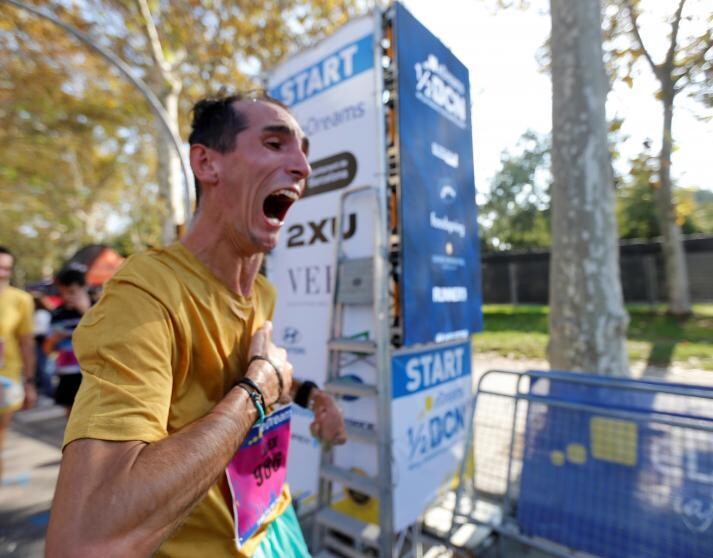
Roca spent years training for this moment, running seven half marathons before taking on the marathon. Earlier this year, he ran the Granollers Half Marathon, finishing in 2:45:16. A month later, on Feb. 19, he completed the Barcelona Half Marathon in a personal best time of 2:38:28.
He told Spanish media El Mundo before the race that he wanted to send a message to the world. “The limit is up to you, and if you want to achieve an objective, whatever difficulties you have, with attitude, willpower, perseverance and resilience, you can achieve everything you propose. And if you do not achieve it, you will have given everything and must feel gratified.”
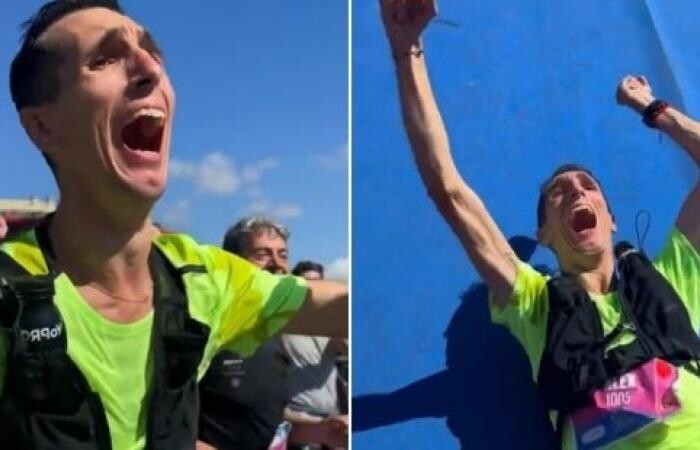
Roca was accompanied by his brother Victor and his interpreter, Valentí Sanjuán, who have for years accompanied him in many of his challenges and training.
San juán also helped Roca broadcast his entire race on his online Twitch channel, where friends and fans could follow every step of his journey.
(03/21/2023) ⚡AMPby Running Magazine
Zurich Marato Barcelona
The race is popular both with pro athletes and amateurs and provides a unique running experience in and around Zurich. The route runs for the most part along Lake Zurich and consequently is not only attractive as a sports event, but also visually. The start and finish lines are at the upper lake basin and go through downtown Zurich, which...
more...Kenyan Magdalene Masai will be going for the win at the Vienna City Marathon on April 23
Fresh from finishing third at the Rome-Ostia Half Marathon, Magdalene Masai will be chasing the Vienna City Marathon on April 23 in Vienna, Austria.
Sharpening her skills in Iten in Elgeyo Marakwet county, the youngest of the Masai running siblings, said she hopes she will run well and earn a slot for Team Kenya at the 2023 World Athletics Championships later in the year in Budapest, Hungary.
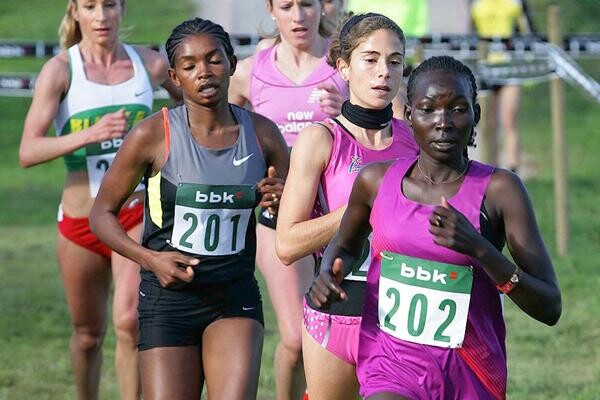
“Training is going on well in Iten and I hope to post my personal best in Vienna on my debut in a race that has been dominated by Kenyans,” said Masai.
Currently enjoying a personal best of 2:22.16 set in 2019 with victory at the Toronto Marathon, Masai said if she runs well, she is likely to land a place in the Kenya team to Budapest.
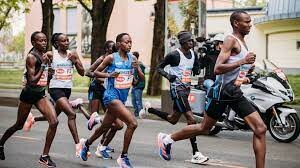
“I last represented the country in the 2015 Africa Championships, where I finished 4th in the 3,000m steeplechase. This is an opportunity for me to win the confidence of the Kenyan athletics authority,” said Masai.
Kenyans have won Vienna 17 times in the men's cadre and nine in the women's since the inception of the race in 1984.
The title is currently held by Vibian Chepirui, who won both the 2021 and 2022 titles while Cosmas Matolo is the men's champion.
“ Kenyans have in the past performed well in the race and it's because of this that we are always invited for the race. I want to run well on my debut in the race to enter history books,” she said.
The Mount Elgon-born athlete in Bungoma county returned into action last year after maternity leave, where she finished 4th in Toronto Marathon.
She then finished third in the Rome-Ostia Half Marathon where Kenyan Dorcas Tuitoek and Kenyan-born Israeli Lonah Salpeter took the top two positions.
“On my return, I did not manage to run well but at the moment, I have trained well for the championships,” she said.
Masai will be up against fellow Kenyan Visiline Jepkesho as well as Ethiopian Senbere Teferi and home girl Julia Mayer.
(03/21/2023) ⚡AMP
by Emmanuel Sabuni
Vienna City Marathon
More than 41,000 runners from over 110 nations take part in the Vienna City Marathon, cheered on by hundreds of thousands of spectators. From the start at UN City to the magnificent finish on the Heldenplatz, the excitement will never miss a beat. In recent years the Vienna City Marathon has succeeded in creating a unique position as a marathon...
more...Chepkwony and Allam smash PBs to win at Rome Marathon
Betty Chepkwony and Taoufik Allam were the victors at the Acea Run Rome the Marathon, smashing their PBs by seven and four minutes respectively to win at the World Athletics Elite Label road race on Sunday (19).
Chepkwony took the women’s title in 2:23:02, while Allam triumphed in 2:07:43.
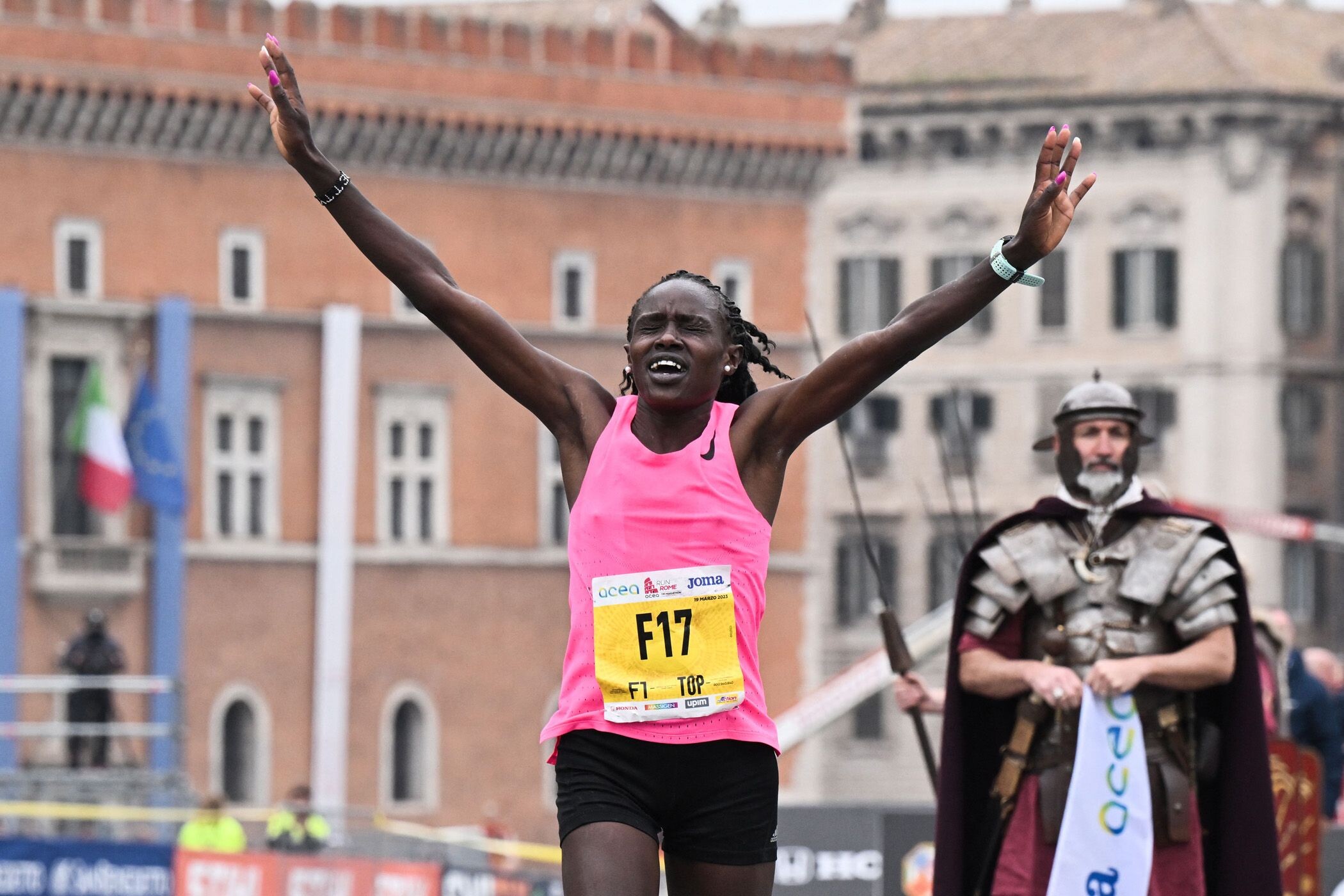
Ethiopia’s Zinash Getachew, Mulugojam Ambi, Jemila Shure, Fozya Amid and Kenya’s Brenda Kiprono went to the front in the early stages, reaching 10km in 33:28 while Chepkwony was 27 seconds behind.
Ambi, Getachew and Shure reached halfway in 1:11:07, inside course record pace (2:22:52), while Chepkwony had reduced the gap on the leading group to 17 seconds.
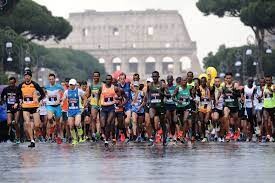
After going through 30km in 1:41:32, Ambi and Shure struggled in the final 10km. Chepkowny, meanwhile, reeled in the leaders and soon started to pull away. She crossed the finish line in 2:23:02, smashing her previous PB (2:30:28) with the third-fastest winning time ever in Rome.
Amid finished second in 2:25:08, improving her previous PB by three minutes.
“I am very happy with the win,” said Chepkwony. “I really enjoyed running in this beautiful city. I ran a smart race in the first half. I know that I can run faster, but I am happy with my performance on a difficult course.”
In the men’s race, a ten-man pack went through 5km in 15:00, 10km in 29:56, and 15km in 44:58. Five of those – Allam, Wilfred Kigen, Rogers Keror, Felix Kirui and Berhanu Heye – stuck with the pacemakers through the half-way mark (1:03:28), which was just outside course record pace.
Kigen, Heye, Keror and Allam reached 30km in 1:30:51 as the pace started to drop. Just a couple of kilometres later, Kigen and Allam pulled away from the rest of the field and had opened up a gap of 19 seconds on Keror by 35km.
Allam finally broke away from Kigen at 39km and went on to win in 2:07:43, becoming the first Moroccan winner of the Rome Marathon. Wilfred Kigen finished second, improving his PB to 2:08:45.
“I was determined to win the race,” said the 33-year-old, who set his previous PB of 2:11:30 in Dublin last year. “The pacemakers did a good job in the first half of the race. The final part was challenging because of the cobblestones.
In the days leading up to the race, World Athletics delivered a Race Emergency Medicine Course.
Diego Sampaolo for World Athletics
Leading results
Women
1 Betty Chepkwony (KEN) 2:23:02
2 Fozya Amid (ETH) 2:25:09
3 Zinash Debebe Getachew (ETH) 2:25:59
Men
1 Taoufik Allam (MAR) 2:07:43
2 Wilfred Kigen (KEN) 2:08:45
3 Rogers Keror (KEN) 2:10:50.
(03/21/2023) ⚡AMPby World Athletics
Run Rome The Marathon
When you run our race you will have the feeling of going back to the past for two thousand years. Back in the history of Rome Caput Mundi, its empire and greatness. Run Rome The Marathon is a journey in the eternal city that will make you fall in love with running and the marathon, forever. The rhythm of your...
more...Olympian Madeleine Kelly signs with Asics
Canadian 800m Olympian Madeleine Kelly has gone from winning her first race in a pair of Asics shoes to signing her first professional contract with the brand. This has been a promising development as Kelly begins her journey to the 2024 Olympic Games in Paris.
The 27-year-old from Pembroke, Ont., is one of only eight Canadian women who have ever broken the two-minute barrier in the two-lap event. In 2022, she represented Team Canada at the World Indoor Championships, World Outdoor Championships and Commonwealth Games.
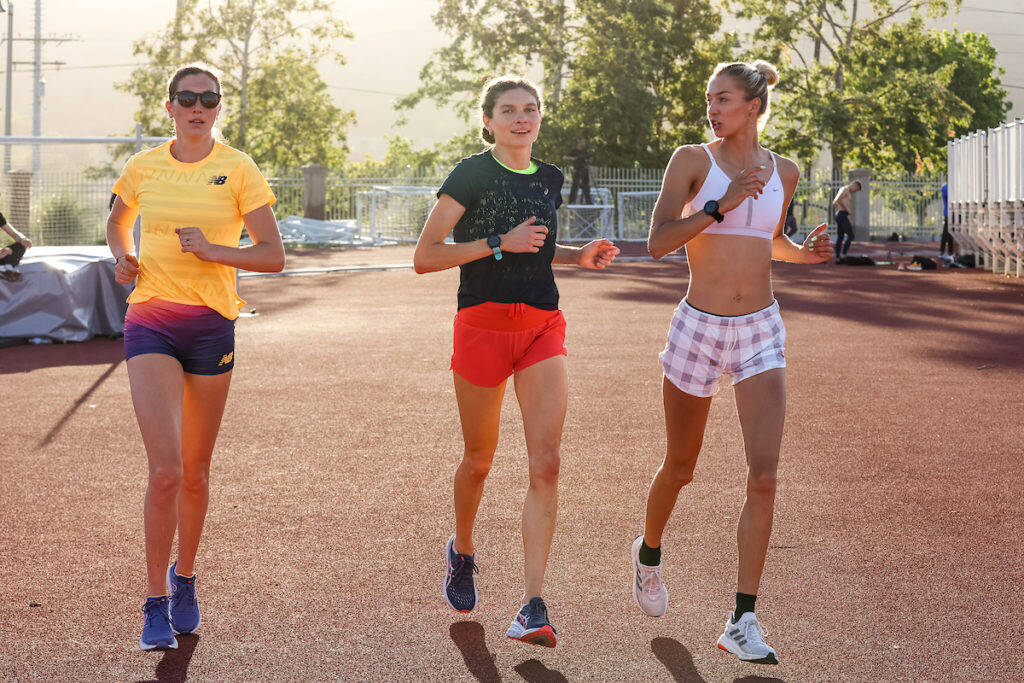
The possibility of turning pro wasn’t on Kelly’s radar until she was approached by Asics last year. “It feels great to turn pro and sign with such an established brand,” says Kelly. “I am excited! I can now say running is my job… in a good way.”
Kelly only made her first national team in 2021, for the Tokyo Olympics. She finished fifth in her 800m heat, narrowly missing qualification to the semi-final in a sprint finish.
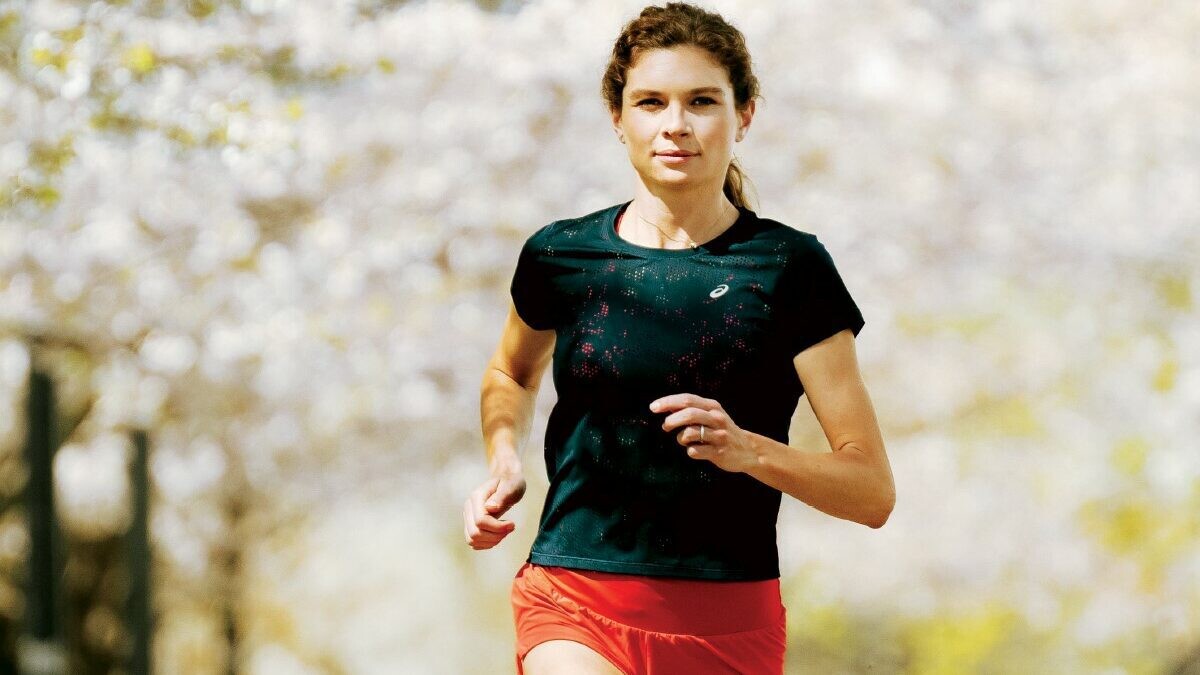
She says that even though she went to the Olympics, as an athlete training in Canada, she knew a pro contract wasn’t a guarantee. “There is a big divide between athletes in the U.S. and Canada,” says Kelly. The U.S. market is about 10 times the size of Canada’s, and that equals more sponsorship dollars and fans, increasing an athlete’s marketability.
Kelly says her goal heading into the 2023 season is to stay consistent and run fast times; ultimately, her goal for the season is to reach the world championship semi-final. “I really want to be a semi-finalist or finalist at a major championship,” says Kelly. “It would be a huge confidence boost for me, before heading into the Olympic year.”
Kelly took an uncommon route to professional running, staying in the Canadian U Sports system (she attended the University of Toronto) instead of going to the NCAA. Her 2017 cross-country team at U of T featured five athletes who have represented Team Canada at some point in their career (Sasha Gollish, Lucia Stafford, Gabriela Debues-Stafford and Jazz Shukla).
“We had a talented group of women, and we all got along well,” says Kelly. “It was an inspiring training environment, and we all just wanted to make each other better.”
Kelly currently lives and trains in Hamilton, Ont., under the supervision of her collegiate coach, Terry Radchenko, who is now in his second year with the University of Guelph track and cross-country program.
One aspect of training in Canada Kelly has enjoyed is that she’s been able to pursue her dream in her own way, having friends and family close by. “I think you get the best results when you train and compete in a way that’s authentic to you,” she says.
When she isn’t training, Kelly writes freelance stories for Canadian Running and is a co-host of “The Rundown” on The Shakeout Podcast. She is also a volunteer coach with the PACK Running Club in Hamilton, Ont., where she enjoys helping young runners find a love for the sport.
(03/21/2023) ⚡AMPby Marley Dickinson
Trail and ultrarunners run mostly for mental benefits, study finds
At least once in their athletic career, every runner will be asked why they run. There are countless reasons why runners pick this sport, and everyone’s answer to that question—why?—will be different. However, according to a recent survey conducted by researchers at University of Central Lancashire in the U.K., more than 90 per cent of ultrarunners and trail runners are in the sport because it “is important for [their] mental health” and it helps them “feel more positive in life.”
The survey
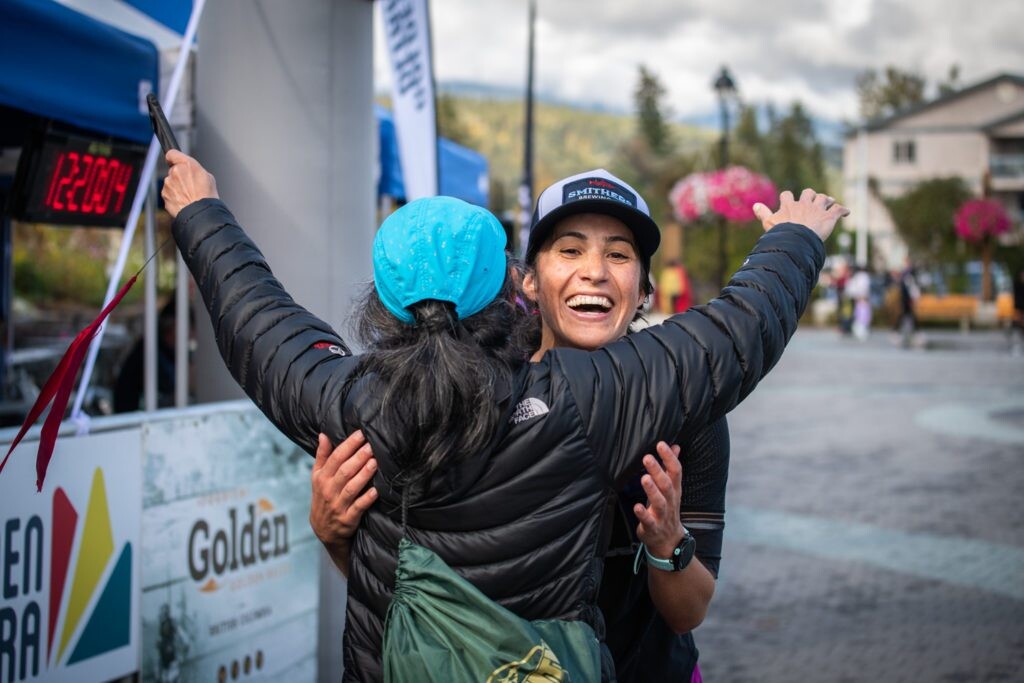
The survey was conducted for the Trail Ultra Project, which, as noted on Instagram, “aims to explore and document the growth of trail and ultrarunning in North America and the U.K.” The survey, which was live on the Trail Ultra Project website for six months, from April to Sept. 2022, received more than 1,000 responses.
Of those 1,000 runners who filled out the survey, 536 were British, 379 were American, 36 were Canadian and the remaining 68 respondents were from 28 different countries. Just over 59 per cent of those who responded were men, and 40 per cent were women (0.9 per cent identified as non-binary). Ninety-one per cent of respondents had completed at least one trail race and a little over 70 per cent had run at least one ultramarathon.
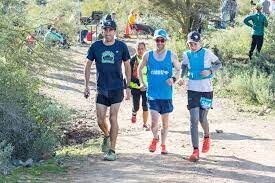
Why runners run
Of all of the more than 1,000 runners who responded to the survey, the vast majority cited their mental health and increased positivity as a reason they’re in the sport. The survey asked individuals to say how important different parts of the sport are to them, on a scale of one to five (one being not important at all and five being very important).
When it came to the statement that “running is important for my mental health and helps me to feel more positive in life,” 68 per cent of respondents scored it at a five. Twenty-two per cent gave that statement a four, adding up to 90 per cent of trail runners and ultrarunners surveyed noting that the mental benefits of the sport were important to them. Only one per cent of respondents gave this reason a score of one.
The “mental health and general positivity in life” statement was by far the most popular of all the reasons listed. Other high-scoring options included how running provides respondents with a “connection to nature and wild landscapes” (61 per cent voted a five, 23 per cent voted four), the alone time running can create (43 per cent scored this at a five and 30 per cent said four) and how running can be an “escape from the pressures” of everyday life (36 per cent voted five, 27 per cent voted four).
Regardless of what gets someone started in running or what encourages them to stick with it, there is no wrong reason to love the sport. You may be in the one per cent of people who don’t care about running’s mental benefits, or that may be the biggest reason for your time as a runner. Whatever the case, if you can find your own answer to the question “Why do you run?” you’ll be set for a long and happy athletic career.
(03/20/2023) ⚡AMPby Ben Snider-McGrath
I used to run in pursuit of race results. Not for fitness. And certainly not for fun
First, I should clarify: I wasn't a pro. I wasn't even that fast. I just acted like I was, prioritizing my training over everything. The local trail racing scene in my hometown of Minneapolis was low-hanging fruit a decade ago, and I trained to win or podium at those races with joyless devotion.
I used to turn down invitations to run with a friend or a group if it meant I'd have to adjust a training plan written beforehand. When I did run with others, I'd frequently add mileage before or after.
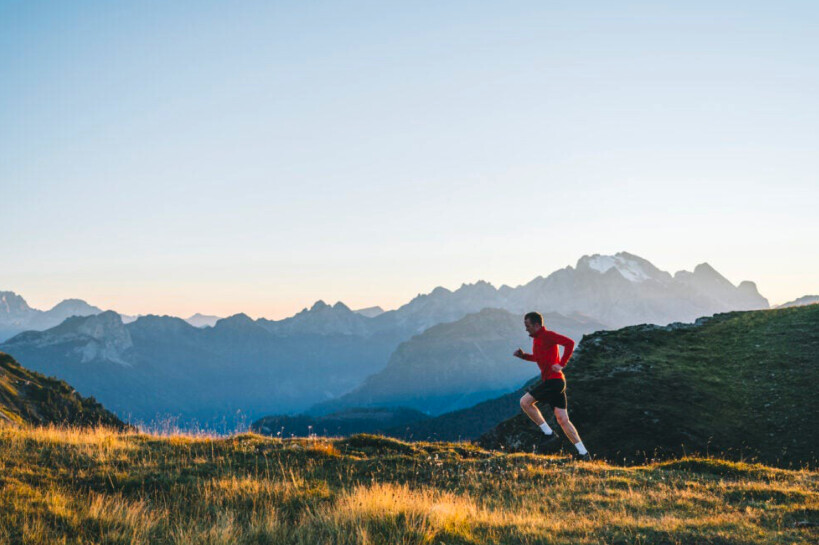
Once, after a short run at a friend's bachelor party, I dipped out the back to run pre-prescribed hill sprints, sneaking off to do them because explaining what I was doing would be awkward and skipping it would be unthinkable. (It turns out disappearing to run farther without warning was, in my friends' eyes, also a little weird.)
I used to obsess over distance and vert. I don't just mean I wanted to hit daily and weekly goals - I mean I'd run around the trailhead parking lot to make sure I hit 20 miles on the dot. I mean I learned exactly how far over ".0" I needed to run to avoid the dreaded ".99" when I uploaded it. (On my Suunto, it was 0.02; my Apple Watch, 0.08; my Soleus, 0.23.) Once, when I uploaded a bike ride and it reported 4,999 feet of vert, I nearly threw my phone through the window.
At times, I could be a bit of a nightmare to run with. Once, a friend visiting from out of town wanted to run 5 miles. But I wanted to run 10, so I told him we were running 5, then took him on a 10-mile loop with no bailout points. (He started walking in protest near the end. I think we're still friends - he let me speak at his wedding a couple years later.)
A different time, that same friend and I went camping on Minnesota's north shore with the intention of running up Eagle Mountain - the highest point in the state - the next day. But rain came through, our tent leaked, and we were soaked, shivering, and in no condition to run. I made him do it with me anyway. When we got to the top, it was completely socked in, the famous viewpoint covered by a white sheet of clouds. (Maybe that was a step too far - he didn't come to my wedding.)
For several years, every step I ran, whether a workout or a recovery run, was in the pursuit of improvement. I may well have been on the road to disownment by my family and friends. But somewhere along the line, I snapped out of it.
How?
Ironically, the single biggest thing that changed my outlook was moving to a mid-sized town backed by spectacular mountains that were rife with trails - perfect for extremely serious training, on paper. But it had the opposite effect.
I moved there to work for a running shoe brand. You'd think living and breathing running all day, every day, would fuel my passion for it. You'd be wrong, though. The challenges got bigger - and my perspective widened with them.
When I arrived in Santa Barbara, I pictured myself becoming a super-fit mountain athlete on the challenging trails that were, almost literally, out my back door. But I quickly found that, man, these trails are really challenging. I've written before about how difficult running in the Santa Ynez mountains can be.
That dramatic terrain lent itself to epic days out with incredible views. The system of front- and backcountry trails made for some mouthwatering linkups. But it was all so steep. And slow-moving. And hot and sunny. (I'm a ginger from the Upper Midwest.) The conditions made recovery tougher, so it became overwhelming to try and hit mileage goals out there. It was normal to be out for four or five hours, tag a couple peaks, and have less than 20 miles to show for it.
Rough going, if you're the sort of person who runs back and forth in front of your house to make sure you hit exact mileage.
So I had a choice: I could use even more of my free time and energy to ensure I stuck to my old training ways. Or, I could loosen my grip. (Especially since I was nowhere near being a pro athlete.) In a rare moment of clarity, I realized - if I'm not having fun, what's the point?
So I adapted. One weekend, I planned a run based not on mileage, but on tagging a summit. The next weekend, I planned a two-summit run, then one with two plus a saddle for the most aesthetically-pleasing Strava map. The mileage wasn't always high, but these were long days out. I even initiated a three-man excursion to connect the front-country's three most prominent peaks in one go - and didn't get mad when we got off-course, bushwhacked through poison oak and came perilously close to running out of water. For nearly five hours of trouble? 15 well-earned miles.
I embraced the adventure - the time on my feet, the vast emptiness of Los Padres National Forest, the definition of "epic" as something other than long and fast, and the very real sense of risk in the backcountry. I didn't quite learn to stop and smell the roses, but I learned to enjoy running with friends, especially when one of them had a wild idea about running slowly via headlamp at night, or linking point A to point B via the ridgeline, mileage be damned.
If I'm not having fun, what's the point?
Some other stuff happened, too: That running shoe gig? Well, it was still a 9-to-5 desk job, which can put a damper on training. And it turned out when my job revolved around running, I wanted to use my free time to stay a little more well-rounded.
I also got a little older. I got injured a little more than I used to. Hard efforts started to come in at a pace I'd once considered a recovery run. In the interest of running as long as possible, I dialed back my mileage. This happens to everyone, so it was nice that it coincided with a new outlook and a new playground, rather than precipitating an identity crisis.
In my hard-charging days, I loved seeing my times improve, and I loved winning on the rare occasion it happened. But I realized it's dangerous to depend on those things for happiness, or to be unwilling to redefine what "winning" and "improving" mean to you, because an injury or plain-old time means that eventually your raw speed will plateau, perhaps even regress. You can adjust your goals - some people stay motivated by age-group competition even when their PRs are behind them - or you can learn to enjoy running every day, rather than seeing running as a means to a worthy end.
I don't fret over pace. I'm just happy to be out there.
Our journeys for improvement never stop, but we can find things to improve other than how fast we've run a given distance. In my case, I improved my navigation skills, hydration and nutrition, and frequency of sunscreen reapplication. I also improved my mood. Maybe not as sexy as a 50-mile PR, but it's something to hang my hat on.
I've traded a white-whale fixation on future results for day-to-day enjoyment. I think they're both noble in their own right, and I don't regret my old approach, but I know it wouldn't work for me now. These days, I try and enjoy the act of running, rather than exclusively enjoying "having run," as Brendan Leonard coined it.
When I run now, I'll stop and put my hands on my hips at a cool overlook, like in all those marketing photos you see. I won't roll my eyes if someone wants to take a group photo. (Well, I will, but I won't verbally protest, too.) I'll pet all the very good dogs I encounter. I'll run with people when I'm invited to. I'll get coffee afterward, even if it means we cut a couple miles off for time constraints. I don't fret over pace. I'm just happy to be out there.
I still sometimes run back and forth in front of my house to hit an even mileage, though. That's one habit you'll have to pry from my sticky, GU-covered fingers.
(03/20/2023) ⚡AMPby Trail Runner Magazine
Tokyo residents outraged after marathon runners urinate in sacred park
As all runners know, when you gotta go, you gotta go, but a recent video posted to the social media app TikTok has the residents of Tokyo up in arms after a group of marathon runners were seen urinating in a public sacred garden at Shinjuku Chuo Park during the 2023 Tokyo Marathon on March 5.In the video, you can see race officials waving to the runners to tell them to stop urinating in the gardens, but it clearly did not work. Residents of Tokyo were bothered by the behaviour and condemned the runners on social media, also putting the race organizers in question. The Tokyo Marathon organizers commented that they had noticed the matter and pointed out that there were 1,114 portable toilets set up for this year’s event, distributed from start to finish (650 at the start, 397 on the course and 67 at the finish).
The race also issued an apology, saying they would try to prevent such things from happening in the future.
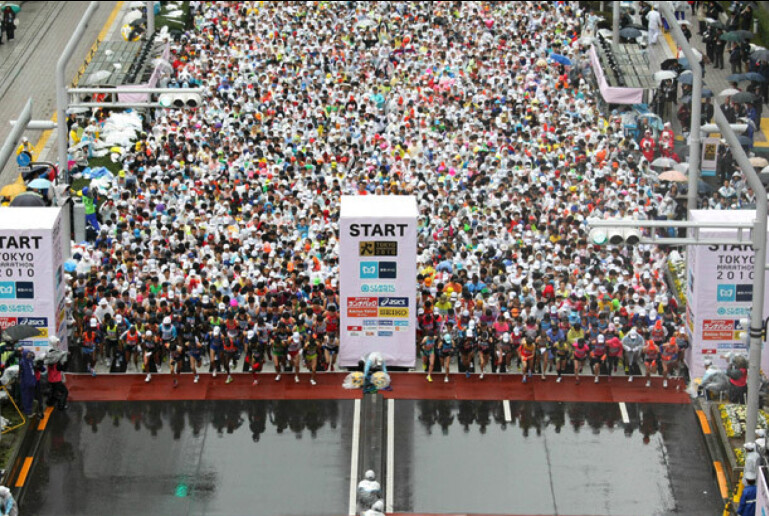
The incident occurred at the start line, in front of the Tokyo Metropolitan Government Building, where a group of 20+ runners were seen urinating on the hedges of Shinjuku Chuo Park and throwing their discarded clothing in the bushes.
Comments on the video range from “Why do many foreigners feel the need to urinate everywhere… where are the restrooms? Were there enough?” and “No matter how you look at it, the race management screwed up.”
Another user also pointed out that urinating in public places in Japan is listed as a minor crime, and those who do it should be reported or charged. The race organization, which annually stages a major marathon for over 40,000 runners said they had notices and information signs around the course on where marathon runners could find bathrooms. After the event, race organizers said they cleaned up all parks on the Tokyo Marathon course, but many suspect that the damage had already been done.Many runners at the big marathons don’t want to stand in the porta-potty lineup for fear of missing the start, so they pull off to the side of the course after the start.
At the 2019 NYC Marathon, Goodwill NYNJ, a partner to marathon host NYRR, was on hand to collect a whopping 122,760 pounds (55,683 kg) of clothing from the NYC startline in Staten Island, N.Y.–which works out to 2.26 pounds (just over 1 kg) per starter. Goodwill ended up distributing the clothing to a collection of its retail locations.
Implementing a collection of donation bins closer to the start line could be an approach the Tokyo Marathon could consider in 2024.
(03/20/2023) ⚡AMPby Running Magazine
Walelegn wins again in Seoul
Ethiopia’s Amedework Walelegn was a comfortable winner of the Seoul International Marathon on Sunday (19), crossing the finish line of the World Athletics Platinum Label road race in a PB of 2:05:27.
It was his second victory in the Korean capital, having won there just four months ago in 2:06:59 at the JTBC Seoul Marathon. On this occasion, the 2020 world half marathon bronze medallist went much quicker in what was just the third marathon of his career.
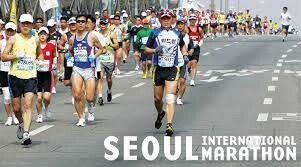
He ran as part of a pack for most of the way, passing through 5km in 14:51 and 10km in 29:33 before reaching the half-way mark in about 1:02:30, putting them on course for a finishing time of about 2:05 – just outside the course record of 2:04:43 set last year by Mosinet Geremew.
The pace dropped slightly leading up to 30km, which was reached in 1:29:31 with eight men still in the lead pack. Walelegn then put in a bit of a surge and covered the next 5km segment in 14:34 – the quickest of the race. It was enough to break away from compatriots Shifera Tamru, Haftu Teklu and Olika Adugna Bikila, who formed a three-man chase pack.
With a seven-second lead at 35km and a 27-second lead at 40km, Walelegn continued to pull away from his opponents, and went on to cross the line in 2:05:27.
The three chasers broke up in the final two kilometres. Tamru – a former winner in Seoul (2019) and Daegu (2022) missed out on adding another Korean marathon victory to his collection, taking second place in 2:05:41. Teklu, who was contesting just the second marathon of his career, was third in 2:05:53, finishing comfortably ahead of Bikila (2:06:29).
Only the men’s race had been granted a World Athletics label. The women’s race, entirely a domestic field, was won by Jeong Da-Eun.
(03/19/2023) ⚡AMPSeoul International Marathon
The only marathon hosted in the heart of the Korean capital. Seoul marathon is the oldest marathon race hosted in Asia andis one of the fastestmarathon in the world. First held in 1931, Seoul marathon is the oldest marathon eventcontinuously held in Asia, and the second oldest in the world followingthe Boston Marathon. It embodies modern history of Korea, also...
more...Obiri breaks event record, Kiplimo gets the better of Cheptegei in New York
Two-time world 5000m champion Hellen Obiri and world cross-country champion Jacob Kiplimo produced dominant performances at the United Airlines NYC Half on Sunday (19).
Obiri was locked in a duel with Ethiopia’s 2015 world silver medallist Senbere Teferi for much of the race, but broke away from the defending champion just before 15km to win in an event record of 1:07:21. Kiplimo, meanwhile, waited until just after 15km to make his move, and once he dropped Joshua Cheptegei he didn’t look back, going on to win in 1:01:31.
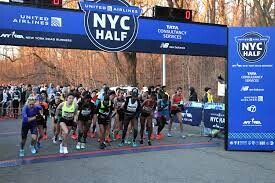
Obiri and Teferi made an early break from the rest of the field. By the time they reached 5km (15:50), they already had a 22-second margin over Diane van Es of the Netherlands, who led a small chase pack.
Teferi was tucked in right behind Obiri for a large part of the race with the Kenyan leading the duo through 10km (31:29). But as they started to approach the 15km marker, Teferi’s challenge began to fade. Obiri forged on ahead and crossed the line in 1:07:21 to take 14 seconds off the event record Teferi set last year.
Teferi had to settle for second place on this occasion, clocking 1:07:55. European cross-country champion Karoline Bjerkeli Grovdal came through for third place (1:09:53).
“I’m so grateful to have won this race,” said Obiri, the 2019 world cross-country champion. “There was a lot of wind, but I tried to push the pace after 15km.
“My mind was just on winning and not the time, because it is a hard course. I still wanted to run sub-70, so I’m happy to have done that and to have won today.”
Britain’s Chris Thompson was a surprise early leader of the men’s race, opening up a significant gap on the rest of the field in the first 5km, covered in 15:00. He just about held on to the lead until 10km (30:10), by which point the large chase pack was just a few strides behind.
Once Thompson had inevitably been reeled in, Morocco’s Zouhair Talbi led what was now a lead pack of about 15 runners. The group soon became strung out with Talbi leading at 15km (44:35), just ahead of Kiplimo and Cheptegei.
Just a minute or two later, Kiplimo – contesting his first race since winning the world cross-country title in Bathurst last month – finally took charge and started to pull away from Cheptegei and Talbi.
Over the course of the final five kilometres, Kiplimo opened up a gap of 38 seconds on two-time world 10,000m champion Cheptegei, winning in 1:01:31. Cheptegei was second in 1:02:09, finishing nine seconds ahead of Talbi.
“I’m very excited to win this race, my first half marathon of 2023,” said Kiplimo. “Even though it was cold, I did my best. For the past few months I have been preparing for cross-country, and that helped me a lot for this race.”
(03/19/2023) ⚡AMPUnited Airlines NYC Half-Marathon
The United Airlines NYC Half takes runners from around the city and the globe on a 13.1-mile tour of NYC. Led by a talent-packed roster of American and international elites, runners will stop traffic in the Big Apple this March! Runners will begin their journey on Prospect Park’s Center Drive before taking the race onto Brooklyn’s streets. For the third...
more...Kimutai and Yimer win the Barcelona Marathon and break the race records
Marius Kimutai, winner with 2.05.06, and Zeineba Yimer, winner with 2.19.44, managed this Sunday to improve the limits of the Barcelona circuit, placing the Zurich Marató de Barcelona among the fastest 42-kilometre races in Europe. Especially commendable is the Ethiopian's timer, below 2 hours and 20 minutes.
The race launched by the hares consolidated a pace, in the leading group of men, of less than three minutes per kilometer from the start on Avenida María Cristina, which guaranteed the breaking of the Ethiopian Yihuniligne Adane's record with 2.05.53, made in the last edition 2022.
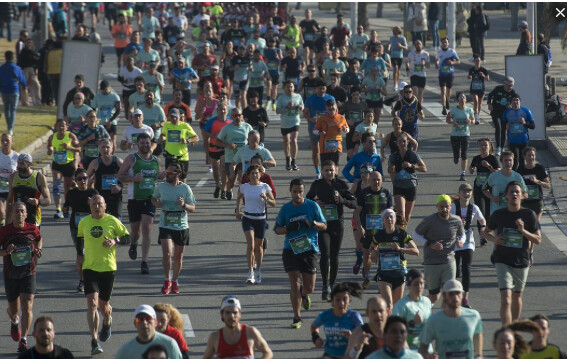
The compact group of a dozen runners that led the test passed kilometer 30 (in 1.29.18) still grouped. From here the peloton stretched following the trail of the only hare still in the race and changes of pace followed, with the favourite, the Kenyan-born Turk Kaan Kigen Özbilen, trying to control the race when the last hare abandoned in the 31.
In 35, only a couple of athletes have been able to hold the pace imposed by Özbilen, the Moroccan Othmane El Goumri and the Bahraini of Kenyan origin Marius Kimutai. The podium seemed determined, but the order on the drawer was still to be determined.
The Turk gave in at minute 39 and El Goumri, second a couple of editions ago on this same circuit with 2.06.18, took advantage of his knowledge of the route to pick up the pace, seconded by Kimutai, sixth classified in the 2021 Barcelona Marathon and therefore as well as the Moroccan, who is also familiar with the blue-painted marathon track in the Catalan capital.
Kimutai waited for a definitive change of pace, just before facing Sepúlveda street and ended up winning alone with a new circuit record, 2.05.06, although he could not go below 2.05, which was the objective of the organization. El Goumri held on to second place and finished with a new Moroccan national record (2.05.12). Özbilen was the third on the podium, finishing in 2.05.37.
Very similar script in the women's race, passing the half marathon in 1.09, and with three Africans fighting for podium places in the final kilometers. The starting pace was already setting a new circuit record, this time by a much wider margin than that of the men.
Zeineba Yeimer finally managed to run under 2.20 and set a new women's record on the circuit, which lowers the previous record by more than three minutes and places it at an enviable 2.19. Second entered Selly Chepyego (2.20.03), and third and first European the Romanian Delvine Meringor (2.20.49).
(03/19/2023) ⚡AMPTaiwan’s Wan Jin Shi Marathon concludes in wet conditions
World Athletics gives marathon gold-label designation for excellent course planning and execution
TAIPEI (Taiwan News) — More than 11,000 runners competed in the 2023 New Taipei City Wan Jin Shi (WJS) Marathon on Sunday (March 19), drawing 300 competitors from 33 countries.
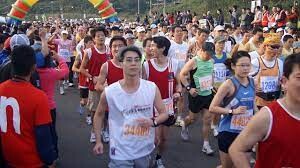
The road race is Taiwan's first World Athletics certified “Gold Label” event, indicating that the running surface and route meet top-quality international conditions and the event is supervised by properly trained medical staff, per UDN.
The WJS Marathon was held in Wanli’s Emerald Bay with a series of warm-up activities before the 6:00 a.m. start. New Taipei City Mayor Hou You-yi (侯友宜) had the honor of firing the starter’s pistol and both domestic and foreign competitors took off on the 42-kilometer marathon race. Afterwards, a shorter 10km race also commenced
Later at a press conference, Hou said he was proud that the WJS Marathon became the first event in Taiwan to be certified with the “Gold Label” by World Athletics.
Previously, the group went under the name International Amateur Athletic Federation (IAAF) and is recognized as the main governing body for athletic competitions such as track and field, road running, cross-country racing, and marathons.
Hou added that approximately 11,000 runners participated in today's marathon. Among them, 300 runners came from 33 countries, such as Bahrain, Spain, Ethiopia, and Kenya. He was also proud that many marathoners wore clothing made from coffee grounds and PET bottles, which promoted his future vision for sustainability.
Race organizers are planning to apply for a special green certificate next year to make the road race more sustainable. This year, LED screens at the start and finish of the race replaced PVC signage, and even race result certification was provided electronically instead of being printed.
In the end, it was Kenyan athlete, Barnabas Kiptum, who won the race in 2:11:57 with the top Taiwan male finisher being Chiang Chieh-wen (蔣介文) who crossed the finish line in 2:23:06, per UDN.
As for the women's competition, it was won by Ethiopian Bekelech Gudeta Borecha in 2:29:25. The top Taiwan female finisher was Lisa Reis (雷理莎) in 2:46:24.
(03/19/2023) ⚡AMPTefera takes down Ingebrigtsen to retain world indoor 1500m title
When the Olympic champion met the world indoor champion, something was always going to give. In the end, as Jakob Ingebrigtsen and Samuel Tefera fought towards the line in the men’s 1500m final at the World Athletics Indoor Championships Belgrade 22 on Sunday (20), it was the Norwegian star who had no choice but to concede.
Not that Ingebrigtsen ever gave up, the 21-year-old trying to summon something – anything – to repel the late charge of Tefera, but it was no use, with the 22-year-old Ethiopian taking gold in 3:32.77, Ingebrigtsen taking silver in 3:33.02, and Kenya’s Abel Kipsang the bronze in 3:33.36.
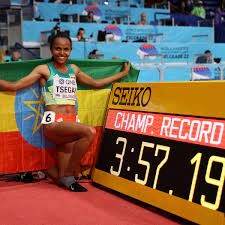
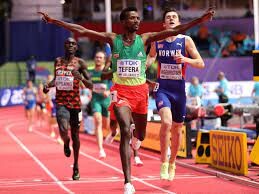
Before the race, the head-to-head record between the big two was 11-0 in favour of Ingebrigtsen, but no one beats Samuel Tefera 12 times in a row, not when this is a distance at which he held the world indoor record at 3:31.04 for the past three years, until Ingebrigtsen broke it earlier this year with 3:30.60.
That race in Lievin, France, in mid-February made the Norwegian the hot favourite for the title in Belgrade, and when the gun fired he adopted similar tactics to the Olympic final in Tokyo, or indeed most races on the circuit.
He made sure it was fast.
With Kipsang rocketing through the opening lap in 27.60, Ingebrigtsen waited until the second to hit the front, stringing the field out behind as he passed 400m in 55.81, 800m in 1:53.9 and 1200m in 2:51.16.
But tracking him all the way, keeping his powder dry, was Tefera, the slightly more measured pace compared to the race in Lievin allowing him to sit in his slipstream into the final bend. Tefera then moved wide off the turn and emptied the tank to edge past his rival up the home straight, retaining his world indoor title with a championship record of 3:32.77.
“The race was very tough, but I feel very happy now because I became the champion,” said Tefera, who said he had surgery on his achilles tendon last year, an injury picked up during the Tokyo Olympics.
“I could not do many activities within the training but now I am completely fit,” he said. “I feel normal and I am ready for any kind of races and championships.”
Ingebrigtsen was gracious in defeat, not that he was too pleased about his silver.
“I came here to fight for the gold and it was a good fight,” he said. “I didn’t feel that great. Usually I feel a bit tired from 600 to 800 then it starts to loosen up but that didn’t happen tonight so I’m not 100 percent. Tefera was better than me tonight. I thought I was better than him, having run the record.”
Asked if he would do anything different if the race was run again, he said: “If I knew that I was completely s*** tonight, then of course I’d do a lot of things different, but I didn’t have any factors telling me that before the race.”
In third, Kipsang claimed the first global medal of his career, having been edged into fourth at the Olympics last year. Ethiopia’s Teddese Lemi finished fourth in 3:33.59, with Australia’s Ollie Hoare fifth and Britain’s Neil Gourley sixth.
The following day, on his return home after not feeling fully fit, Ingebrigtsen shared a photo of a positive Covid test on his social media and wrote: "Just arrived home in Sandnes, and decided to take a health check after a strange feeling last night. Leading up to the race, everything felt normal, with negative PCR test and several rapid tests. Bad timing but in some way unavoidable. Now it's all about recovering and getting back to training."
(03/19/2023) ⚡AMPby Cathal Dennehy for World Athletics
3-time champion Molly Huddle is ready for 2023 NYC Half
The United Airlines NYC Half came into Molly Huddle‘s life in 2014 and it was one of the key turning points in the now 38 year-old’s storied career. Never a fan of cross country or indoor track, the 28-time national champion liked to de-camp from her Providence, R.I., home in the winter to put in her pre-season base miles in the warmth of Arizona. The NYC Half, with its mid-March date, was the perfect race to close-out her winter training block. Her long-time coach Ray Treacy, whom Huddle affectionately calls “The Guru,” gave his blessing and she signed-up for the 2014 race. It would be her first-ever half-marathon.
With the temperature right at the freezing mark, Huddle ran the entire race with the leaders. She went through the first 10-K in 33:01, and the second in a much faster 32:21 as the pace heated up. Although too far behind eventual winner Sally Kipyego (1:08:31), she finished a close third to eventual 2014 Boston Marathon champion Buzunesh Deba, 1:08:59 to 1:09:04.
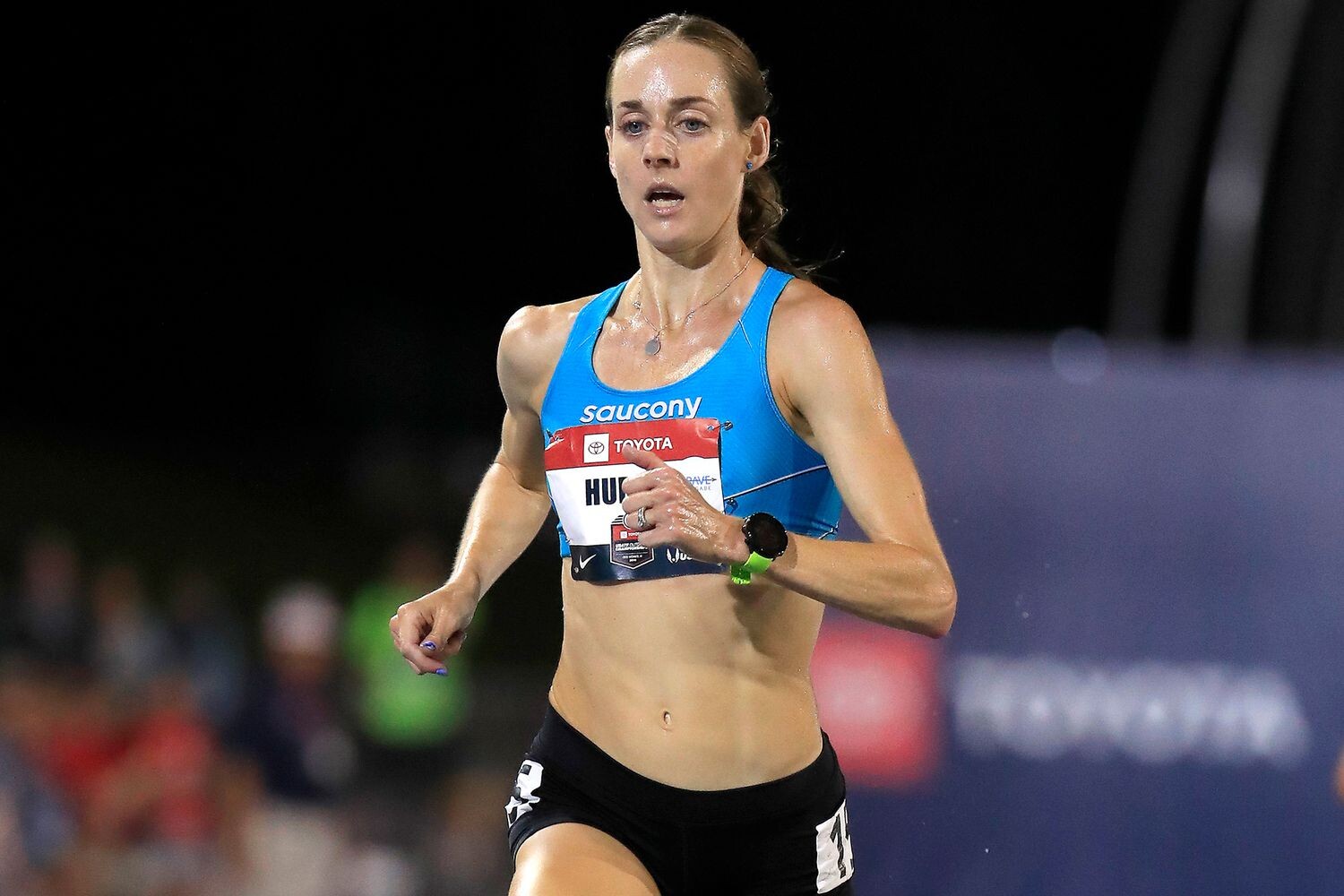
“It was good,” a shivering Huddle told Race Results Weekly’s Chris Lotsbom that day. “I think I stuck my nose in it in the beginning and the distance got to me a little in the end, but it was definitely a fun experience. I definitely want to do another one.”
The rest, shall we say, is history.
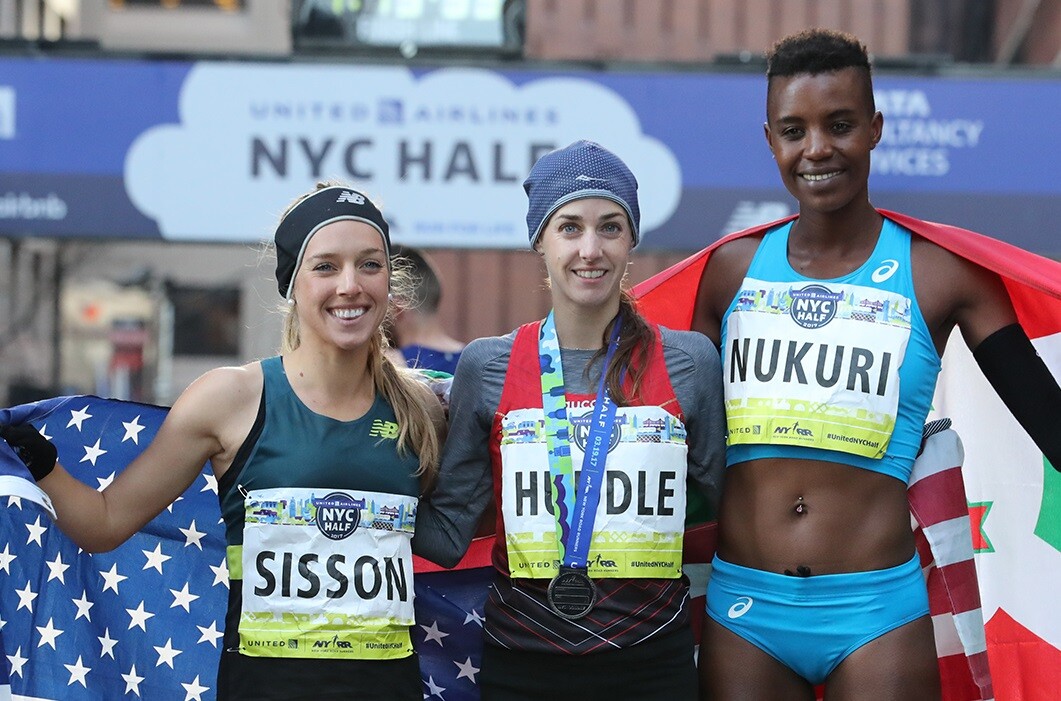
For the next three years Huddle would repeat the same winter program, training in Arizona then coming to New York for the NYC Half before starting her track season*. She won in 2015, 2016 and 2017, and in the 2016 race she set the still-standing USATF record for an all-women’s race: 1:07:41. During her reign at the top, she beat top athletes like Sally Kipyego, Caroline Rotich, Des Linden, Aliphine Tuliamuk, Buzunesh Deba, Emily Sisson, Edna Kiplagat, Diane Nukuri, and Amy Cragg. She also lowered her 10,000m personal best from 31:28.66 to an American record 30:13.17, a mark which would stand for more than six years until Alicia Monson broke it just 11 days ago at The Ten in San Juan Capistrano, Calif. She also collected $65,500 in prize money from the event which is organized by New York Road Runners.
Huddle returns to the NYC Half for the first time in six years on Sunday, but she’s no longer focused on winning. The race comes about 11 months after she, and husband Kurt Benninger, had their first child, daughter Josephine Valerie Benninger, whom Huddle calls “JoJo.” Speaking to Race Results Weekly at a press event yesterday in Times Square, she reflected on her history with the race.
“The last time I did the Half was 2017, I think, so a long time,” said Huddle, wearing a warm hat and jacket on a cold, late-winter day. “Great to be back. Great to be running again seriously after having the baby in April. So, this will be a good test.”
Huddle has been slowly building her fitness since giving birth to Josephine. She first returned to racing last August at the low-key Bobby Doyle Summer Classic 5 Mile in Narragansett, R.I., –very close to her home– clocking 29:17. Since then she has run in a series of local races in New England –a pair of 10-K’s, a 5-K cross country, and a half-marathon– to regain her racing chops.
Then, in January of this year, she ran the super-competitive Aramco Houston Half-Marathon and clocked a very good 1:10:01, a mark which qualified her for the 2024 USA Olympic Team Trials Marathon. She went back to training, and the NYC Half should give her a good reading on her progress.
“I’m really happy to fit it back in the schedule,” said Huddle, who is still breastfeeding and will be pumping while she is in New York (Kurt is with Josephine at home in Providence). “I feel like I’m having more baseline workouts now, less of a building phase and more back to normal. I’ve had a few little injury problems last month, but I’m coming around.”
A well-traveled athlete, Huddle is sticking close to home for her races now. New York is a three and one-half hour drive (or train ride) from Providence.
“I love racing within a drive distance of home now because of the baby, and this is an easier race for me to get to,” Huddle said. “So that’s good.”
Sunday’s race has yet another purpose for Huddle. It will kick-off her training for her next marathon, a distance that she hasn’t taken on since the 2020 Olympic Trials in Atlanta when she was forced to drop out with an injury. Although she wasn’t at liberty to reveal which race it will be, she said that the timing of the NYC Half was perfect, just like it always was.
“So, I’m really focusing more on the roads now; it fits in really well with that plan now,” Huddle said. She continued: “This is going to kick off a marathon build-up for me, so this will be a really good race to fit into my marathon block as we go forward the next two months.”
(03/19/2023) ⚡AMPby David Monti
United Airlines NYC Half-Marathon
The United Airlines NYC Half takes runners from around the city and the globe on a 13.1-mile tour of NYC. Led by a talent-packed roster of American and international elites, runners will stop traffic in the Big Apple this March! Runners will begin their journey on Prospect Park’s Center Drive before taking the race onto Brooklyn’s streets. For the third...
more...Senbere Teferi, the 5k world record holder, is among a group of African runners who form a strong women’s elite field at the Vienna City Marathon
Senbere Teferi, the 5k world record holder, is among a group of African runners who form a strong women’s elite field at the Vienna City Marathon. Austria’s major road running event will be staged for the 40th time and it could well be the women who produce the headlines at the jubilee edition on April 23rd.The current course record of 2:20:59 will be a target if weather conditions are suitable on the day. Organisers of the Vienna City Marathon, which is the only World Athletics Elite Label Road Race in Austria, expect to register around 35,000 entries for their event. This includes races at shorter distances staged parallel to the marathon. Registration for all races is still possible at: www.vienna-marathon.com
Teferi brings plenty of promising speed to the marathon. The 27-year-old Ethiopian clocked 14:29 in a 5k race in Herzogenaurach (Germany) in 2021. This time still stands as a world record in a women-only race. So far Teferi could not transform her speed to the marathon. However she is eager to change this in Vienna this spring. “It is my aim to smash my personal best and win the race,“ said Teferi, who will run her third marathon in the Austrian capital. Back in 2018 she ran her debut in Dubai in 2:24:11 and then she clocked 2:25:22 in Tokyo in 2020. However her half-marathon PB of 65:32 indicates that Teferi, who won silver medals at the World Cross Country Championships and in the 5,000m final of the World Championships in 2015, should be capable of running significantly quicker.
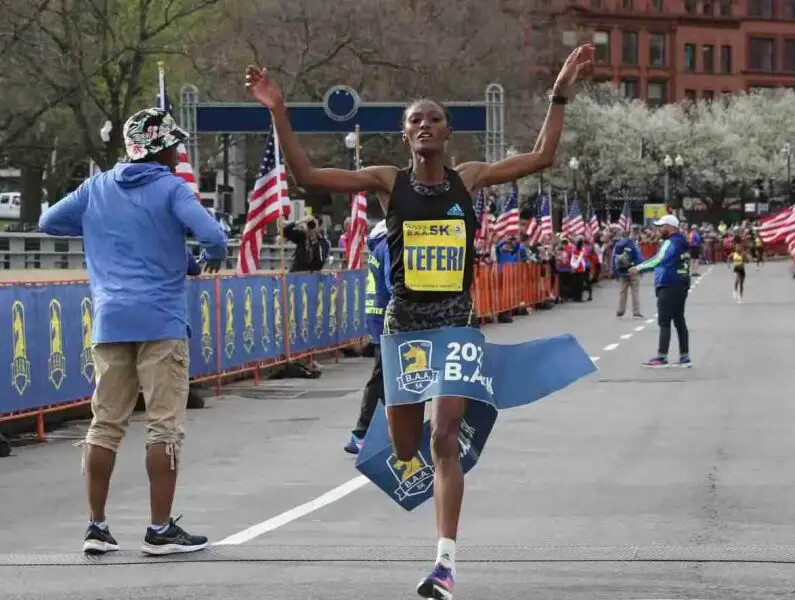
Running a faster time is one thing, winning is another. The Vienna City Marathon will provide quite a challenge for her. There are four Kenyans in the women’s field who have run faster in the marathon than the Ethiopian. Visiline Jepkesho, Magdalyne Masai, Rebecca Tanui and Agnes Keino. They intend to add to Kenya’s Vienna win streak. In the past five editions of the VCM the women’s winner was Kenyan. A year ago Chepkirui broke the course record with a time of 2:20:59.
Jepkesho is the fastest on the current women’s start list with a personal best of 2:21:37. The 33-year-old has plenty of experience in the marathon and will start a comeback in Vienna after giving birth to her two sons. She ran her PB when finishing fourth in Paris in 2017. Visiline Jepkesho has run four sub 2:23 marathons and took major victories in Rotterdam (2018) and Paris (2016).
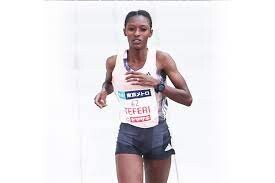
Magdalyne Masai is another athlete who recently came back from maternity leave and who has been successful before the break. In 2019 she took the Toronto Marathon with a personal best of 2:22:16. Little over a week ago the 29-year-old showed fine form, when she clocked a half marathon PB of 67:07 in the Rome Ostia race finishing third.
Rebecca Tanui and Agnes Keino will travel to Vienna full of confidence, since both of them won their autumn marathon race with personal bests. Tanui triumphed in San Sebastián in 2:23:09 while Keino smashed the course record of the Munich Marathon with 2:23:26, leaving behind the former World Marathon Champion Mare Dibaba of Ethiopia. Keino then also won the Buri Ram Marathon in Thailand in January in 2:28:08, smashing another course record.
(03/18/2023) ⚡AMPby Christopher Kelsall
Vienna City Marathon
More than 41,000 runners from over 110 nations take part in the Vienna City Marathon, cheered on by hundreds of thousands of spectators. From the start at UN City to the magnificent finish on the Heldenplatz, the excitement will never miss a beat. In recent years the Vienna City Marathon has succeeded in creating a unique position as a marathon...
more...The Zurich Marató Barcelona returns for its 44 edition this weekend
More than 15,000 participants register for Barcelona, numbers grow by 50% compared to 2022 and international runners make up more than half.
The Zurich Marató Barcelona’s 44th edition will take place with 15,127 registered participants, recovering pre-pandemic numbers and growing by 5,000 runners compared to the previous edition.
This Sunday 19th of March, the Marató also returns to its large number of participants coming from all over the world. Runners of 119 different nationalities have chosen Barcelona to live the best possible experience in the 42.195 km distance, in a renovated circuit in 2018, monumental and fast at the same time, with the ideal climate to run with thousands of participants and a powerful civic atmosphere.
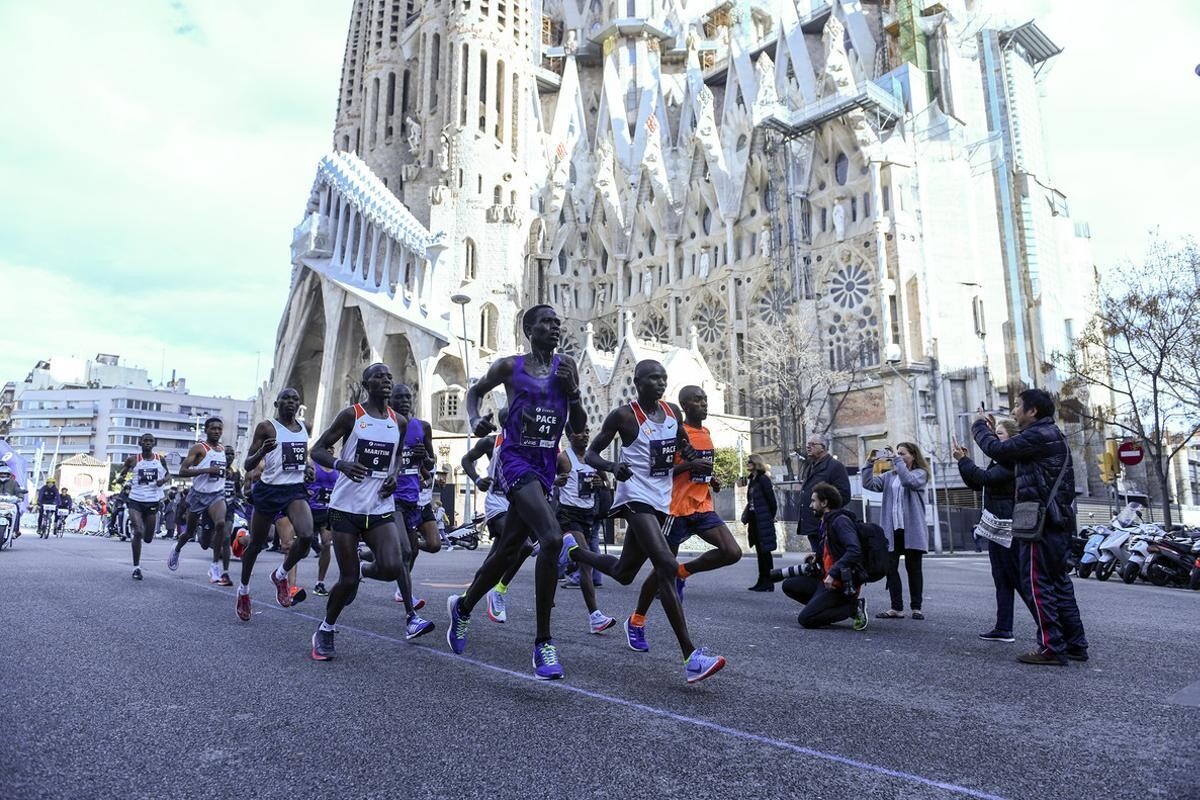
In this sense, the Councillor for Sports of the Barcelona City Council, David Escudé, has highlighted that “this is the Barcelona’s Marathon of the recovery of numbers. We are very happy because this year the overall participation of the Zurich Marató Barcelona has grown by 50% compared to 2022, exceeding 15,000 registrations. We have also doubled the international participation compared to last year’s edition and more than half of the runners (55%, 8,319 in total) come to our city from other countries. The female participation is again 25%, equalling the highest percentage in our history (3,781 women participants). Without a doubt, this will be the great running festival that we are all looking forward to, with the streets full of people cheering and enjoying this sporting event”.
On the other hand, the director of the race, Mauro Llorens, explains that “we have everything ready and we are looking forward to starting a great edition of the Zurich Marató Barcelona where, for the first time, we will be a Gold Label Marathon awarded by World Athletics. In Spain only Barcelona has this label and, in Europe, only three more marathons has it. This means having a great line-up of elite athletes and first class services for runners. We will be looking for the two circuit records to position ourselves as one of the fastest marathons in Europe”.
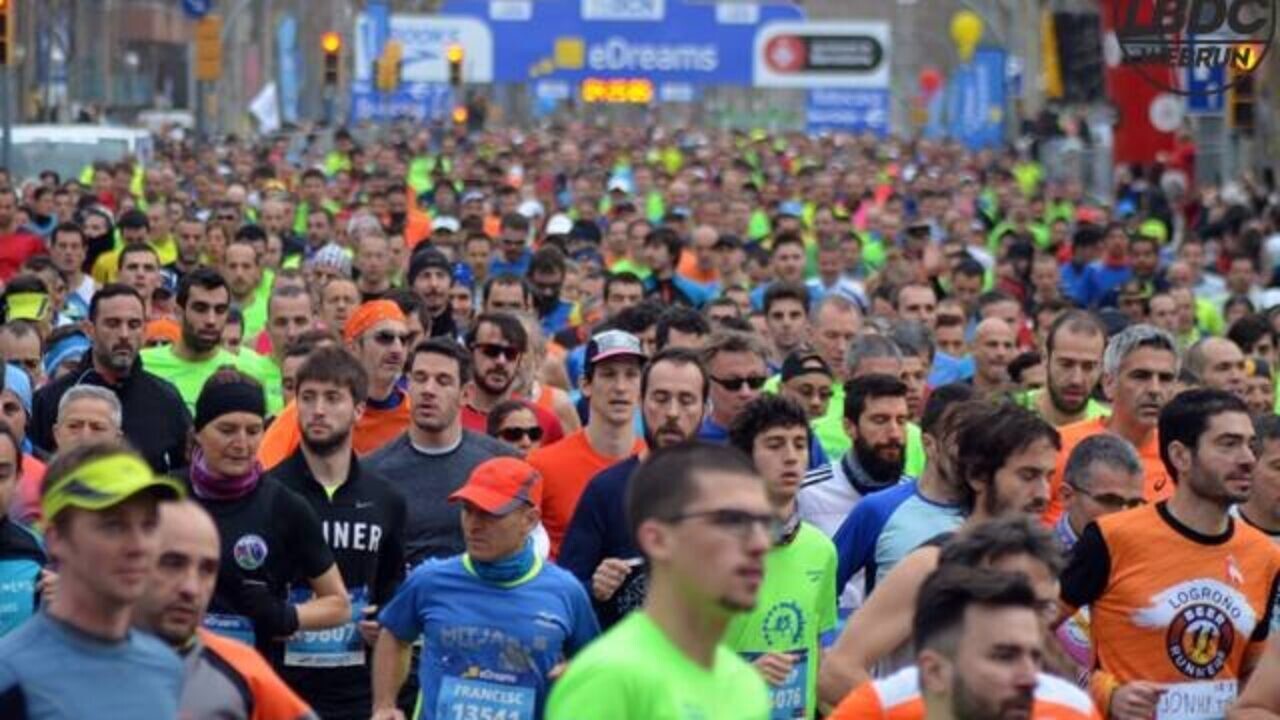
The new feature of this year’s edition is that World Athletics has awarded the Zurich Marató Barcelona with the Gold Label for 2023. This is a distinctive label awarded to an event when it guarantees a high competitive level, as well as quality and comfort for the popular runners (official refreshment points, physiotherapy and recovery services, etc.). This distinction, which represents a qualitative leap for the Marató, reinforces the city of Barcelona’s capacity to organise large-scale, international sporting events, making it the only marathon in Spain and one of only three in Europe (along with the Rotterdam Marathon and the Istanbul Marathon) to have this label.
In addition, the slogan of this edition is Run In The World’s Best City because Barcelona has been considered the best city in the world according to the Telegraph Travel 2022 ranking. The course of the Zurich Marató Barcelona is ideal to enjoy: it runs through the heart of a cosmopolitan city, which has the great modernist legacy of Antonio Gaudí or the Pla Cerdà and the Camp Nou, Plaza España, the Arc de Triomf, the Sagrada Familia, the Forum or the Seafront as some of its main tourist attractions to enjoy the Catalan capital uniquely, running on a fast and magical route.
A competitive group of athletes from East Africa, with up to seven athletes with a Gold label, will take the start 19th of March to try to run under 02:04h. In terms of personal bests, the Turkish athlete Kaan Kigen Özbilen, Kenya’s 5000m champion at the age of 20, with a record that already predicted a promising athletics career, stands out in the first place to win the Zurich Marató Barcelona 2023.
As is usual for most long-distance runners, Kigen moved up the distance to concentrate on the marathon. In 2015 he became a naturalised Turkish citizen and in 2016 he won the European Half Marathon runner-up medal and his first international medal with his new country. From this point on, Özbilen concentrated on marathon, running 02:06h in the Dubai Marathon and improving his personal best in Valencia, where he has participated in the last three editions: 02:04:16h in 2019, 02:08:50h in 2020 and 02:04:36h in 2022. In this 44th edition of the Zurich Marató Barcelona, he will be, a priori, the athlete to follow, as he will start the race as the theoretical favourite as he will start with the best time of all the participants.
Five athletes with records in 02:05h are, on paper, Kigen’s strongest rivals and the most qualified ones, as they are lower or very close to the current race record (02:05:53h), achieved by the Ethiopian Yihunilign Adane last year, starting with Joel Kemboi Kimurer (Gold athlete) with 02:05:19h at the Milan Marathon 2021. Likewise, with the experience of his 35 years and having run 11 marathons, Kenyan Kemboi Kimurer and his 02:05:19h in the Milan Marathon two years ago, is also among the favourites to win in Barcelona. Another Kenyan, Marius Kimutai, is also among the favourites. He has been competing for Bahrain for the past two years and knows the Catalan capital’s circuit well, where he finished sixth in 2021 (02:06:54h).
On the other hand, Ethiopia’s athlete Takele Bikila achieved his best time at the Seville Marathon (02:05:52h) last season in his tenth 42km race, and Eritrea’s Kibrom Ruesom at the Valencia Marathon 2020 (02:05:53h) in his second marathon attempt. Closing the list is Ethiopia’s runner Kelkile Woldaregay time of 02:05:56h at the Rotterdam Marathon, which dates back to 2018.
Kaan Kigen Özbilen: “I want to thank the organisation for inviting me to run in the best city in the world. Eliud Kipchogue is my mentor and teammate and he has wished me luck for Sunday. I am coming to Barcelona to set the course record”.
Marius Kimutai: “Sunday I will return to a circuit I already know with the aim of improving my personal best and setting a new record”.
Two-time finalist at the World Half Marathon Championships in Valencia 2018 and Gdynia 2020, Zeineba Yimer Worku (Gold Label) is the only female participant with a personal best under 2 hours and 20 minutes and is the favourite to break the women’s record set last year by Ethiopian Meseret Gebre Dekebo (02:23:11h). A time achieved twice, both times at the Valencia Marathon, finishing in 02:19:28h in 2019 and 02:19:54h the year after.
As a personal best and among the five Gold Label female athletes who will run on 19th of March in Barcelona, Yimer is the favourite among a group that also includes her compatriot, Ethiopia’s athlete Azmera Gebru Hagos, a cross-country runner who won bronze at the World Cross Country Championships in Punta Umbria in 2011, more than a decade ago. At the age of 23, Hagos made her debut at the 2018 Amsterdam Marathon, finishing in 02:23h and the following year, on the same circuit, she achieved what is, for the moment, her personal best (02:20:48h).
Zenebu Fikadu Jebesa (Gold Label) also repeats in Barcelona. The Ethiopian runner, third on the podium in the last edition of the Zurich Marató Barcelona (02:25:11h), will enjoy a new opportunity in a circuit she already knows. A fourth Ethiopian runner, Tsegaye Melesech, also returns to Barcelona after finishing second in 2017 (02:26:44h).
In terms of international experience, Kenya’s Selly Chepyego Kaptich (Gold Label) is a strong contender to face the Ethiopian trio of favourites. Kaptich is the U18 World 3000m champion and bronze medalist at the World Half Marathon in Copenhagen in 2014, as well as having finished third in another major event, the Berlin Marathon 2019, which she finished setting her personal best of 02:21:06h.
Among the European athletes, the participation of Delvine Relin Meringor, Kenyan until 2021 and Romanian since then, after her naturalisation by the European country, stands out. Meringor was a solid cross-country runner in her early days as an athlete. She made her debut at the 2021 Siena Marathon in 02:24:32h and won the Los Angeles Marathon a year ago (02:25:04h).
Selly Chepyego Kaptich: “I’m prepared for the weather conditions in Barcelona and I’m confident to beat the women’s record.”
(03/18/2023) ⚡AMPby AIMS
Zurich Marato Barcelona
The race is popular both with pro athletes and amateurs and provides a unique running experience in and around Zurich. The route runs for the most part along Lake Zurich and consequently is not only attractive as a sports event, but also visually. The start and finish lines are at the upper lake basin and go through downtown Zurich, which...
more...Yomif Kejelcha very close to the 5 km world record in Lille
The Ethiopian, world record holder for the Indoor Mile, won this Sunday on the 5 km road to Lille, failing to one second (12'50 '') of the world record for the specialty (12'49 '' ).
Jean-Pierre Watelle is a world record hunter. He made it a specialty at the Liévin meeting which he organizes with the Hauts-de-France Athletics League, and which has become the best on the planet indoors. He seeks to do the same on the road. This Sunday, it happened very close.
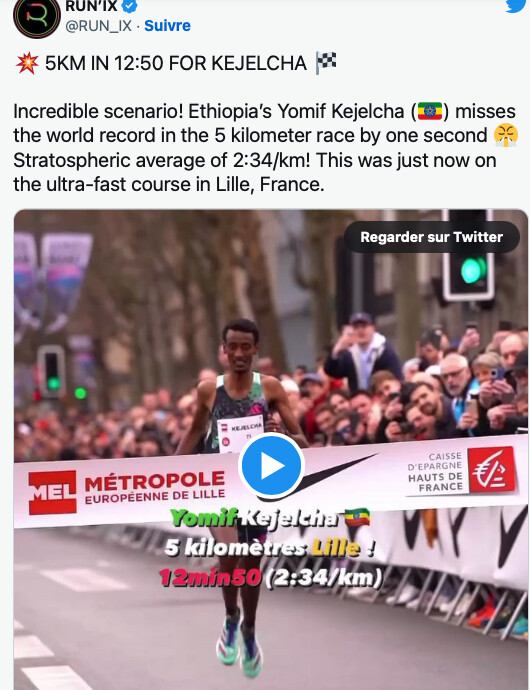
On the 5 km international of Lille, the Ethiopian Yomif Kejelcha came to fail at a second of the world record of the specialty (12'49'' by Berihu Aregawi) by completing his effort in 12'50'' (2nd world performance history) ahead of Kenyan Reynold Kipkorir (13'04'') and Ethiopian Telahun Bekele (13'07''). Already the world record holder for the Indoor Mile (3'47''01), the double world champion in the 3,000m indoors almost added a line to his list.
In the same race, French international Djilali Bedrani, second in the French Cross Court Championships last week, took 11th place in 13'42'' just ahead of his compatriot Valentin Gondouin (13'43'').
Very fast, the course also made it possible to run quickly on the half-marathon and the 10 km. Over the 21.1 km, the Kenyan Patrick Mosin won in 59'31'' ahead of his compatriots Alfred Chelal Barkach (59'32'') and Somomom Kipchogue (59'37), while the Frenchman Étienne Daguinos took 5th place in 1h1'39''.
Among the women, three-time French cross country champion Manon Trapp took third place in 1h11'26'', behind Kenyan Emily Chebet (1st in 1h07'52'') and Ethiopian Addisie Andualem (2nd in 1h07'). 59'').
Finally, in the 10 km, the Kenyan Dorcas Kimeli (30'48) won, as did the (Ethiopian Gemechu Dida for men (27'12'').
(03/18/2023) ⚡AMPCan’t Stand Black Coffee? Adding Milk May Decrease Inflammation.
A new study looks into the benefits of adding dairy to your morning cup of coffee
If your coffee ideal is one that includes a healthy dollop of milk, a recent study conducted by the University of Copenhagen may be of interest.

A team of researchers determined that the combination of milk and coffee – proteins and antioxidants – increases anti-inflammatory properties. Here’s a quick breakdown of the science:.
Polyphenols are compounds found in coffee (and other nutrient-dense foods) that lower blood pressure, reduce inflammation, and boost brain function. In the Copenhagen study, researchers examined the reaction between polyphenols in coffee beans and milk proteins.
They found that the two molecules bound together and became a powerhouse of inflammation defense. Therefore, the researchers concluded that drinking coffee with milk has more anti-inflammatory benefits than sipping coffee alone. It’s important to note that the study concerns only milk and not creamer. No research has been conducted on the latter.
Not a fan of dairy? There are other ways to increase the immune-boosting qualities of your morning cup.
Cinnamon
Try sprinkling 1/2 teaspoon cinnamon into your cup in the morning. This spice is packed with antioxidants, may help lower blood sugar levels, and even lower cancer risk. Make sure you’re using true cinnamon and not cinnamon sugar.
Nutmeg
A dash of nutmeg may help digestion, improve cognitive function, and, in some cases, relieve pain. Some studies suggest nutmeg may also improve sex drive.
Collagen Peptides
Collagen, whether it’s flavored or unflavored, mixes easily into coffee and provides protein, vitamin C, zinc, biotin, and more. Collagen may improve skin and hair, relieve joint pain and boost muscle mass.
(03/18/2023) ⚡AMPby Outside
The 2023 Barkley Marathons Has Three Finishers
This week on the rough and rugged terrain of Tennessee's Frozen Head State Park, legends were born.
Amid cold, wet weather and little sleep, John Kelly, Aurelian Sanchez, Karel Sabbe, and Damian Hall put on quite a show this week at the dastardly and often cruel ultra-distance quagmire known as the Barkley Marathons in Wartburg, Tennessee. So did Jasmine Paris, even though she didn't last quite as long as her male counterparts in what was one the best and most exciting editions of this small, quirky, and extremely grueling race yet.
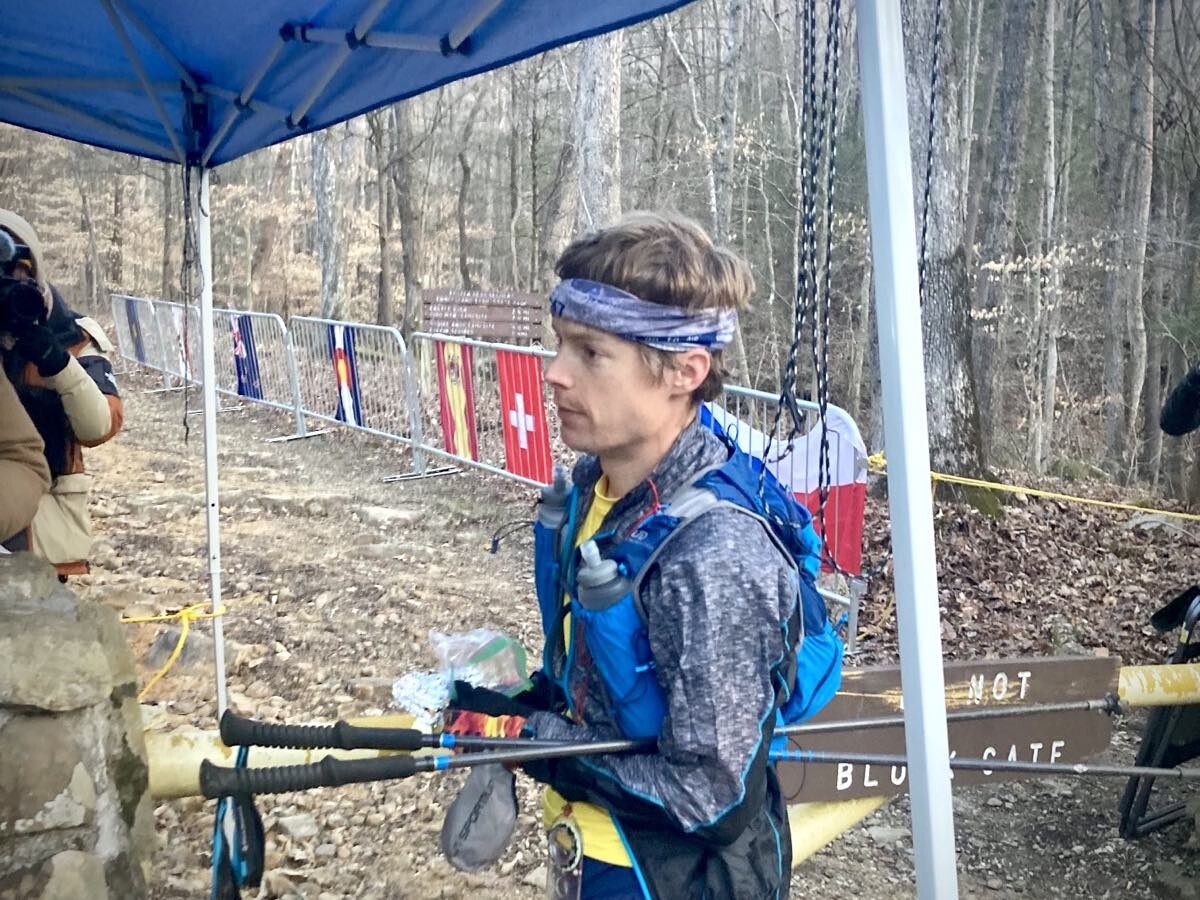
This year's race was the first time that four runners began the rarely-experienced fifth loop and only the second time three runners completed the course, which is roughly 130 miles in length and includes about 63,000 feet of elevation gain, within the 60-hour time cutoff.
Aurelian Sanchez was the first to finish the race, but not without encountering a bit of a challenge near the end after a day hiker removed one of the books, believing the race was over. The 32-year-old Frenchman thought he was doomed and returned to the yellow gate with the pages he had, only to find the book waiting for him at the finish. He tore out his page and got credit for completing the course in 58 hours, 23 minutes, and 12 seconds.
Next was John Kelly, the 38-year-old local runner from nearby Boone, North Carolina, who became a two-time finisher and only the third person to record more than one successful finish. He wound up back at the infamous yellow gate of the start/finish area about 19 minutes after Sanchez, in 58:42:23. He had been the most recent Barkley finisher back in 2017, which seems like a lifetime ago, given how COVID-19 seemed to change the scope of time.
"Call me the Benjamin button of Barkley," Kelly tweeted at one point on the last day of the race. "I'm reverse aging on course."
After that, a suspenseful hour went by in anticipation of Karl Sabbe. Finally, with less than seven minutes to spare, the 32-year-old Belgian dentist, who holds the Fastest Known Time on the Appalachian Trail, finally appeared with all the necessary pages to become the third and final finisher of the 2023 event in 59:53:33.
Hall, a Barkley "virgin" (as race director Gary Cantrell refers to participants) from the UK, started the fifth loop with 10 minutes to spare-marking the first time in the race's 36-year history that four runners were out on the final lap-but returned after 53 hours of sleep-deprived running with no pages, tapping out and calling it quits after getting lost for a long period of time.
Earlier in the event, the UK fell running champion Jasmin Paris became the second woman ever to start the fourth lap of the five-lap event in the event's history. She gave it a good go at becoming the first woman finisher, but ultimately timed out on the fourth loop when she returned with nine pages collected. She didn't finish, but she did set a new women's record after becoming only the second woman to start the fourth loop along with Sue Johnston's strong effort in 2001.
The event began on Tuesday, March 14, when about 40 intrepid runners headed out on the course to see if they could join the very exclusive finisher's club. Since the race's inception in 1986, only 18 of the roughly 1,000 runners who have attempted the Barkley Marathons have completed it.
Although Utah's Jared Campbell has finished it three times (2012, 2014, 2016), the only other runner with more than one finish, aside from Kelly, is Colorado's Brett Maune (2011, 2012).
Boulder-based Brian Metzler has run more than 75,000 miles in his life, competing in every distance from 50 meters to 100 miles, running the Rim-to-Rim-to-Rim run across the Grand Canyon and back several times, racing pack burros on many occasions and going up Colorado's Longs Peak 20 times. In 2018, he ran the Great Wall of China, completed the Leadman series and ran a 100K in South Korea. He is the founding editor of Trail Runner and the author of "Kicksology: The Hype, Science, Culture and Cool of Running Shoes."
(03/18/2023) ⚡AMPby Trail Runner Magazine
Pennsylvania woman rips fast 40 miles for her 40th birthday
Some runners celebrate reaching a new age category by heading out for their new number in minutes or covering it in kilometres; Holly Benner of Macungie, Penn. took it to the next level, ripping a speedy 40-mile trail run to celebrate her becoming a quadragenarian.
Benner covered 40 miles (64 kilometres) in just over five hours, averaging a pace of five minutes per kilometre.
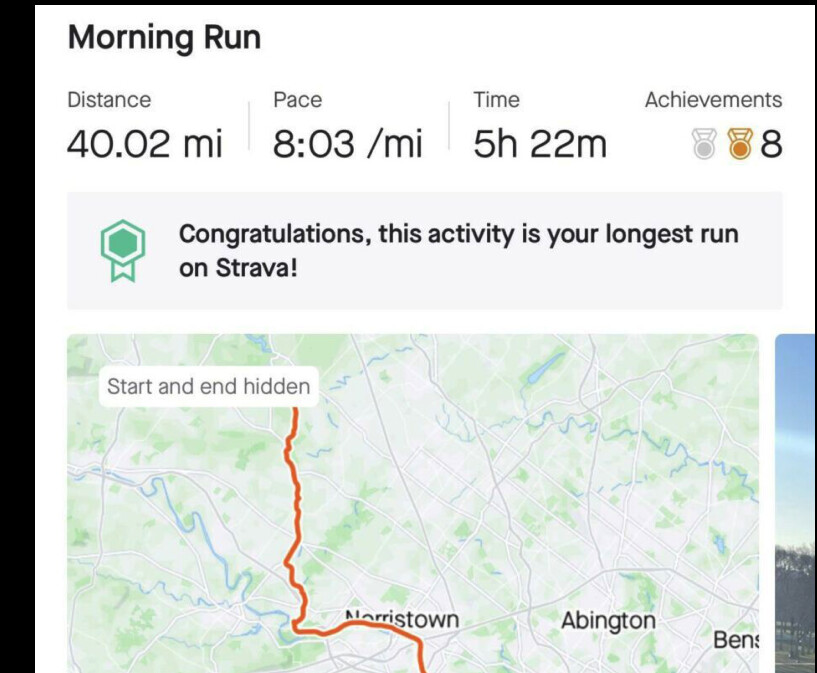
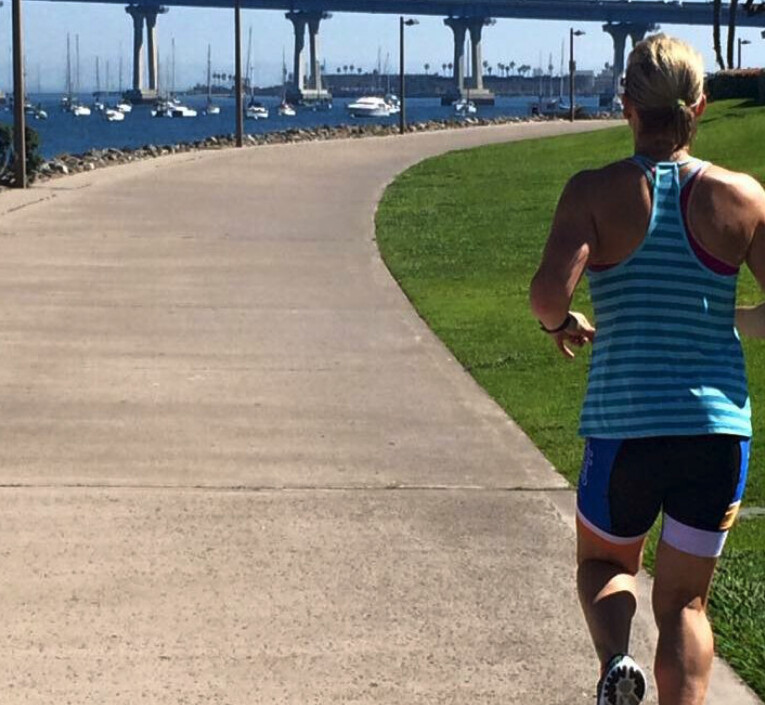
Going in, Benner intended to cover 40 miles but had no particular time goal. “I just went with the flow,” she says. “I felt great at 20 kilometres and never looked back. It’s so cool to see what our bodies are capable of.”
Benner knew she wanted to spend her birthday doing something she loved, which is how running 40 birthday miles came into her mind. “It was so much fun—it’s cool to challenge yourself,” says Benner. “I didn’t do this to prove anything.”
Benner comes from an athletic background. She was the team captain of her NCAA collegiate swim team and went on to race triathlon at an elite level before taking up trail running in 2010. She has run ultra-trail races from 50K to eight hours, reaching the podium in her last two of three races.
In December, she hit her long-time goal of a sub-three-hour marathon at the 2022 California International Marathon, finishing in 2:53:55. Benner considers herself primarily a road marathoner, but intends to get more into ultra-trail racing eventually. “My immediate goal is sub-1:20 for the half and then attempt a sub-2:45 marathon in the fall,” she says.
“There’s a few 50K’s in Canada that I have my eye on,” she laughs.
When we asked Benner what she was most excited about in turning 40, like a true masters runner, she said, “the new age category.”
(03/18/2023) ⚡AMPby Running Magazine
Cheptegei, Kiplimo To Renew Their Rivalry At United Airlines NYC Half
Standing in Times Square this morning, Jacob Kiplimo and Joshua Cheptegei looked like any other tourists visiting one of this city's most famous landmarks. Their hands thrust into their jacket pockets to ward off the late winter cold, the two Ugandans took in the sights while engaging in friendly conversation and taking a few selfies. Neither had ever been to New York City.
But on Sunday at the 16th edition of the United Airlines NYC Half, America's largest half-marathon with about 25,000 finishers, they will return to their more familiar roles as rivals. Kiplimo, 22, the reigning World Athletics half-marathon and cross country champion, and Cheptegei, 26, the reigning Olympic and World Athletics 10,000m champion, will face each other again just 29 days after the World Athletics Cross Country Championships in Bathurst, Australia. There --in hot, humid and windy conditions-- Kiplimo won the gold medal in a last-lap breakaway relegating Cheptegei, who was the event's reigning champion, to the bronze medal position. Both are savoring the chance to race head to head again, but their rivalry is clearly a friendly one.
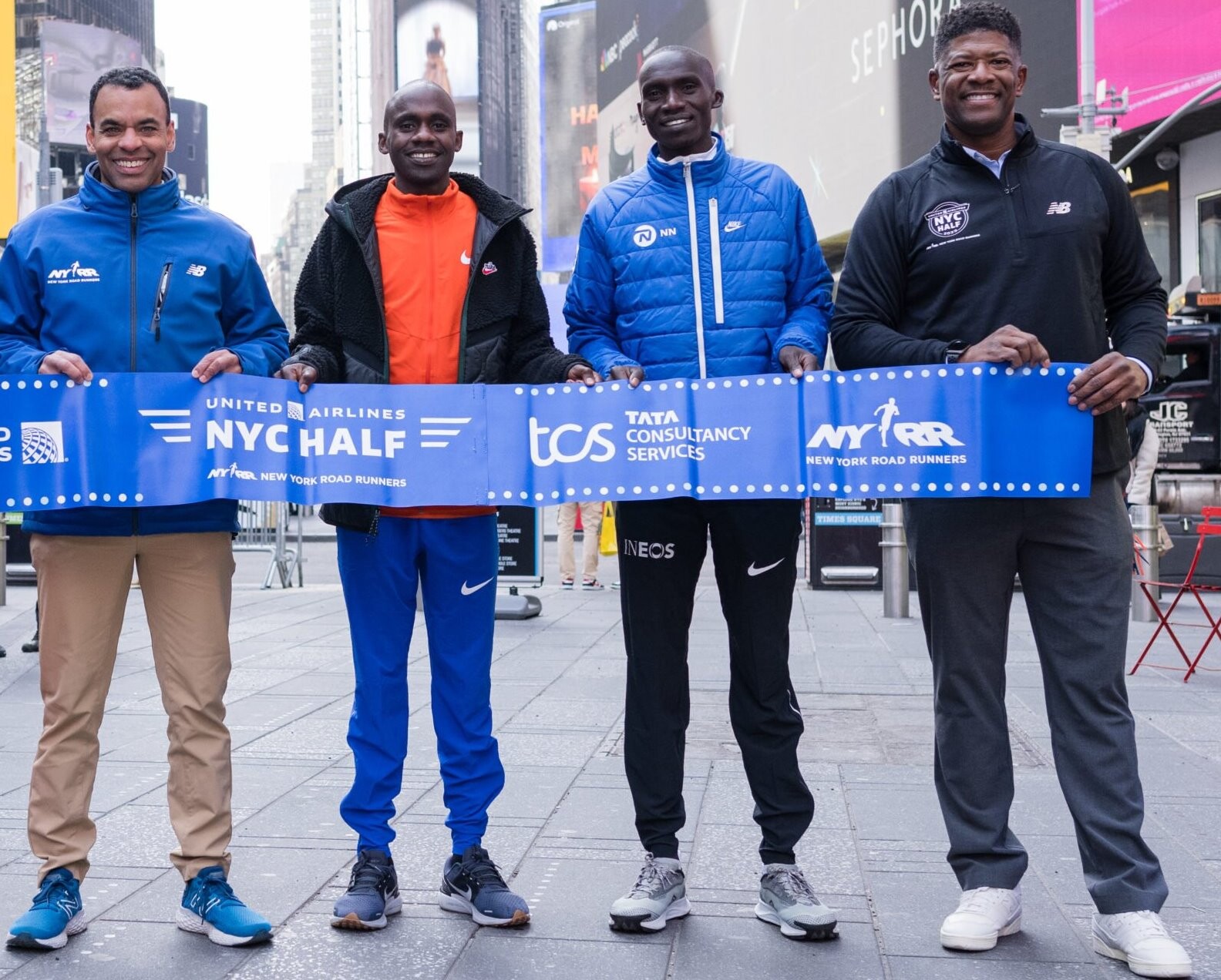
"I'm happy to be competing together with Joshua," said Kiplimo, the world record holder for the half-marathon, with a relaxed smile. He beat Cheptegei in 2020 World Athletics Half-Marathon Championships where he was the surprise gold medalist and Cheptegei finished fourth in his first and only half-marathon. He added: "On Sunday we're going to try our best, I'm going to try my best."
Cheptegei said, "absolutely, yes," when asked if he was motivated to race against Kiplimo. "I would really give everything to win," he told Race Results Weekly. "But you never know what goes in the race."
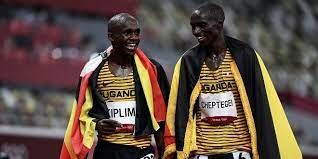
According to the respected statistics website Tilastopaja Oy, Cheptegei has a 6-0 record over Kiplimo in track races at 5000m and 10,000m. In the half-marathon, Kiplimo won in their only meeting, and at the World Athletics Cross Country Championships they are tied 1-1. Cheptegei was the gold medalist in Aarhus, Denmark, in 2019 where Kiplimo took the silver.
But their biggest rival on Sunday just might be the course. When the race debuted as a summer event back in 2006, the course went from Engineers' Gate in Central Park to a stretch of the West Side Highway just north of Battery Park in lower Manhattan. Runners enjoyed a total elevation loss of 30 meters, and in the final 10 kilometers the athletes were often helped by a tailwind as the prevailing winds in New York City come from the north and west. But in 2018 New York Road Runners changed the course to encompass more of the city's residential neighborhoods, and it now goes from Prospect Park in Brooklyn to Central Park in Manhattan. The opening nine kilometers feature several significant hills, including a steep climb up the Manhattan Bridge where the runners cross from Brooklyn to Manhattan.
"I saw in the TV that some is a little bit tough," Kiplimo said of the course. He added: "I think it will be very difficult, but actually for me it's not so difficult because we'll just be running up and down. It's almost the same (as) World Cross."
Cheptegei, who has reached the point in his track career that he has begun thinking about his marathon debut, didn't seem too worried about the course and was already looking ahead to a possible run at the TCS New York City Marathon which also has a hilly course.
"They haven't told me so many things about the course," Cheptegei said. "They told me about the New York full marathon course, where the race is mostly decided, especially on the climb." He continued: "About Sunday, really excited to run my second half-marathon. I've really thought about it, and maybe in the future when I go to marathons maybe New York can be my final destination."
Both men said they had recovered well since their race in Bathurst, and Cheptegei said he had picked up some additional fitness.
"I think I had a lot of time to recover," he said. "I had to continue with my training because I was sure that I was actually going to be invited for the New York Half-Marathon. Everything has been going along well. My shape is actually better than cross country so I hope that I can run a good half-marathon."
NYRR is offering a $120,000 prize money purse for Sunday's race. Twenty-thousand dollars will be paid to the winners in the open male and female categories, while the wheelchair winners will receive $4,000. There is special prize money for NYRR members in the male, female and non-binary categories ($1500 for each category winner).
This year's United NYC Half comes three years after the 2020 race was abruptly cancelled at the outset of the pandemic. The 2021 edition of the race was also cancelled, and in 2022 the race was held at nearly full capacity with 22,335 finishers recorded. NYRR's new president and CEO, Rob Simmelkjaer, was clearly excited to oversee his first major event since becoming the organization's head in December, 2022.
"We can't wait to welcome 25,000 runners to the starting line," said Rob Simmelkjaer, who pronounces his last name SIM-el-care. He continued: "People are running more now than ever before."
The 2023 United Airlines NYC Half will be broadcast locally by WABC-TV channel 7 as part of their Sunday morning news broadcast. The pro races, which begin at 7:00 a.m. local time, can be streamed on both the NYRR's Facebook (https://twitter.com/nyrr) and Twitter (https://twitter.com/nyrr) pages, and will also be available via the ESPN app and the WABC website (https://abc7ny.com/)
(03/17/2023) ⚡AMPby David Monti
United Airlines NYC Half-Marathon
The United Airlines NYC Half takes runners from around the city and the globe on a 13.1-mile tour of NYC. Led by a talent-packed roster of American and international elites, runners will stop traffic in the Big Apple this March! Runners will begin their journey on Prospect Park’s Center Drive before taking the race onto Brooklyn’s streets. For the third...
more...Ethiopians poised to dominate Rome Marathon
The Acea Run Rome The Marathon has proved a happy hunting ground in recent years for athletes from the east African nation
Winners of the Rome Marathon in the past include Emile Puttemans of Belgium, Bernie Ford from Britain and Stefano Baldini of Italy. But Ethiopia has dominated in recent years and the east African nation will be tough to beat again in the 2023 event on Sunday (March 19).

Six of the last nine men’s winners and seven of the last eight women’s champions in Rome have come from Ethiopia and runners from that country lead the entries this weekend too.
Fikre Bekele will attempt to defend his men’s title whereas fellow Ethiopian Zinash Debebe Getachew leads the women’s line-up.
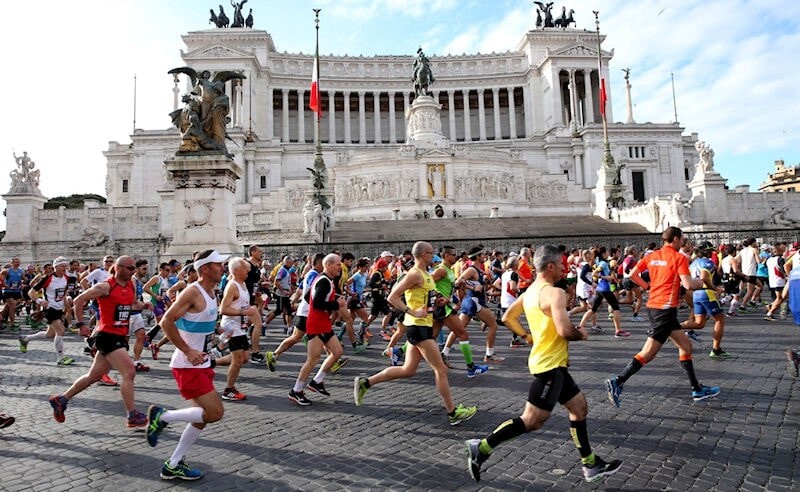
Bekele ran a course record of 2:06:48 last year in the Italian capital but has since improved his best to 2:06:16 when he won the Linz Marathon in October.
Also expected to be at the front of the 15,000-strong field are Berhanu Heye and Alemu Gemechu of Ethiopia along with Nicodemus Kimutai of Kenya. Look out too for reigning Dublin Marathon champion Taoufik Allam of Morocco.
Women’s favorite Getachew has a best of 2:27:15 but will be challenged by Brenda Kiprono of Kenya, plus Mulugojam Ambi and Amid Fozya Jemal of Ethiopia.
The women’s course record is held by Alemu Megertu with 2:22:52.
Italian interest, meanwhile, includes Nekagenet Crippa (the older brother of European 10,000m champion Yeman), Stefano La Rosa and Giorgio Calcaterra. The latter, who is now aged 51, is known as the ‘king of Rome’ as he first ran the Rome Marathon 20 years ago and has completed 330 marathons during his life, won the world 100km title three times and has notched up 12 consecutive victories in the famous 100km del Passatore ultra-marathon.
A little further down the field, all eyes will be on Ermias Ayele, a former race director of the Great Ethiopian Run who is aiming to complete the 26.2 miles barefoot in memory of the great Abebe Bikila, who stormed to Olympic glory on the streets of Rome in 1960.
“Abebe Bikila laid the foundation for the success of not only Ethiopian athletes, but Africans in general as he was the first black to win a gold medal in the Olympic Games,” he says. “However, I have always felt that he did not get the recognition he deserved. Moreover, his story always inspired me and that’s why I am planning to emulate him in the same place and the same way, where he made history and pay tribute to all he’s done for athletics and Ethiopia.”
(03/17/2023) ⚡AMPby Jason Henderson
Run Rome The Marathon
When you run our race you will have the feeling of going back to the past for two thousand years. Back in the history of Rome Caput Mundi, its empire and greatness. Run Rome The Marathon is a journey in the eternal city that will make you fall in love with running and the marathon, forever. The rhythm of your...
more...Kenyan runners Kiprotich Noah Kigen and Margaret Njugna winners of Jerusalem Marathon
Over 40,000 people took part in the 12th annual Jerusalem Winner Marathon on Friday, with Kenyan runners Kiprotich Noah Kigen and Margaret Njugna emerging as the winners with a time of 2:18:13 and 2:52:44 respectively.
Second place for the men were Spain's Chakib Achgar Iatrache with 2:25:45 and Israel's Gamber Melakmo with a time of 2:28:30.

For the women, second place went to Russia's Elena Tolstykh with a time of 2:55:31, followed by Israel's Noa Berkman with 2:59:12.
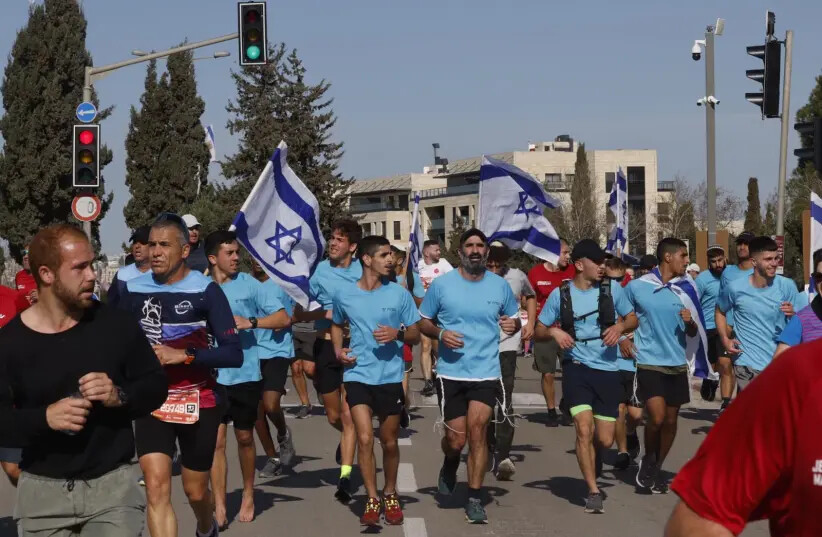
The winners won a prize of $3,750; the second place won $2,500; and the third place won $1,250.
The Jerusalem marathon, sponsored by Toto-Winner, is headed by the Jerusalem Municipality in cooperation with the Jerusalem Development Authority, with the support and assistance of the Culture and Sport Ministry and the Tourism Ministry.
(03/17/2023) ⚡AMPJerusalem Marathon
First held in 2011, the Jerusalem International Winner Marathon has become a major event with 30,000 participants, of which hundreds are elite competitors and runners from abroad. The course was especially selected to recount Jerusalem's 3,000-year historical narrative since the beginning of its existence. The race challenges runners while exposing them to magnificent views, exquisite landscapes and fascinating historical sites...
more...Galen Rupp enters Sunday’s NYC Half, his first race in four months
Galen Rupp enters Sunday’s NYC Half, his first race in four months, coming off what he called “a pretty rough” 2022.
The two-time Olympic medalist competed four times with two DNFs in the Big Apple (NYC Half and New York City Marathon) and, in the road events he did finish, results of seventh and 19th, all surrounded by neck and back pain.
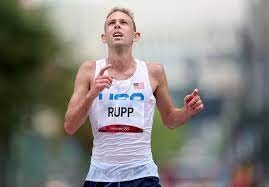
Rupp’s New York City Marathon debut on Nov. 6 was his most recent race. His back began really bothering him after 10 miles. He dropped out around the 22nd mile after it “completely locked up.”
“Obviously, the marathon left a little bit of a sour taste in my mouth,” Rupp said by phone last week. “Even the half last year in New York was a little bit of a disaster. So, definitely wanted to go back, and I thought that a half marathon would be a good distance for where I’m at right now to kind of test myself and see where I’m at.”
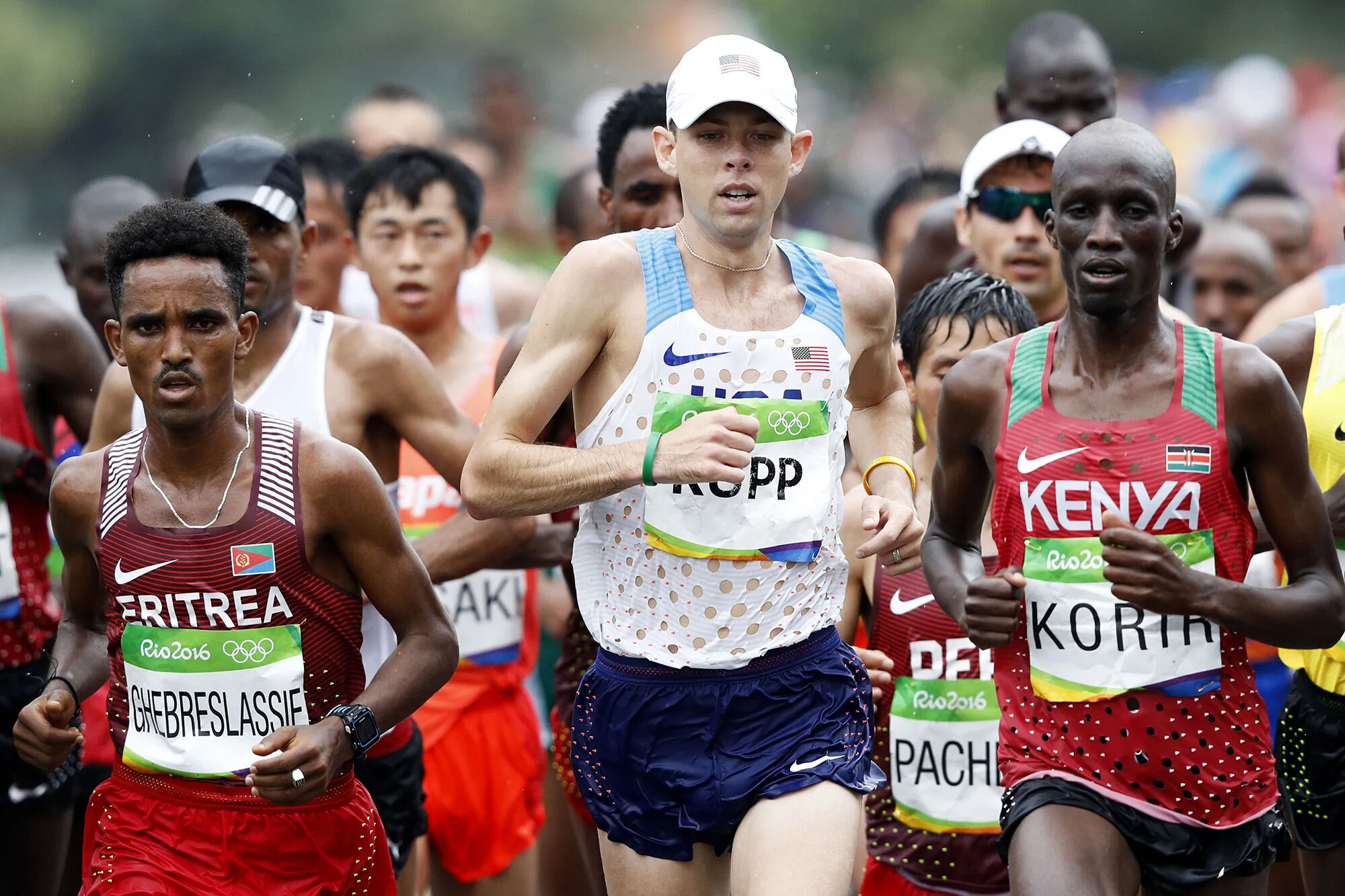
Rupp, a 36-year-old from Oregon, has taken it slow over the last few months. He didn’t run for the first two or three weeks after the five-borough marathon. By late December, he was back to a reduced but “decent volume” of miles, training remotely from Arizona-based coach Mike Smith.
He said he has been pain-free for two months — “a huge blessing” — but his training load hasn’t been close to normal going into Sunday’s 13.1-mile race.
“I’m not expecting to be in top shape,” he said. “But I am hoping to be competitive here in the half coming up and keep building from here.”
Rupp had no plans for a spring marathon as of the interview, but he did not rule out a late entry. Recognizing a need for competition, he’s eyeing more shorter distances this spring and summer.
He said it’s possible he races on the track and in the 10,000m at the USA Track and Field Outdoor Championships in July. In his last track race, Rupp placed sixth in the Tokyo Olympic Trials 10,000m, having already made the team in the marathon.
He does expect to enter a marathon this fall, leading up to next February’s Olympic marathon trials, where the top three are in line to make the team for Paris. He can become the first man or woman to win three Olympic marathon trials since it became a one-event race in 1968.
Despite last year’s struggles, Rupp was still the fifth-fastest American male marathoner in 2022 from his 19th-place finish at the world championships. He ran 2:09:36, stopping four or five times in the last several miles after missing training time due to a herniated disk and pinched nerve in his back.
He is also the fastest American marathoner in this Olympic cycle by 101 seconds, courtesy of his runner-up in Chicago in October 2021 (2:06:35).
“I still feel like I could certainly PR and certainly run a lot faster than I have in a marathon,” said Rupp, the third-fastest American marathoner in history with a best of 2:06:07 from 2018. “I want to prove to myself, more than anything, that I can get back to the level that I was in and even exceed that level.”
Next year, Rupp will try to become the second U.S. male track and field athlete to compete in five Olympics, according to Olympedia.org. He believes he can continue beyond 2024.
“I know a lot of people talk about being older, but this is really the first time I’ve been hurt significantly for an extended period of time,” he said. “I believe, deep down in the core of my being, my heart of hearts, that I still have a lot left to give in the marathon.”
(03/16/2023) ⚡AMPby Nick Zaccardi
United Airlines NYC Half-Marathon
The United Airlines NYC Half takes runners from around the city and the globe on a 13.1-mile tour of NYC. Led by a talent-packed roster of American and international elites, runners will stop traffic in the Big Apple this March! Runners will begin their journey on Prospect Park’s Center Drive before taking the race onto Brooklyn’s streets. For the third...
more...Katelyn Tuohy adds two more NCAA titles to her resume
American collegiate track star Katelyn Tuohy added another couple of accolades to her resume over the weekend as she won the 3,000m and 5,000m at the NCAA Indoor Championships in Albuquerque, N.M. This brings her overall tally of NCAA titles to four, and she is only in her third year at North Carolina State University.
Two more championships
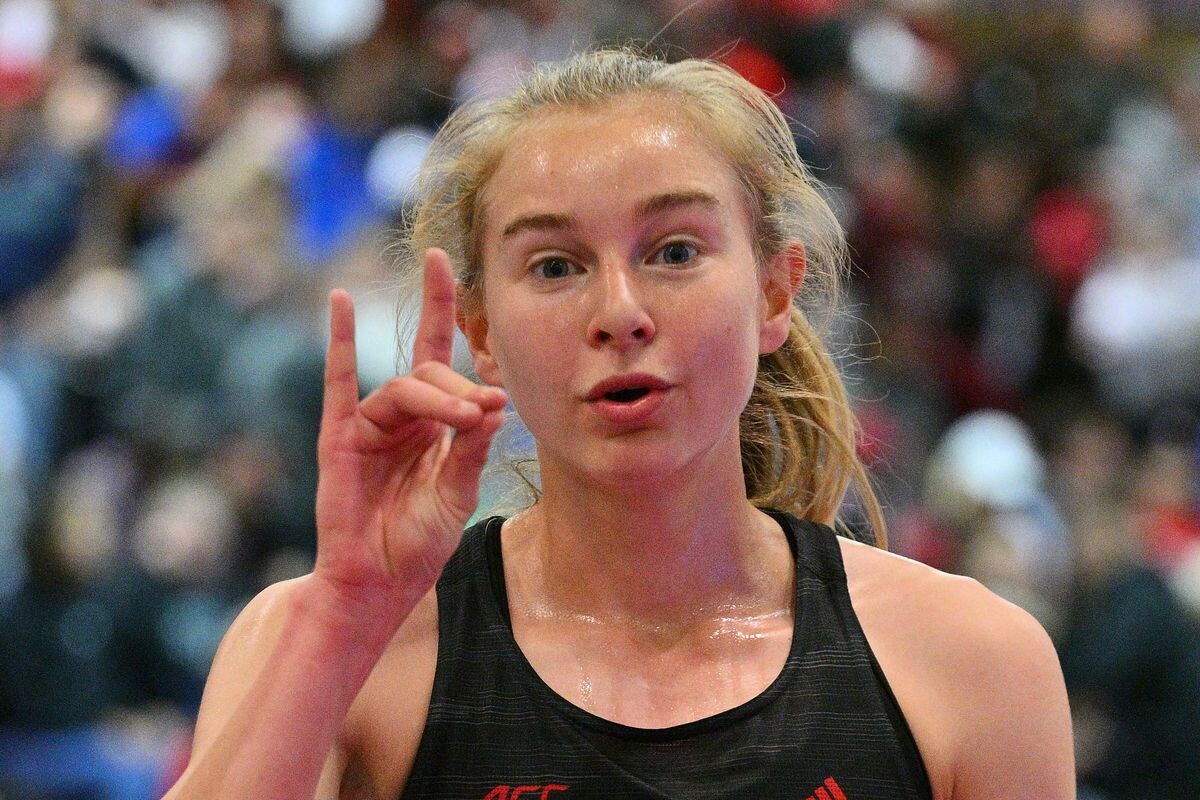
Tuohy’s two previous collegiate crowns both came in 2022, first in the outdoor 5,000m last June and then in November at the NCAA Cross Country Championship. With her wins in New Mexico, she has now won the last four NCAA national championship races that she has entered.
She kicked off her 2023 NCAA Indoor Championships campaign in the 5,000m, which took place on March 10. Tuohy took the win in 16:09.65, beating a pair of athletes from the University of Alabama by two seconds. She didn’t get too much rest ahead of her next run, as the women’s 3,000m was set for the following day. Despite the hard effort she put in the day before in the 5,000m, Tuohy cruised to the win in 9:10.07, three seconds in front of second place.
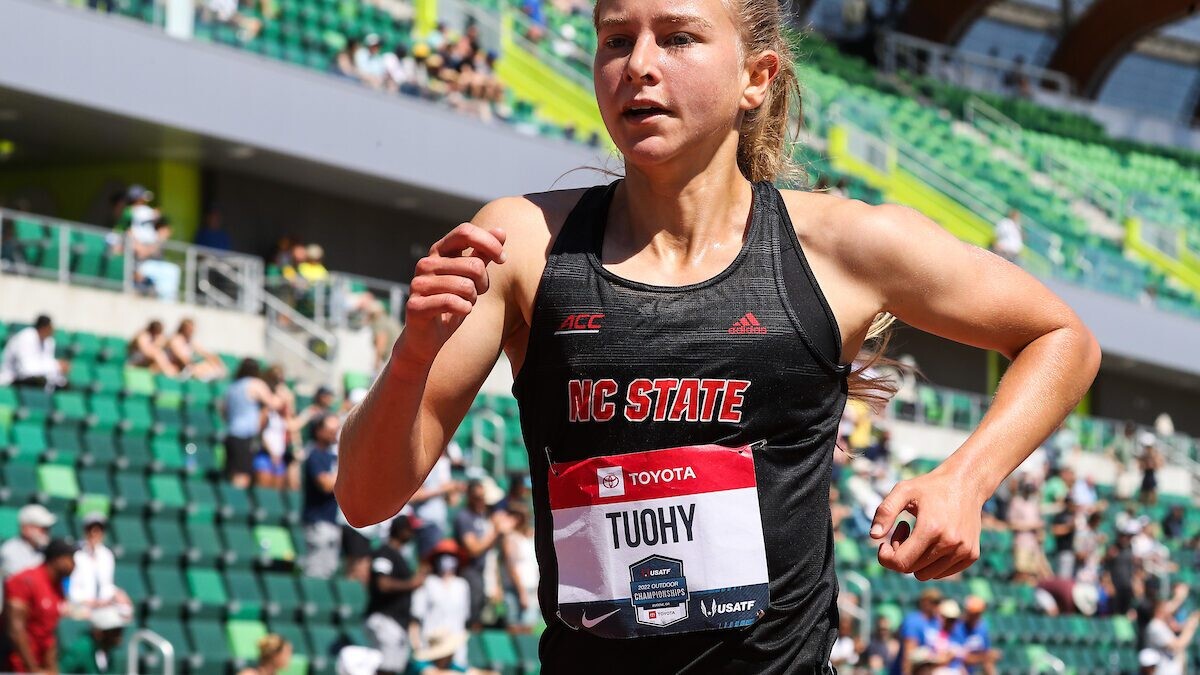
Living up to expectations
Tuohy had a remarkable career as a high school athlete, and after winning three straight cross-country national championships from 2017 to 2019, her NCAA career was highly anticipated. For some athletes, that pressure would be too much; that has not been the case for Tuohy, who has met or exceeded expectations.
In addition to her four NCAA titles, Tuohy has run three collegiate records since joining the NC State track team, with indoor PBs of 4:06.49 in the 1,500m, 4:24.26 in the mile and 8:35.20 over 3,000m. She ran each of them earlier this year, and she still has the outdoor track season to set more records and win more titles.
(03/16/2023) ⚡AMPby Ben Snider-McGrath
Keira D’Amato withdraws from London Marathon After Knee Problem
Keira D’Amato has decided to skip the London Marathon, after inflammation in her left knee in January set her training for the April race back by a few weeks.
D’Amato, 38, said in a phone call with Runner’s World that she tweaked her knee and instead of trying to run through it, she decided to take a couple of days off. Those days turned into a couple of weeks, long enough she would have had to rush her London buildup.
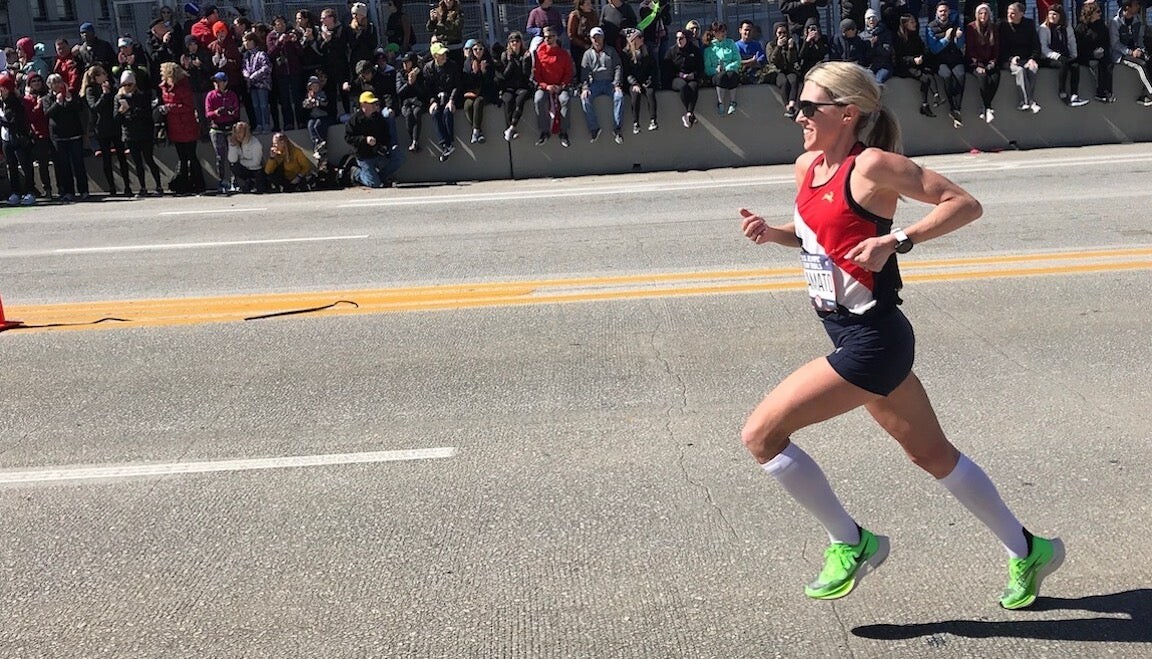
She’s done marathons off of shorter training cycles, including twice last year. She ran the New York City Marathon in November just six weeks after the Berlin Marathon. In New York, she ran 2:31:31—after running 2:21:48 Berlin.
She was also a last-minute replacement for Molly Seidel at the 2022 World Championships in July in Eugene, Oregon. D’Amato finished eighth in 2:23:34, despite being named to U.S. team less than three weeks earlier.
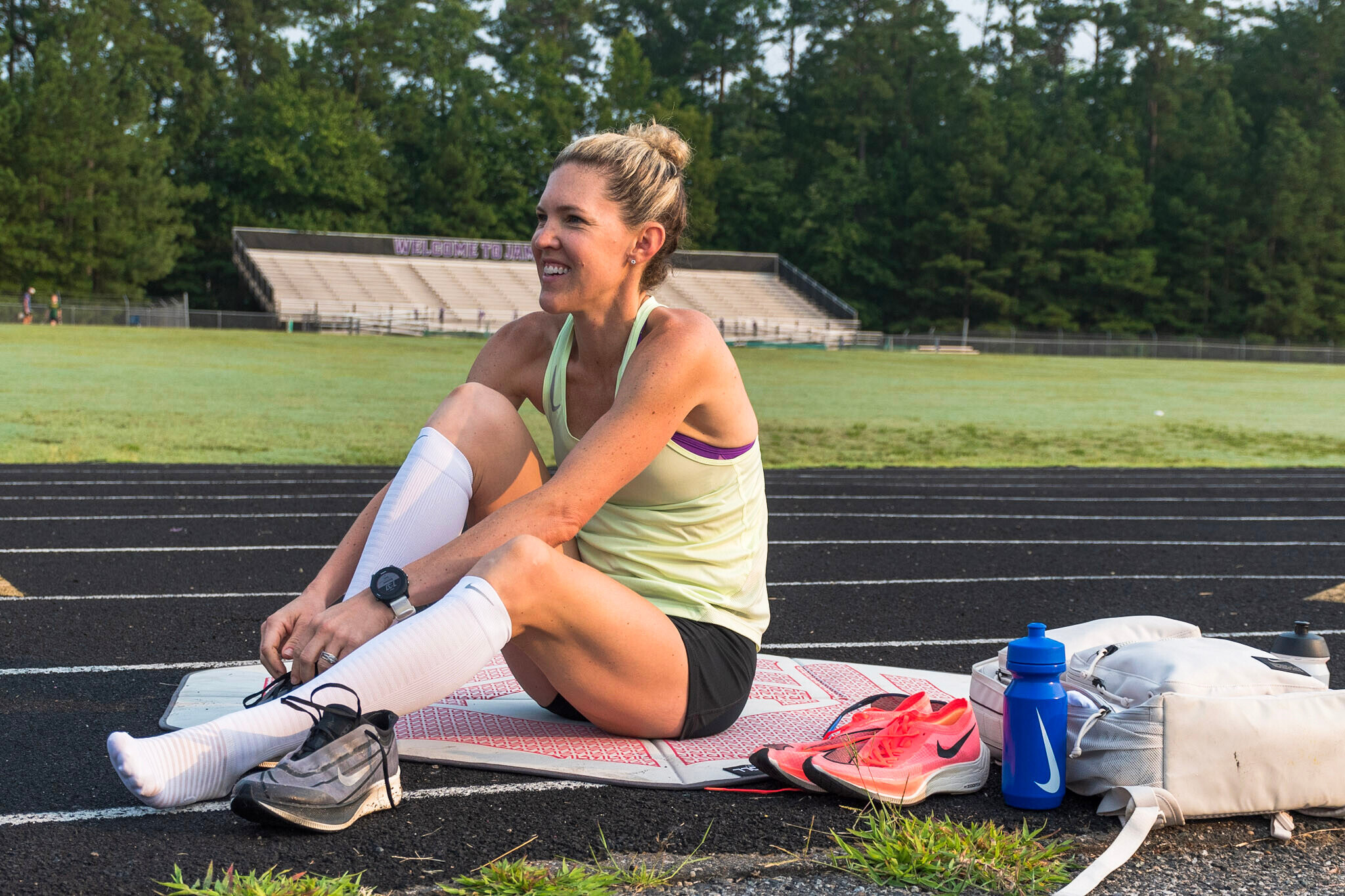
Having done those rushed marathons, D’Amato said, “I want to make sure my next one is totally right.”
She had X-rays and an MRI on her knee—both were negative. She then spent a few days at the Olympic Training Center in Colorado Springs, where she had her form and balance evaluated to make sure nothing structural was contributing to her knee pain. The evaluations turned up nothing.
“I crossed my Ts and dotted my Is,” D’Amato said. “It was a little bit of freak thing.”
She hopes her next marathon will be at the World Championships in August in Hungary. The team will be selected by a descending order time list for marathons run between December 1, 2021, and May 30, 2023. D’Amato has the second-fastest time on the list currently, 2:19:12, from her American record in January 2022 in Houston.
Emily Sisson, who is planning to run London, has the fastest time, 2:18:29. She broke D’Amato’s record in October in Chicago. The idea of a head-to-head matchup between the country’s two fastest marathoners in London had fans excited.
D’Amato, however, is looking forward. She is beginning her build now for August, and she hopes if it goes well, she’ll be racing at shorter distances on the roads through the spring and summer. She feels she has more great marathon performances in her.
(03/16/2023) ⚡AMPby Sarah Lorge Butler
TCS London Marathon
The London Marathon was first run on March 29, 1981 and has been held in the spring of every year since 2010. It is sponsored by Virgin Money and was founded by the former Olympic champion and journalist Chris Brasher and Welsh athlete John Disley. It is organized by Hugh Brasher (son of Chris) as Race Director and Nick Bitel...
more...Ruth Chepngetich earns second straight $250K payday at Nagoya Marathon
Kenya’s Ruth Chepngetich won the Nagoya Women’s Marathon in Japan on Sunday, defending the title she first claimed in 2022. The Nagoya Women’s Marathon is currently the highest-paying marathon in the world, and with her win, Chepngetich took home US$250,000 (C$344,000) for the second year in a row.
For a sport in which athlete paydays are routinely dwarfed by those in major markets like the NBA, MLB and more top leagues, Chepngetich has managed to take home a pair of massive cheques at the same race in back to back years.
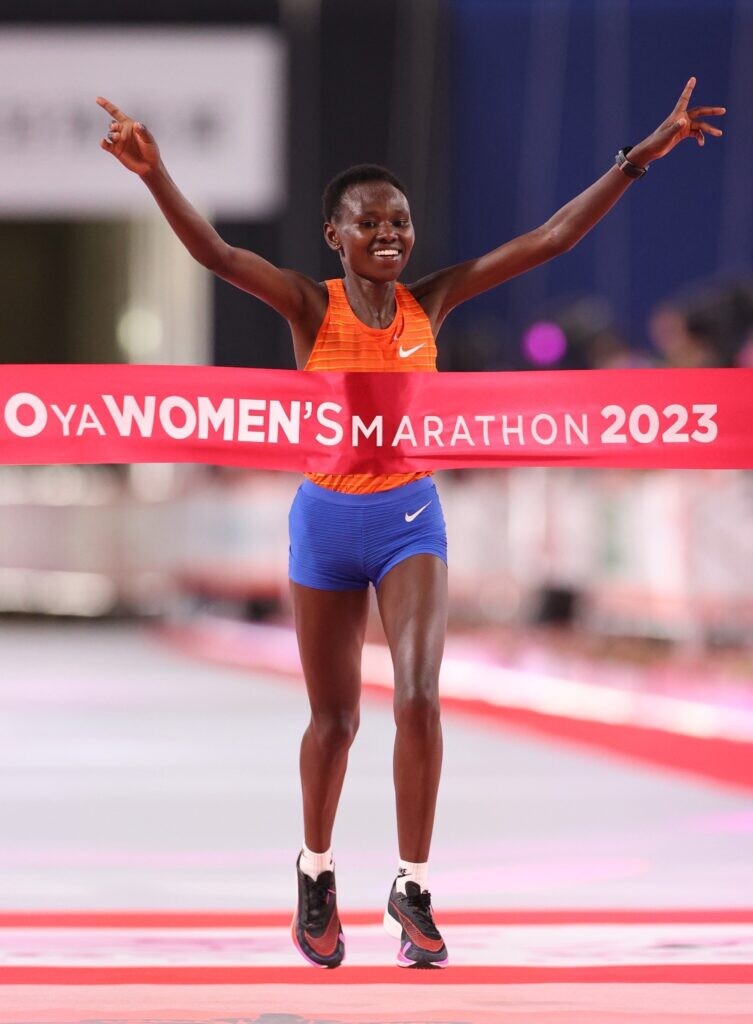
Chepngetich has had an amazing professional career already, and at just 28, she likely has many years left to add to her resume. She has run to many noteworthy results in her time as a pro, including two Chicago Marathon titles (in 2021 and 2022), a third-place finish at the 2020 London Marathon and the 2019 marathon world championship crown.
With her long list of impressive runs, she has secured multiple big paydays, including the two US$250,000 cheques in Nagoya over the past year and a pair of US$100,000 wins, thanks to her two Chicago Marathon titles. In the last year alone, Chepngetich has won US$600,000, solely from her Nagoya and Chicago Marathon wins.
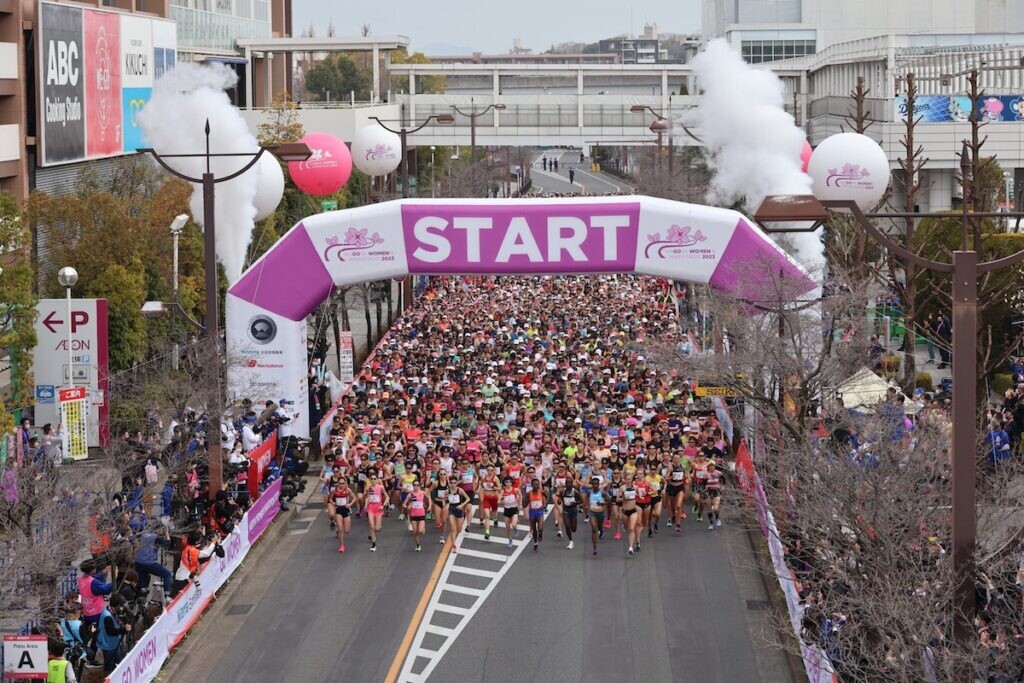
For context, the winner of the TCS Toronto Waterfront Marathon (one of Canada’s biggest and most highly contested road races) takes home C$25,000. That’s a nice amount, of course, but it is, amazingly, less than a tenth (accounting for the difference between USD and CAD) of Chepngetich’s total from Nagoya.
This is not to say Chepngetich did not earn such a massive paycheque. In fact, it’s the complete opposite. Runners have spent decades watching athletes in other sports earn millions upon millions of dollars, and while the Nagoya Women’s Marathon prize purse is still incredibly tiny when compared to an NBA player’s salary, it’s extremely exciting to see a runner winning so much money from a single race.
(03/16/2023) ⚡AMPby Running Magazine
Nagoya Women's Marathon
The Nagoya Women's Marathon named Nagoya International Women's Marathon until the 2010 race, is an annual marathon race for female runners over the classic distance of 42 km and 195 metres, held in Nagoya, Japan in early March every year. It holds IAAF Gold Label road race status. It began in 1980 as an annual 20-kilometre road race held in...
more...Lewa Safari Marathon back at full pace
The number of participants in this year’s 24th edition of Lewa Safari Marathon that is powered by Huawei Technologies Kenya and Safaricom PLC have been increased to 1400.
Lewa Wildlife Conservancy Chief executive officer, Mike Watson, disclosed Tuesday that participation in the event slated for June 24 at the Lewa Wildlife Conservancy, Meru County has reverted to the traditional field of 1,400 from 1,200.
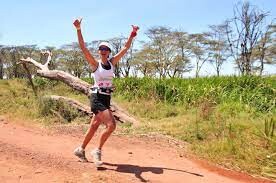
Watson noted that this is after Covid-19 cases and restrictions eased with more people also expressing interest in being part of the noble venture.
Watson announced that registration for the event, whose theme is “Ditch the Desk, run in the Wild” starts at 8.30am Wednesday and will be offered on a first-come-first served basis.
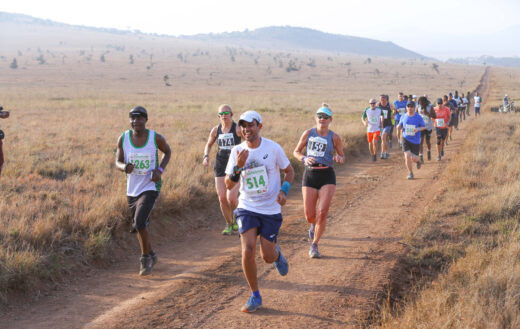
Registration will open at lewasafarimarathon.co.ke.
It being a fundraising event for wildlife conservation in and community service, registration goes for Sh20,000 per participant at 42kilometre (full marathon) and 21km (half marathon), while children’s 5km race will attract a reduced entry charge of Sh3,000 from 3,500 each.
Participants registering as a group of 10 will have a discount of Sh 2,000 each.
“This year’s event will be bigger and better considering that it will be held in person and not last year when it was staged in person and virtually,” said Watson.
”The pandemic has eased and people are keen to get out and back to nature.”
Watson was speaking during the media and sponsorship launch at Sarova Stanley where Safaricom PLC gave out a cheque of Sh10 million with Huawei Technologies Kenya handing a cheque of US$ 100,000 (Sh13 million).
Watson said an estimated US$ 240,000 (Sh 31.2 million) was raised from last year’s venture after the 2020 and 2021 editions were held virtually due to the outbreak of Covid-19.
An estimated US$ 200,000 (Sh22.6m) was raised from each of the two events in 2020 and 2021.
It was a significant drop considering that over US$ 360,000 (Sh36m) was realised from the 2019 event.
With an improvement being marked last year, Watson projected that this year’s initiative is likely to hit the US$500,000 (Sh65m) mark.
While all proceeds go directly to conservation efforts at Lewa Conservancy and Community empowerment projects, Watson said the marathon that has Olympic marathon champion Eliud Kipchoge as its ambassador, is regarded as a world class sporting event.
Safaricom PLC chief human resource officer, Paul Kasimu, said since inception in 2000, over US$ 9m has been raised for wildlife conservation and community projects around Lewa Conservancy.
"This no mean feat gives us confidence...it's not about money, but what the noble course stands for," said Kasimu, who echoed the late Nobel Prize winner Wangari Maathai's sentiments that nature is very unforgiving.
Huawei Technologies Kenya deputy chief executive officer, Sheng Kaifu said that environmental sustainability is a key pillar of Huawei’s sustainability strategy.
(03/15/2023) ⚡AMPby Ayumba Ayodi
Safaricom Lewa Marathon
The first and most distinctive is that it is run on a wildlife conservancy, which is also a UNESCO world heritage site. The Lewa Wildlife Conservancy is home to a number of endangered and threatened species- and also a catalyst for community development for its neighboring communities. For the past 17 years, funds raised from the marathon have gone...
more...World Athletics to continue Ukraine Fund to support participation at World Championships
World Athletics is set to repeat its Ukraine Fund for another year to help the country's athletes prepare for the upcoming World Championships in Budapest.
The Fund was launched last year following the Russian invasion and resulted in more than $220,000 (£185,000/€205,000) being donated to more than 100 elite athletes.
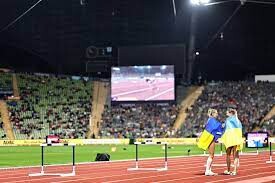
"We pledge to repeat the World Athletics Ukraine Solidarity Fund to support Ukrainian athlete attendance at the World Athletics Championships Budapest 23 and other World Athletics Series events," read a World Athletics statement.
The announcement coincides with International Women's Day, which is being celebrated today, and comes as part of the governing body's drive to further its #WeGrowAthletics campaign.
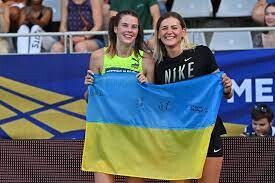
Female athletes, including Olympic bronze medal-winning hurdler Anna Ryzhykova, made up 70 per cent of the Fund's beneficiaries.
The World Championships are scheduled to take place from August 19 to 27 later this year.
The Fund was created with contributions from the International Athletics Foundation and Diamond League members.
Ukraine has competed at every edition of the World Athletics Championships since 1993 and sits 18th on the overall medals table.
The country has amassed 11 gold, 14 silver, and 16 bronze medals.
If it was not for the scheme, Ryzhykova fears her career may have finished.
"You forget about your career, about your dreams and you think about how to survive and how to help your family and friends to survive, and the World Athletics Solidarity Fund really saved our athletes’ careers, and gave us a chance to fight for our country in our own way," she said to reporters from Fort Worth where she is currently living and training, as reported by Reuters.
"They're killing my friends, my friends' relatives, many of my friends go to war, also a number of athletes were killed by Russians.
"I can't even imagine how to be near the person who supports the war or keeps silent."
Global Athlete states that 343 facilities have been destroyed since the invasion while approximately 40,000 athletes are training abroad.
(03/15/2023) ⚡AMPby Owen Lloyd
World Athletics Championships Budapest 23
From August 19-27, 2023, Budapest will host the world's third largest sporting event, the World Athletics Championships. It is the largest sporting event in the history of Hungary, attended by athletes from more than 200 countries, whose news will reach more than one billion people. Athletics is the foundation of all sports. It represents strength, speed, dexterity and endurance, the...
more...Can you train for a 10K in two weeks?
If you're running out of time for your upcoming spring race, here are some last-minute training tips.
That spring race you forgot you signed up for last fall is fast approaching, and we are here to tell you, don’t panic. Although it’s impossible to pack eight to 12 weeks of training into two, there are several things you can still do to help prepare.
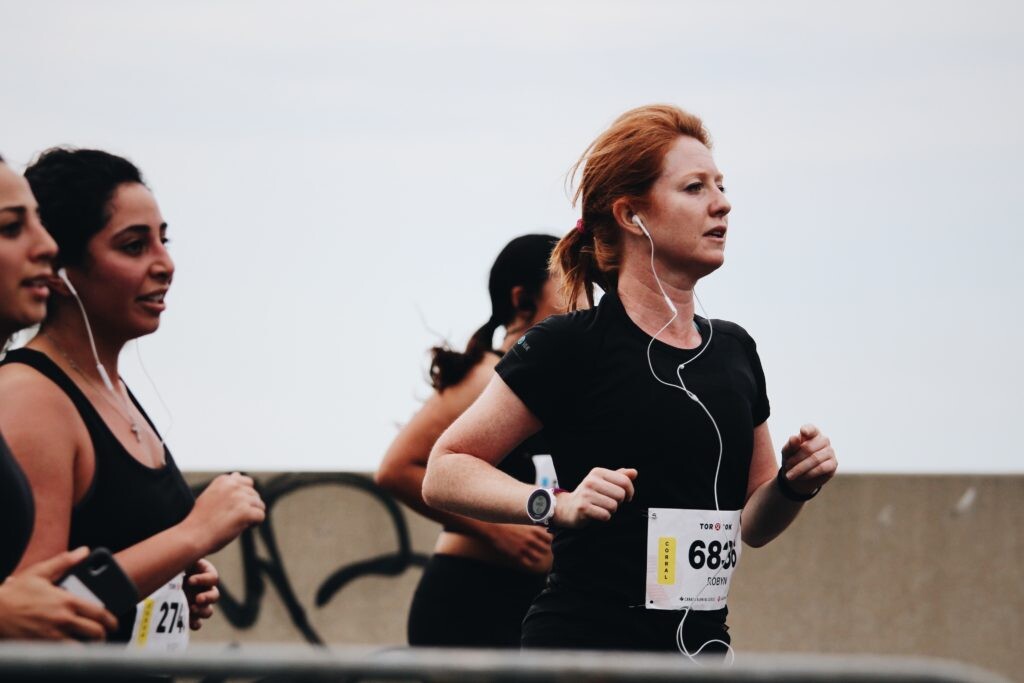
You won’t make any significant physiological gains in two weeks, but it’s better to do something rather than nothing. It is still a good idea to run a few workouts at your goal race pace to develop an idea of what type of shape you’re in, so you don’t have to find out the hard way… on the course.
If you want to make the most of your two-week training plan, run three days a week, or every other day. Separate the two interval workouts with a long, slow run of 40 to 60 minutes. Keep the pace strictly conversational. You will also want to make sure you are not doing a workout the day before the race, so it might be smart to take a rest day.
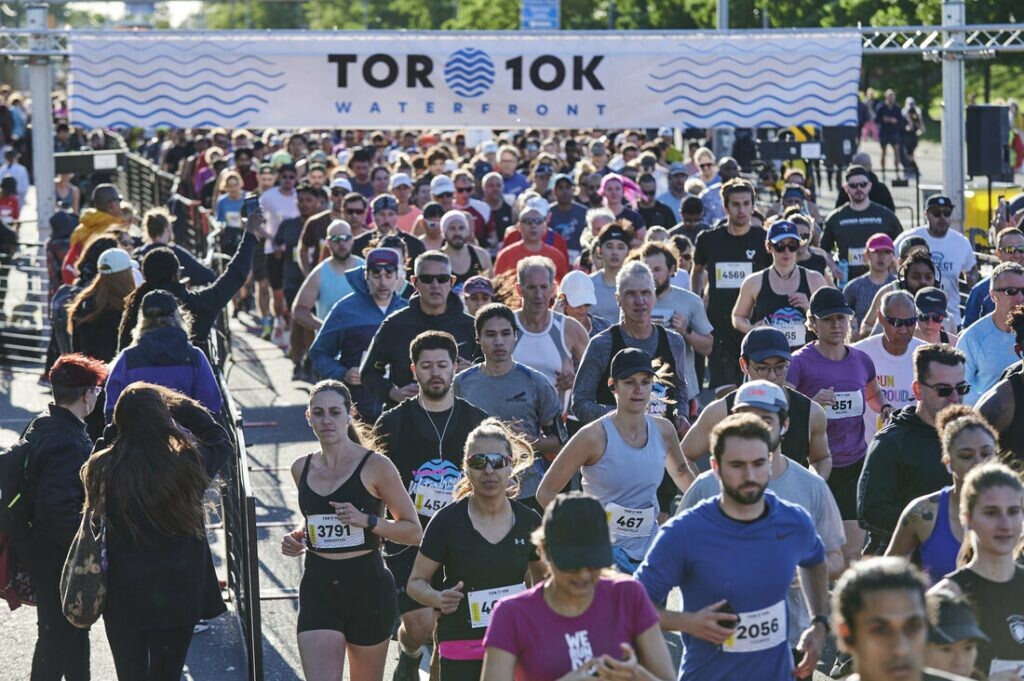
Two other things you can do to improve performance, outside of your run training, are getting lots of sleep and fuelling your body with the proper nutrients. Working on both will help your muscles feel rested and ready heading into each workout, and most importantly, the race.
(03/15/2023) ⚡AMPby Running Magazine
Peter Mwaniki Njeru wins the 19th monthly KATA time trial clocking 29:36 for the 10000m in Thika Kenya today
Peter Mwaniki Njeru improved his February time by more than six seconds during Kenyan Athletics Training Academy 19th 10,000 metres time-trial as the monthly event moved to Thika Stadium on Wednesday.
Njeru clocked 29:36.2 improving his February 29:42. He was followed closely by Nyahururu-based Joseph Mwangi who managed 29:59.1 while home-boy Zakaria Kirika finished 3rd in 30:37.1
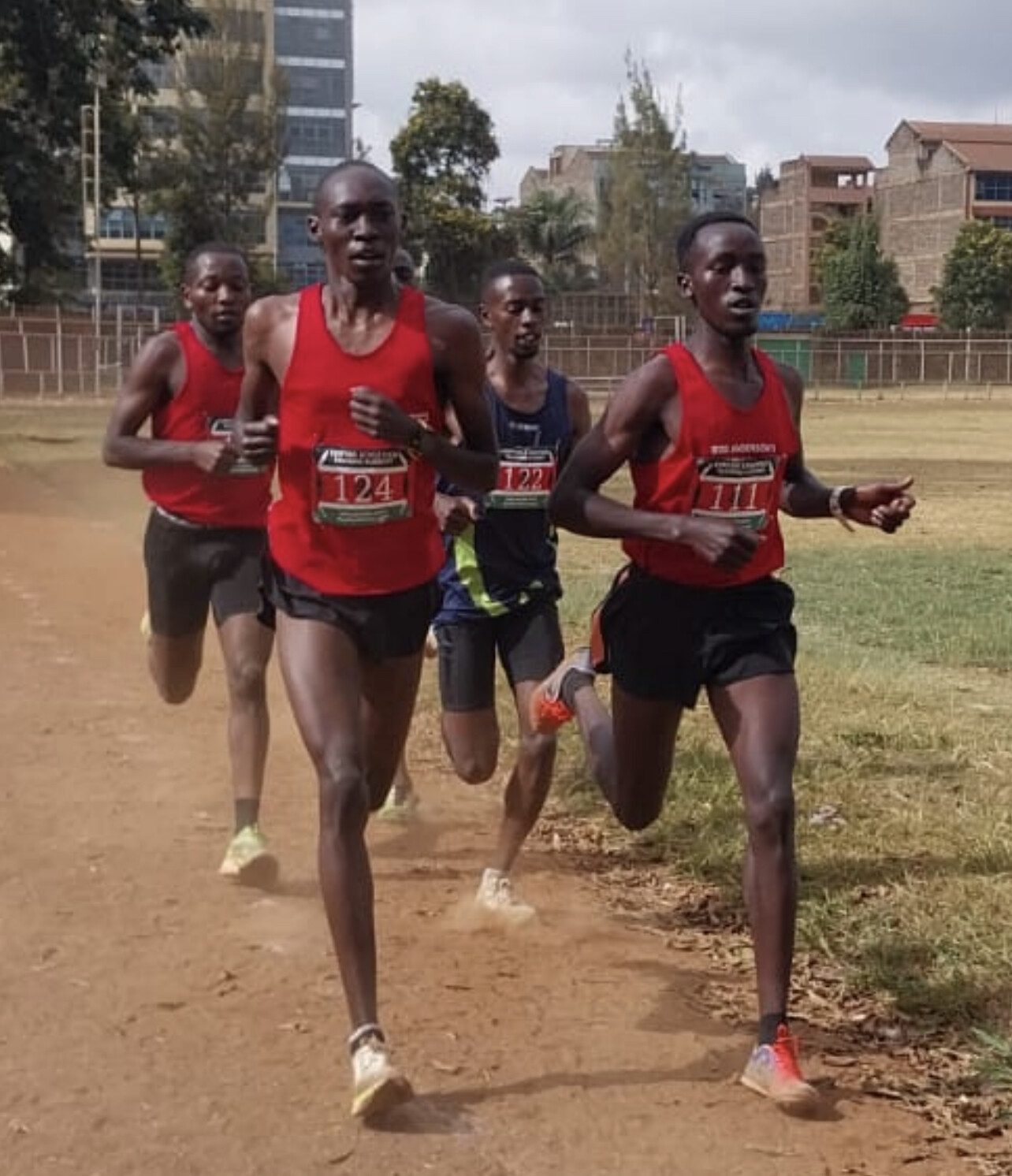
In the 5,000m, Fredrick Kiprotich out ran Boniface Mungai to finished in 15:09.2 while the latter timed 15:15.6 with upcoming Levis Kuria came third in 15:32.8.
The next time-trial will take place on the Road and is slated for April 19 on the Ndaugo-Mang’u Road.
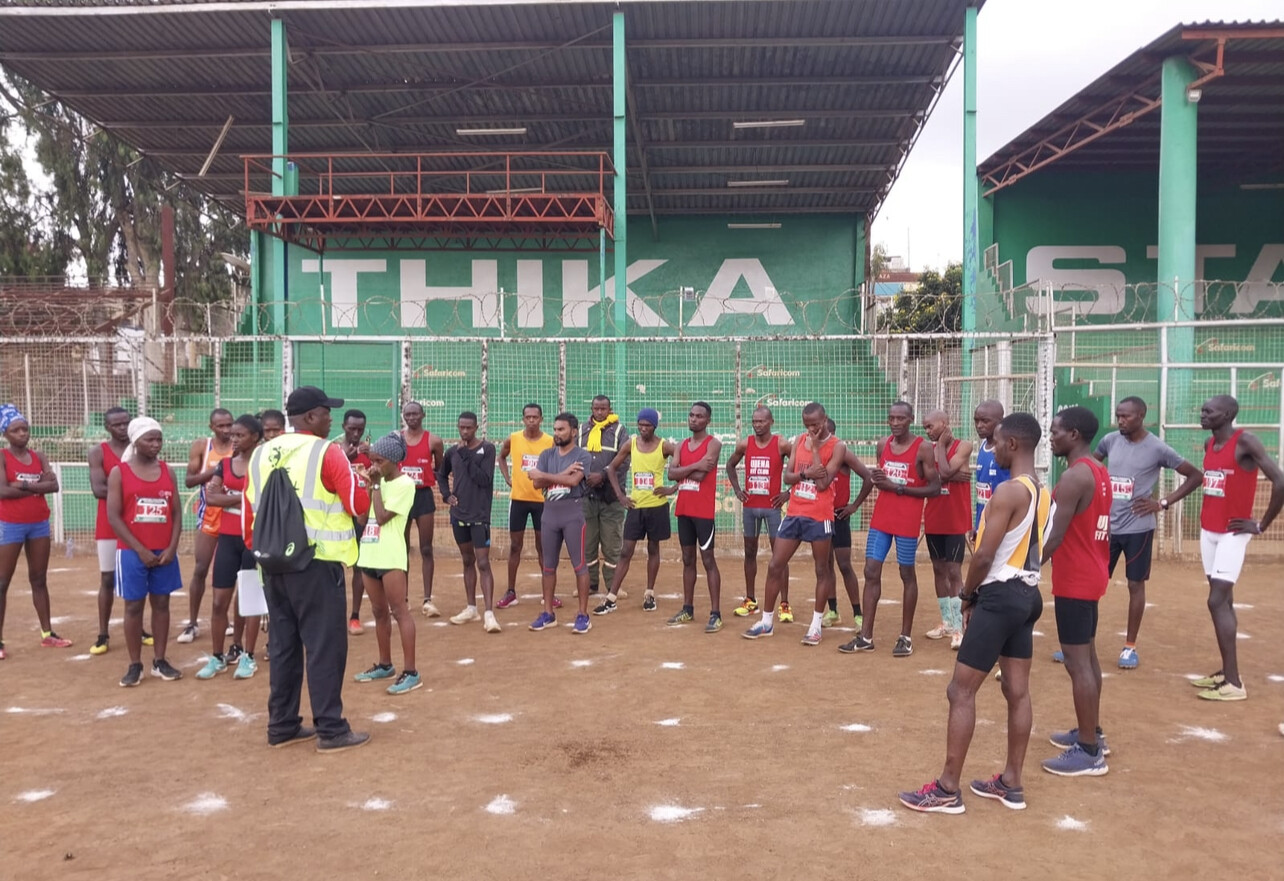
RESULTS
10,000 Metres (Bib, age, time)
1.Peter Mwaniki 112 24 29:36.2
2. Joseph Mwangi 89 20 29:59.1
3. Zakariah Kirika 103 22 30:37.1
4. Peter Mburu 121 27 30:46.7
5. Raphael Gacheru 105 24 31:40.3
6. Evans Kiguru 117 27 32:04.1
7. Anthony Mukundi 119 35 32:42.2
8. Christopher Kamande 113 35 37:42.6
5,000metres
1. Fredrick Kiprotich 107 23 15:09.2
2. Boniface Mungai 111 25 15:15.6
3. Levis Kuria 124 21 15:32.8
4. Eston Mugo 122 30 15:48.6
5. Alfred Kamande 123 25 16:17.7
6. Catherine Njihia 106 24 17:10.2
7. Paul Ng’ang’a 120 42 17:12.8
8. Peter Mukundi 90 25 17:53.7
9. Caren Chepkemoi 93 19 19:11.6
10. Amos Chirchir 110 23 20:30.0
11. Joseph Wanjiru 109 34 20:22.8
12. Hannah Njeri 84 23 22:27.6
13. Virginia Wanjiru 125 21 24:08.9
14. S. Suryawanshi 127 31 27:58.6
(03/15/2023) ⚡AMPKATA Time Trial Series
The Kenyan Athletics Training Academy (KATA) in Thika Kenya stages a monthly time trial. Starting Sept 2021 this monthly event is open to anyone who would like to get an official time on a acurant course. Results will be published at My Best Runs so race directors and other interested people can see what kind of shape our participants are...
more...Vienna City Marathon's strong women's field set for April 23rd
Women’s field includes 5k world record holder Senbere Teferi
Senbere Teferi, the 5k world record holder, is among a group of African runners who form a strong women’s elite field at the Vienna City Marathon. Austria’s major road running event will be staged for the 40th time and it could well be the women who produce the headlines at the jubilee edition on 23rd April.
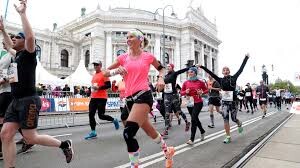
The current course record of 2:20:59 will be a target if weather conditions are suitable on the day. Organisers of the Vienna City Marathon, which is the only World Athletics Elite Label Road Race in Austria, expect to register around 35,000 entries for their event. This includes races at shorter distances staged parallel to the marathon. Registration for all races is still possible at: www.vienna-marathon.com
Senbere Teferi brings plenty of promising speed to the marathon. The 27 year-old Ethiopian clocked 14:29 in a 5k race in Herzogenaurach (Germany) in 2021. This time still stands as a world record in a women only race. So far Senbere Teferi could not transform her exciting speed to the marathon.
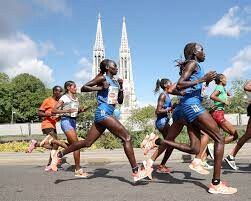
However she is eager to change this in Vienna this spring. “It is my aim to smash my personal best and win the race,“ said Senbere Teferi, who will run her third marathon in the Austrian capital. Back in 2018 she ran her debut in Dubai in 2:24:11 and then she clocked 2:25:22 in Tokyo in 2020. However her half marathon PB of 65:32 indicates that Senbere Teferi, who won silver medals at the World Cross Country Championships and in the 5,000 m final of the World Championships in 2015, should be capable of running significantly quicker.
Running a faster time is one thing, winning is another. The Vienna City Marathon will provide quite a challenge for Senbere Teferi. There are four Kenyans in the women’s field who have run faster in the marathon than the Ethiopian. Visiline Jepkesho, Magdalyne Masai, Rebecca Tanui and Agnes Keino intend to add to Kenya’s Vienna win streak. In the past five editions of the VCM the women’s winner was always a Kenyan. A year ago Vibian Chepkirui broke the course record with a time of 2:20:59.
Visiline Jepkesho is the fastest on the current women’s start list with a personal best of 2:21:37. The 33 year-old has plenty of experience in the marathon and will start a comeback in Vienna after giving birth to her two sons. She ran her PB when finishing fourth in Paris in 2017. Visiline Jepkesho has run four sub 2:23 marathons and took major victories in Rotterdam (2018) and Paris (2016).
Magdalyne Masai is another athlete who recently came back from maternity leave and who has been successful before the break. In 2019 she took the Toronto Marathon with a personal best of 2:22:16. Little over a week ago the 29 year-old showed fine form, when she clocked a half marathon PB of 67:07 in the Rome Ostia race finishing third.
Rebecca Tanui and Agnes Keino will travel to Vienna full of confidence, since both of them won their autumn marathon race with personal bests. Tanui triumphed in San Sebastián in 2:23:09 while Keino smashed the course record of the Munich Marathon with 2:23:26, leaving behind the former World Marathon Champion Mare Dibaba of Ethiopia. Keino then also won the Buri Ram Marathon in Thailand in January in 2:28:08, smashing another course record.
(03/15/2023) ⚡AMP
by David Monti
Vienna City Marathon
More than 41,000 runners from over 110 nations take part in the Vienna City Marathon, cheered on by hundreds of thousands of spectators. From the start at UN City to the magnificent finish on the Heldenplatz, the excitement will never miss a beat. In recent years the Vienna City Marathon has succeeded in creating a unique position as a marathon...
more...French runner stops to eat a crepe before winning race
The European 5K record holder, Jimmy Gressier, decided to grab some late-race nutrition at the French Cross Country Championships.
Jimmy Gressier took the win in the senior men’s race at the French Cross Country Championships in Carhaix, France, on Sunday, slowing just before the finish to grab a crepe from a spectator on the sidelines. He then proceeded to break the tape while chowing down on his unexpected snack. Gressier has become pretty well known for this type of late-race antics, and his quirky finish-line celebration on Sunday was one of several that the world has seen throughout his career.
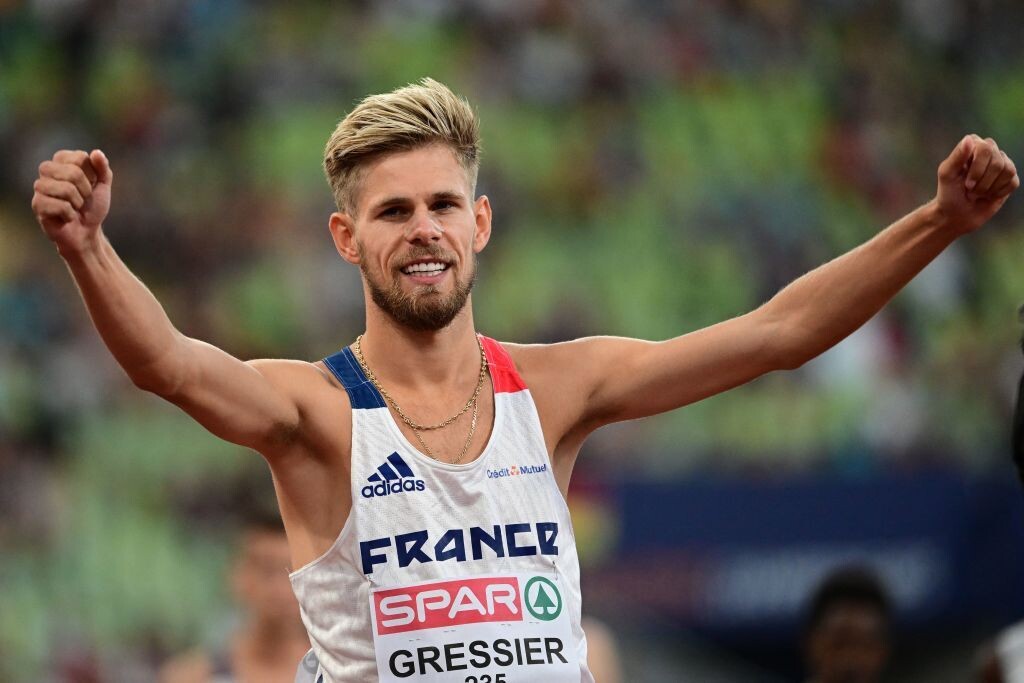
A golden crepe
In a video clip of Gressier’s win, it’s unclear whether he had planned to grab this crepe all along, or if it was a spur-of-the-moment decision. (Hopefully that was a friend who offered him the crepe, because otherwise that’s just sort of gross.) He had a lead of a few seconds and looked as though he was moving to give the crowd of spectators some high fives, but instead, he made contact with one person and came away with a crepe.
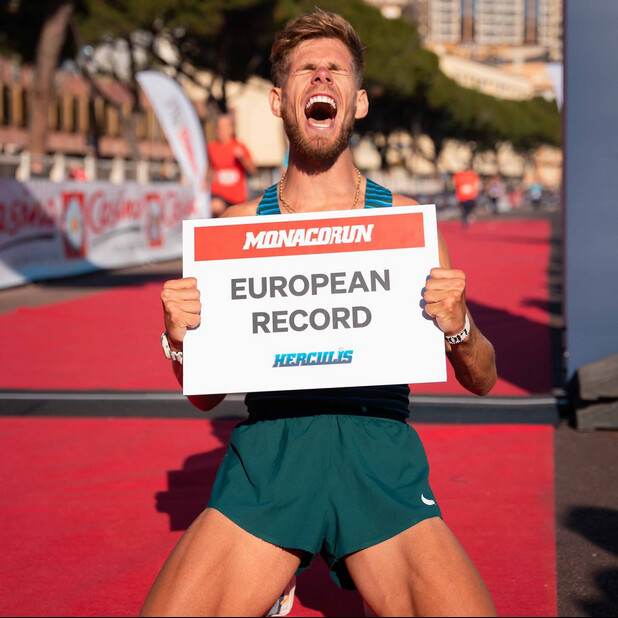
After that, Gressier took one look back, apparently decided that he had enough of a lead and slowed down to enjoy his snack and cruise into the finish line. After crossing the line, he held the crepe up in celebration before turning back to congratulate second-place finisher Markus Georger. Perhaps the funniest moment in all of this came when Gressier offered Georger and third-place runner Fabien Palcau bites of the crepe. Georger politely declined, but Palcau took Gressier up on the strange show of sportsmanship and had a bite.
Nothing new
This may be the oddest thing that Gressier has done at a finish line so far in his career, but it’s not the first time he’s put on a show in the final metres of a race. At the 2018 European Cross Country Championships, he face-planted at the line, falling into the tape to take the win. In 2019, once again at the European Cross Championships, he did his best impression of a race walker in the closing metres of the run.
At the 2021 French Cross Country Championships, Gressier had what he thought was a healthy lead in the final couple hundred metres, so he slowed to celebrate with the spectators and an event mascot. After a few moments of this premature celebration, Gressier looked back to find that his competitors were much closer than he had anticipated, so he picked up the pace once more to lock up the win.
Gressier’s career
At 25, Gressier is still quite young, but he has amassed several big accomplishments in his time as an elite runner. From 2017 to 2019, he won U23 gold in three straight European Cross Country Championships, and he added two more U23 European titles in 2019 in the 5,000m and 10,000m.
He is the French record holder in the 10K with a PB of 27:33 and he owns the European 5K record of 13:12 (he ran both of those results in February). He is undoubtedly one of the best runners France has ever produced, and it looks like he’s only going to continue to add to his already impressive resume, which means we’ll likely get to see many more strange and funny celebrations from him in the years to come.
(03/14/2023) ⚡AMP
by Running Magazine
Kara Goucher accuses Alberto Salazar of sexual assault in new memoir
Two-time U.S. Olympian and 2007 world championship silver medallist Kara Goucher alleges in her new book The Longest Race, published Tuesday, that she is the woman behind the sexual assault allegations against Alberto Salazar that resulted in his lifetime coaching ban by the U.S. Center for SafeSport in 2021.
In 2004, Goucher became the first woman to join the Nike-sponsored Oregon Project, led by Salazar, after a storied collegiate career at the University of Colorado, which saw her win three individual NCAA championships (two in track and once in cross country). In her book, she says she wanted to go to the Olympics, and that Salazar said he would help her get there.

Salazar was one of the best marathoners in the world in the early 1980s, winning the New York City Marathon three times and Boston once. He also set the American record over the 5,000m and 10,000m on the track in 1982.
Goucher reveals that she was impressed by how personable he was, and his knowledge of the sport. “Salazar went above and beyond for his athletes,” Goucher told ABC News in an interview. “He was giving personal massages to his athletes, something I’ve never seen before […] I just thought it was normal.”
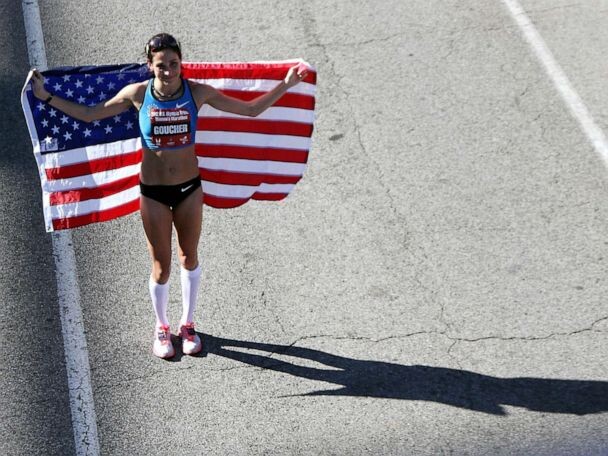
The 44-year-old retired runner, who was in her late 20s at the time, recalls Salazar touching her inappropriately during a massage at a hotel in Rieti, Italy. “It felt wrong,” Goucher expressed. “I didn’t tell anyone at the time.”
Goucher claims the same scenario happened again while the two were in Lisbon, competing at the 2009 Lisbon Half Marathon.
She ended up leaving the NOP in 2011 and did not talk about the alleged assault until she was questioned by lawyers on doping allegations against Salazar as part of a U.S. Anti-Doping Agency (USADA) probe in 2017.
In 2019, Salazar was suspended for four years by USADA for doping violations. And in 2021, the famed coach was banned for life by U.S. SafeSport for sexual misconduct. The U.S. Center for SafeSport is an independent not-for-profit that reviews allegations of sexual misconduct and can impose sanctions.
In the book, Goucher says she testified about the alleged touching in front of a U.S. Safe Sport panel and confirmed that her allegations were used as the basis for Salazar’s lifetime ban.
Salazar told ABC News in a statement that any claim made against him for sexual assault is categorically untrue. “I have never sexually assaulted Mrs. Goucher and never would have done so. The accusation is deeply hurtful, abhorrent and contrary to my fundamental beliefs as a husband, father and Catholic.”
Goucher said she is appreciative of Salazar’s guidance, but at the end of the day, “he should not be coaching.”
Her book The Longest Race was released on March 14.
(03/14/2023) ⚡AMPby Marley Dickinson
Kenyan Cybrian Kotut, the defending champion and course record holder, will return to the Haspa Marathon Hamburg on April 23
A year ago the Kenyan took the Hamburg title with a 2:04:47 performance and smashed the course record set by Eliud Kipchoge back in 2013. Kotut will face a very strong field and will need to be at his best to have a chance of a second triumph at Germany’s biggest spring marathon. With a personal best of 2:03:16 Ethiopia’s Mule Wasihun is the fastest runner entered in the event. Online registration for the 37th edition of the Haspa Marathon Hamburg is still possible at: www.haspa-marathon-hamburg.de
“A year after Kotut’s course record performance organisers can again hope for a fast race and possibly a record. A number of world-class athletes have opted to run their spring marathon in Hamburg which shows the recognition our race receives as a major international marathon,“ said chief organiser Frank Thaleiser.

Kotut, who is a younger brother of former multiple London and New York Marathon winner Martin Lee, clocked his personal best when winning Hamburg in 2022. Since then he only ran one more race, finishing with a fast time of 2:05:15 for sixth place in Amsterdam. The Kenyan is fully focussing on the Haspa Marathon Hamburg again. However with his PB of 2:04:47 the 30 year-old is not the fastest runner in the field. Instead Mule Wasihun heads the entry list. In a memorable race at the London Marathon 2019 the Ethiopian ran 2:03:16 finishing third behind Eliud Kipchoge and fellow-countryman Mosinet Geremew. With this PB 29 year-old Wasihun still is among the 15 fastest marathon runners ever. The Ethiopian has not raced internationally recently and will hope to come back with a strong performance in Hamburg.
Geoffrey Kirui is another prominent marathon runner, who will race in Hamburg for the first time. The Kenyan took the World Championships’ marathon title in London in 2017 after winning Boston in the spring. Kirui then was second and fifth in Boston in 2018 and 2019 respectively. While he could not reach those highs since the disruption caused by the pandemic, at the age of 30 he should still be capable of producing very good marathon results. Hamburg could be the place for Geoffrey Kirui to finally improve his PB of 2:06:27 from 2016.
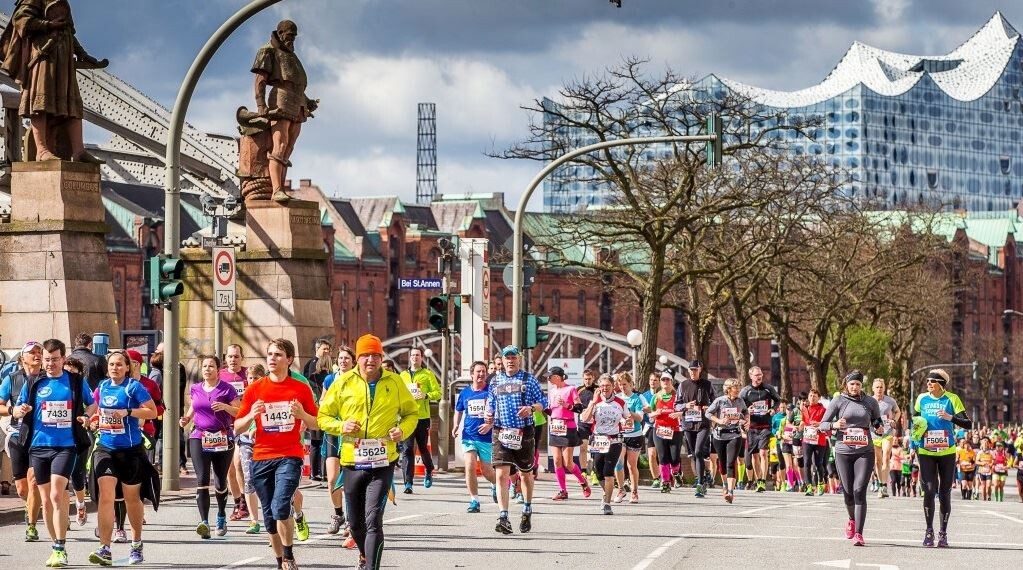
Last year debutant Stephen Kissa finished just a second behind Cybrian Kotut and clocked an Ugandan record with 2:04:48. This time there is another debutant in the field who could potentially start his marathon career with a bang: Muktar Edris will run his first marathon in Hamburg on 23rd April. The 29 year-old Ethiopian is the 5,000 m World Champion from 2017 and 2019. He has already shown his great potential on the road, when he clocked a world-class time of 58:40 at the Valencia half marathon in 2021.
With regard to achieving top finishing places the Haspa Marathon Hamburg will be a tough challenge for Germany’s European Marathon Champion: Richard Ringer, whose start had already been announced back in December, should however be able to improve his PB of 2:08:49.
(03/14/2023) ⚡AMPby Christopher Kelsall
Haspa Marathon Hamburg
The HASPA MARATHON HAMBURG is Germany’s biggest spring marathon and since 1986 the first one to paint the blue line on the roads. Hamburcourse record is fast (2:05:30), the metropolitan city (1.8 million residents) lets the euphoric atmosphere spill over and carry you to the finish. Make this experience first hand and follow the Blue Line....
more...Five ways to hit a PB at your next race
Everyone wants to run a personal best (PB) in any race they enter, but it obviously takes some work to do it. You’re not going to walk up to the start line with next to no training under your belt and cruise to the finish faster than you ever have before. There’s more you can do to increase your odds of hitting a PB than just training, though, and it’s all pretty simple. Here are five things you can do in the build to your next race to put yourself in the best position to run a PB.
1.- Nail your nutrition

You need to make sure that what you’re eating and drinking works well for you. If you’re running a shorter race that doesn’t require mid-run nutrition, you’ll just have to focus on your pre-race calories, but if you’re running anything longer than a 10K, you’ll want to at least consider carrying something to eat along the way.
The key with race-day nutrition is to practise. When you’re getting up for an early training run, set your alarm a bit earlier so you can make breakfast and figure out what foods work for you. It’s the same with mid-race nutrition in endurance races (e.g., the half-marathon or marathon)—test different options out during training runs to figure out what works best for you. For example, do you prefer gels, chews, beans or sports drinks, and which flavours?

2.- Find the right gear
Just as with nutrition, you need to go through some trial and error with your running gear to determine which shoes, shorts, shirt and shoes you plan to wear on race day. If you don’t test anything out and decide to throw together a random race outfit the morning of the run, you could set yourself up for blistering or chafing, which is never fun. Train in the gear you want to wear on race day, because it’s way better to chafe now, when you can turn around and run home to change, than when you’re in the middle of a race.
3.- Get loads of sleep
As a runner, you’re hopefully getting solid, regular sleep already, but as your race gets closer, sleep becomes more and more important. Showing up to your race tired will not end well, and the best way to prevent that is to make sleep your priority (and that means habitually going to bed early enough that you wake up spontaneously by the time you need to be up to go to work, or out for your training run). It can be tempting to sacrifice sleep to fit in training sessions, and everyone is occasionally guilty of watching a little too much TV instead of heading to bed at a reasonable hour, but try your hardest to stick to your bedtime. If you get enough sleep, you’ll set yourself up for a great day of racing. (And if you’re too nervous to sleep much the night before the race, at least you won’t be compounding a pre-existing problem.)
4.- Take rest days
We know it can be difficult to sit around and do nothing on rest days. You feel like you’re wasting a perfectly good opportunity to train, right? Well, even if it’s a beautiful day and your brain is screaming at you to lace up your shoes and head out for a run, you need to take it easy. Observing rest days is completely necessary, as it gives your body the chance to recover from your training. If you don’t recover well, you could get hurt, and that will ruin any hopes you have of running a PB in your next race.
5.- Nothing new on race day
Just like the nutrition and gear points, you need to stick with what you know when race day comes around. Your friend may offer you a gel they swear by, but if you’ve never tried it before, don’t test it out on race day. Someone gave you a new pair of shorts the night before the race? That’s great, but you’re going to have to wait to wear them. Even your warmup should be the same one that you always do. Never do anything new on race day, because the risk that it could ruin your run far outweighs any potential benefits it could offer.
(03/14/2023) ⚡AMPby Ben Snider-McGrath
Japanese woman, 64, runs three sub 3:05 marathons in two weeks
Sixty-four-year-old marathoner Mariko Yugeta is already a huge celebrity in the Japanese running community, and she continues to prove that age is just a number. On Sunday at the Nagoya Women’s Marathon in Nagoya, Japan, Yugeta accomplished another memorable feat, running three sub-3:05 marathons at three different races in a span of 14 days.
On Feb. 26, Yugeta kicked things off at the Himeji Castle Marathon, where she ran 3:04:57 (winning her 60-64 age category). The following week, Yugeta won her age category for the fourth consecutive year at the 2023 Tokyo Marathon, posting a time of 3:04:18. Seven days later in Nagoya on March 12, she posted another sub-3:05 time, in 3:04:30, winning her age category once again.
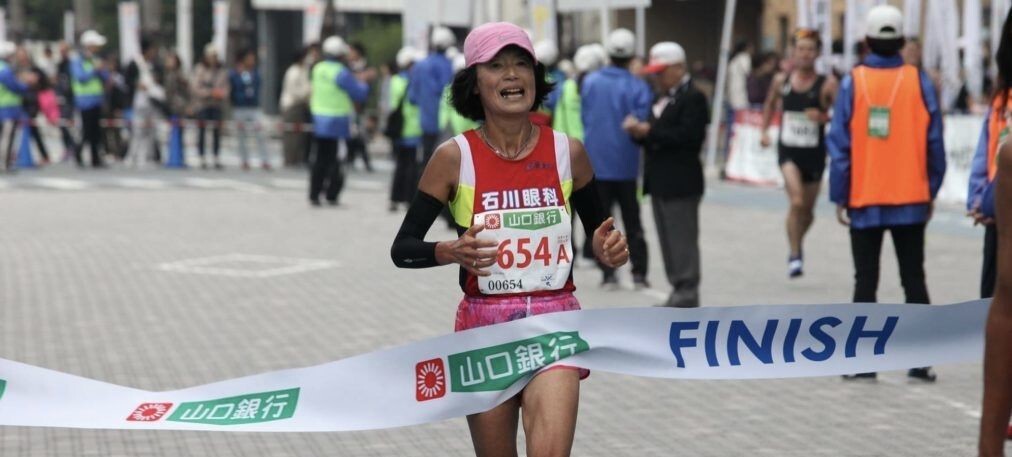
Yugeta is the first 60+ woman to break three hours for a marathon, holding the women’s 60-64 world record of 2:52:13 from the 2021 Osaka Marathon. Since her world record run, she has dipped under the three-hour mark four times.
Last year, Yugeta ran both Tokyo and Nagoya within seven days (both under 3:05) in preparation for the Boston Marathon, where she hoped to lower her world-record time; she fell short, but still won her 60-64 age category in 3:06:27.

Yugeta got into running by watching the finishers at the 1979 Tokyo International Women’s Marathon, when she was 21. She spent the next three years training, making her marathon debut in 1982 in Tokyo, where she ran 3:09:21, which was good for 34th place in the Tokyo International Women’s Marathon.
Forty years later, Yugeta is still getting faster. On May 13, she’ll turn 65 and enter the W65-69 age bracket, where she will challenge the 3:07:51 world record of her Japanese compatriot, Kimi Ushiroda.
In a 2021 interview with the nutrition brand Maurten, Yugeta said she doesn’t think about her age when she runs.
When Yugeta isn’t running, she is a mother to four children and teaches high school phys-ed, training alongside her 16- and 17-year-old high school students.
(03/13/2023) ⚡AMP
by Marley Dickinson
Nagoya Women's Marathon
The Nagoya Women's Marathon named Nagoya International Women's Marathon until the 2010 race, is an annual marathon race for female runners over the classic distance of 42 km and 195 metres, held in Nagoya, Japan in early March every year. It holds IAAF Gold Label road race status. It began in 1980 as an annual 20-kilometre road race held in...
more...Seven tips for resuming marathon training after illness or injury
Dealing with an illness or an injury in the middle of your marathon build may temporarily halt your training, and it can suck the joy out of being a runner. Getting back to training may be very challenging, but as someone who has had to take time off for illness and injury, I’m here to share some tips that will help you get back to training after a hiatus.
1.- Take it one day at a time
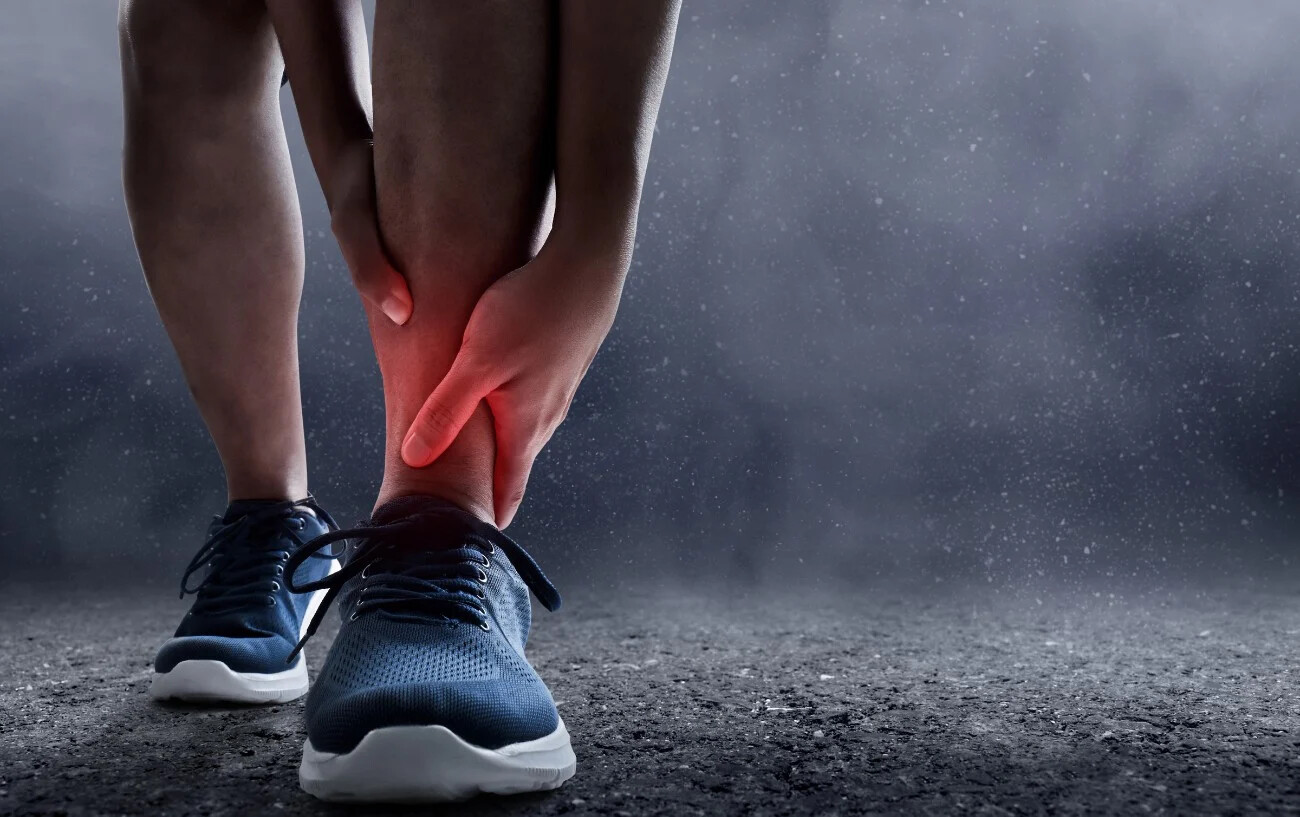
The main thing is to be as consistent as possible. Don’t overwhelm yourself with thoughts of how you are going to complete a marathon–focus instead on your daily training runs, and try to enjoy them as much as you can.
2.- Know your limits
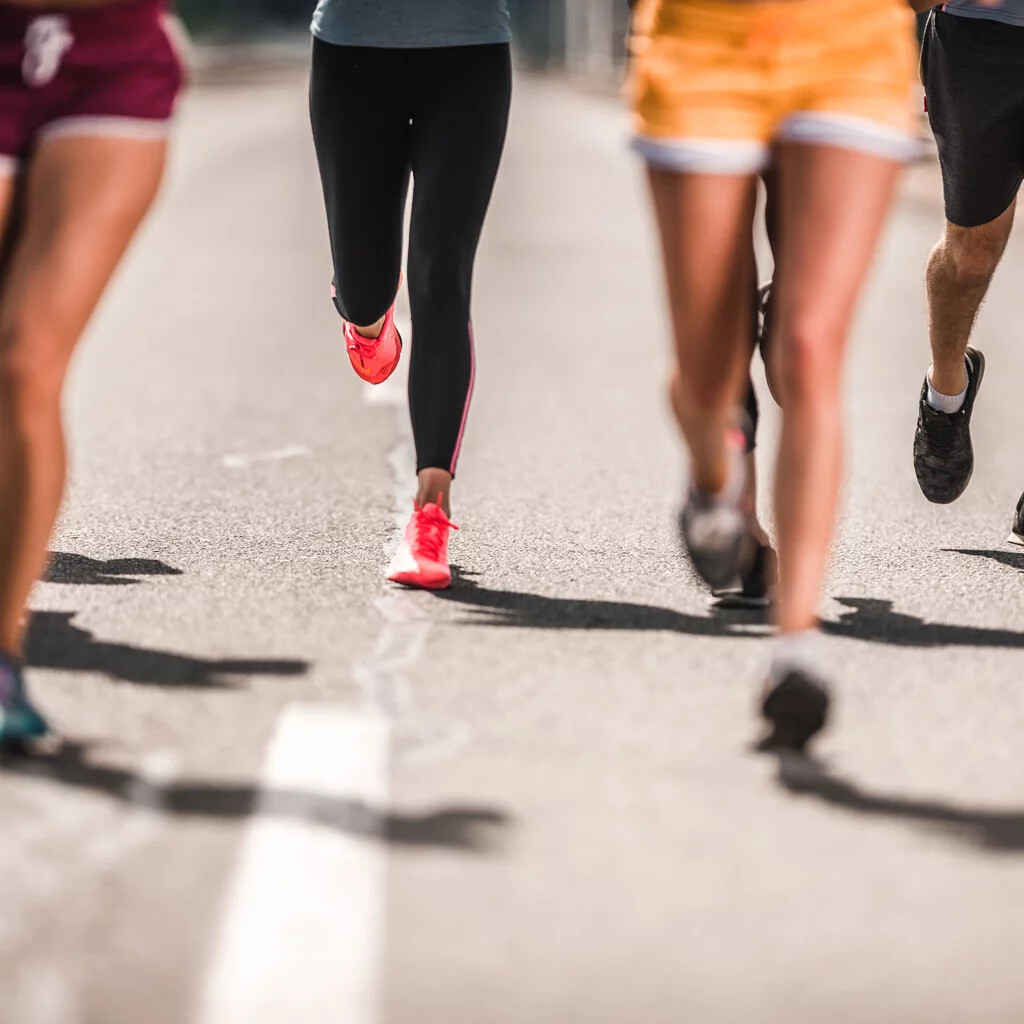
Recognize when you need to take it easy. If you are training for a marathon after an illness or injury, it’s important to be kind to yourself. If you start to feel like your runs are not enjoyable or you don’t feel good running, take it easy for a few days. You may need to regroup and take a few days off, so you can come back stronger.
3.- Don’t worry about your pace
When you first start running after taking time off for illness or injury, you will not be as fast as you used to be. Without a doubt, getting your pre-injury or pre-illness speed back will take time. Therefore, it’s best not to be too concerned about your pace. You must realize that your speed will come back. Until then just focus on getting yourself to the start line of your marathon in the best possible shape, given the circumstances.
4.- Build mileage and intensity gradually
Of cousre you will want to do as much as you can, once you feel better or your injury heals. However, you must take a gradual approach to increasing your intensity and duration so that you don’t end up right back where you started. Therefore, be sure to give yourself plenty of time to get marathon-ready and don’t schedule your race too soon (assuming you’re not already registered–and if you are, review the previous points).
5.- Stay in touch with your health care practitioner
Whether it’s your physiotherapist or your doctor, you must be open with them about your training schedule and race plans. Be sure to follow their advice so that you have the highest chance of getting to the start line healthy. (Hopefully they are experienced in dealing with running injuries and are supportive of getting you back to training as soon as possible.)
6.- Work with a knowledgeable coach
Ideally, you want to pick a coach who has dealt with similar challenges as you are facing. This will allow you to relate to them better, and they to you. Your coach should have an understanding of what you are going through, so they can develop an effective training program for you.
7.- Revise your race goal
You’ve been through a lot. Be proud of making it to the start line, and when you finish, remember to be grateful for making it to the finish line. Make sure your goal for the race is realistic, based on what you’ve overcome and how much training you’ve been able to do. You probably won’t achieve the goal you had originally set for this race, but keeping track of your progress will allow you to set an attainable race goal.
Dealing with an illness or an injury is not fun. However, with the right approach to your training and recovery, you will find yourself at the next start line and finish line healthy again.
(03/13/2023) ⚡AMPby Yana Hempler


